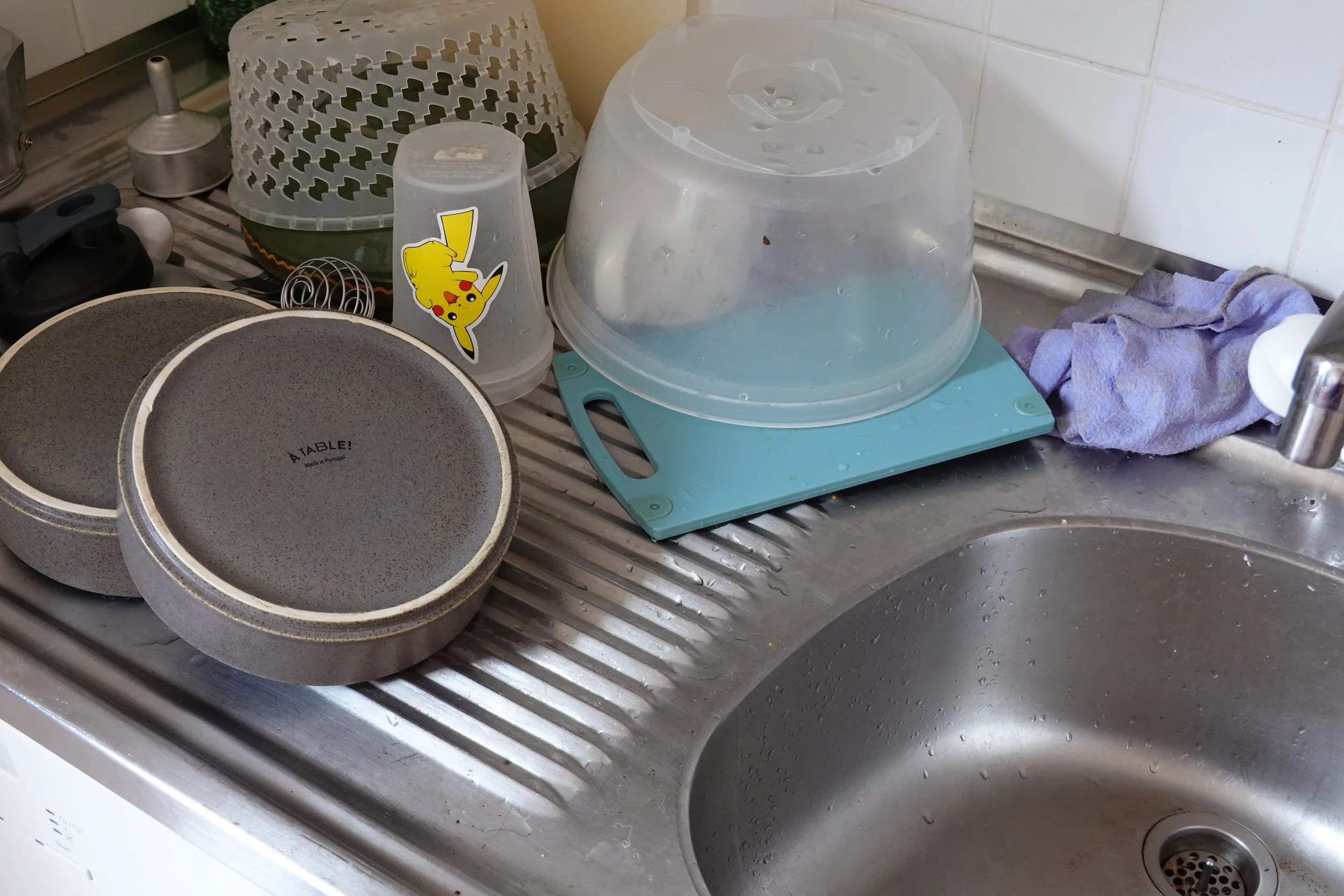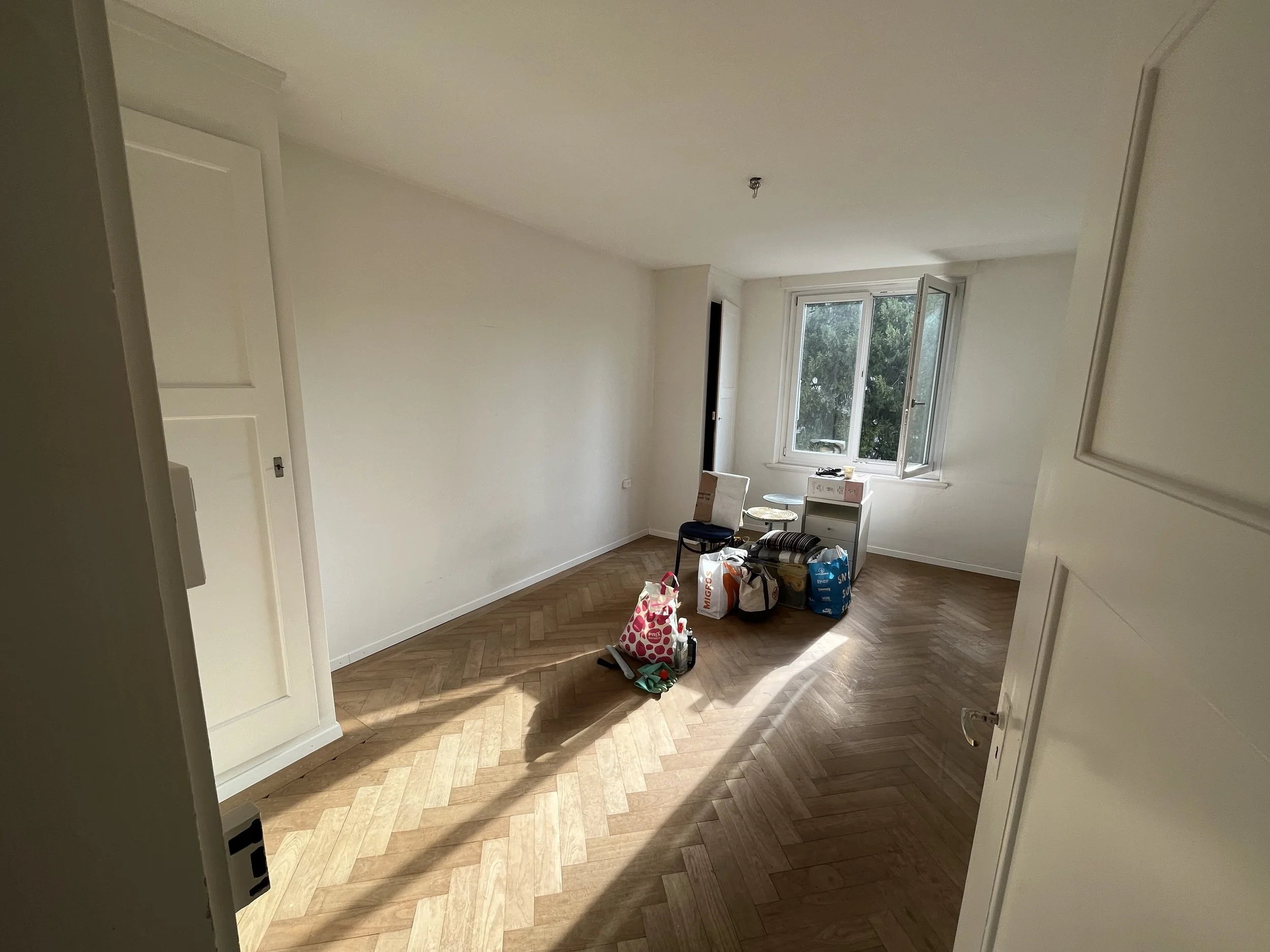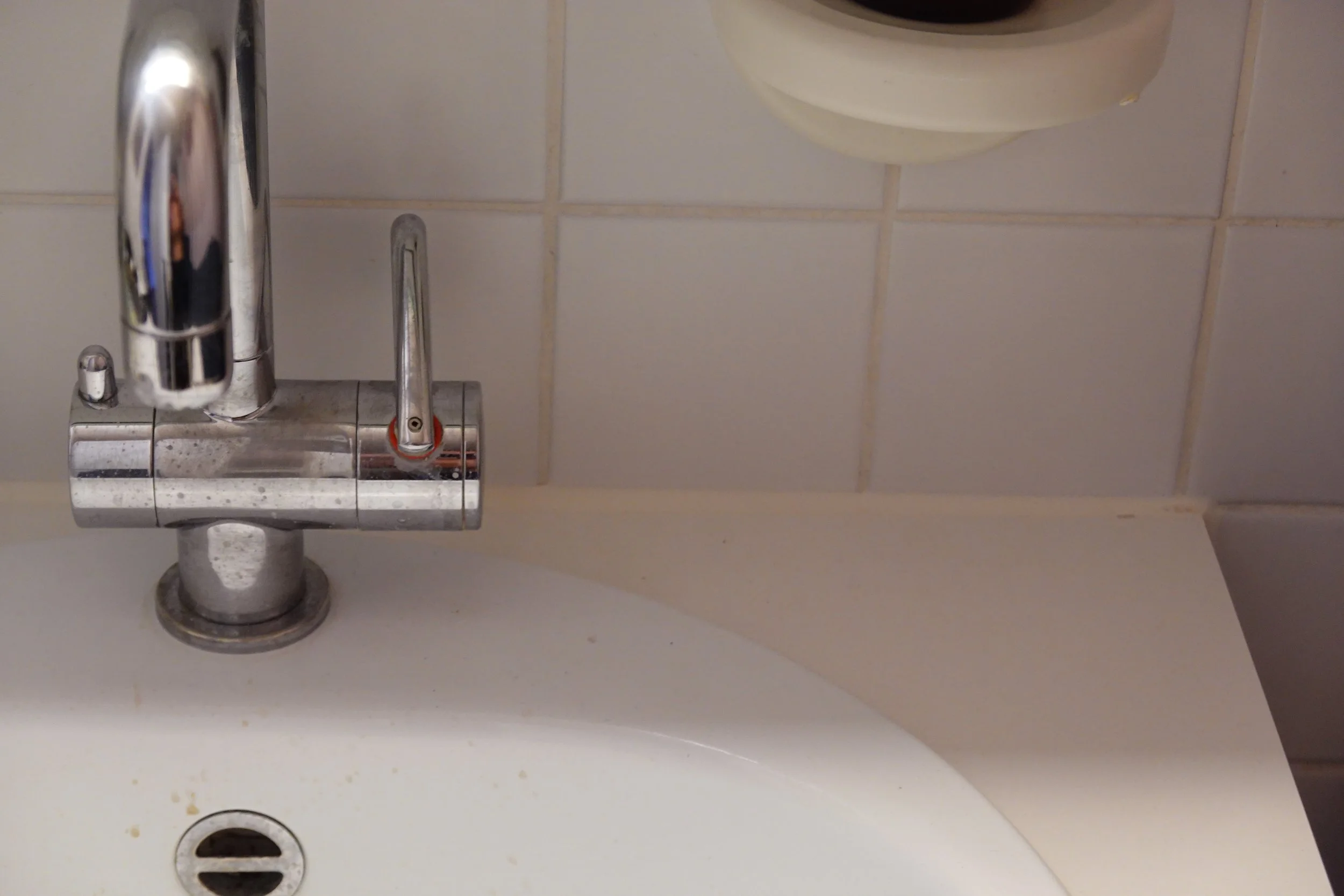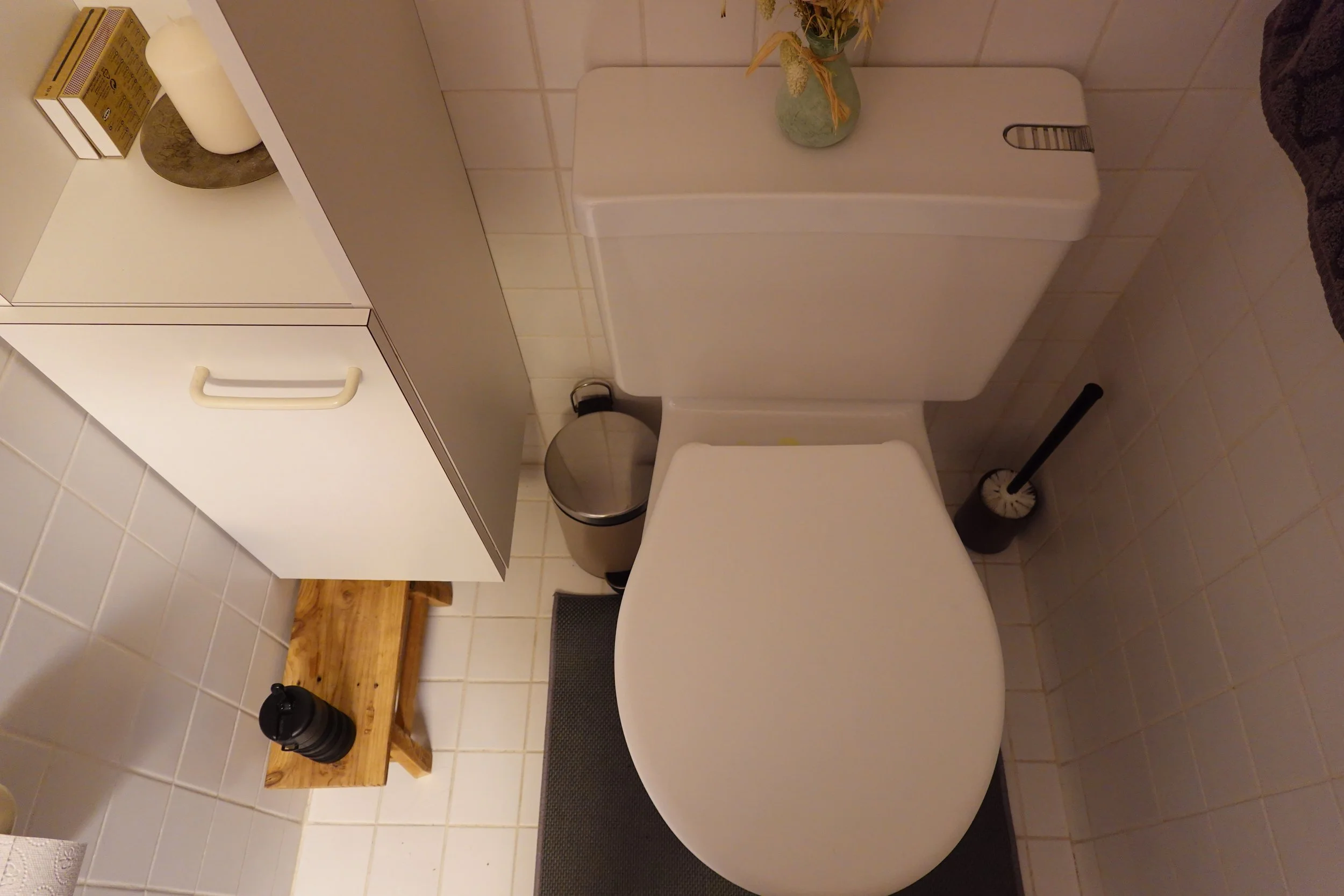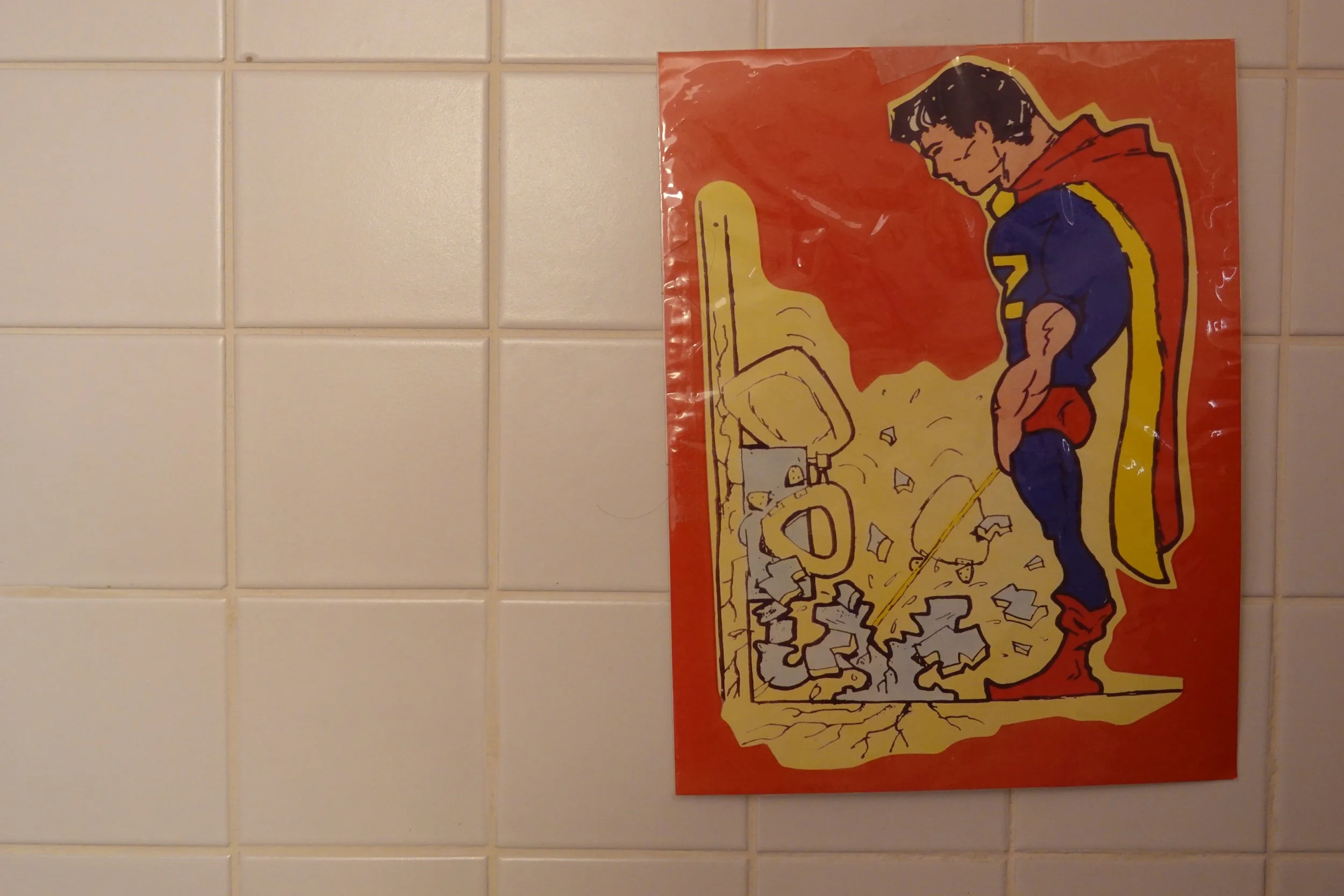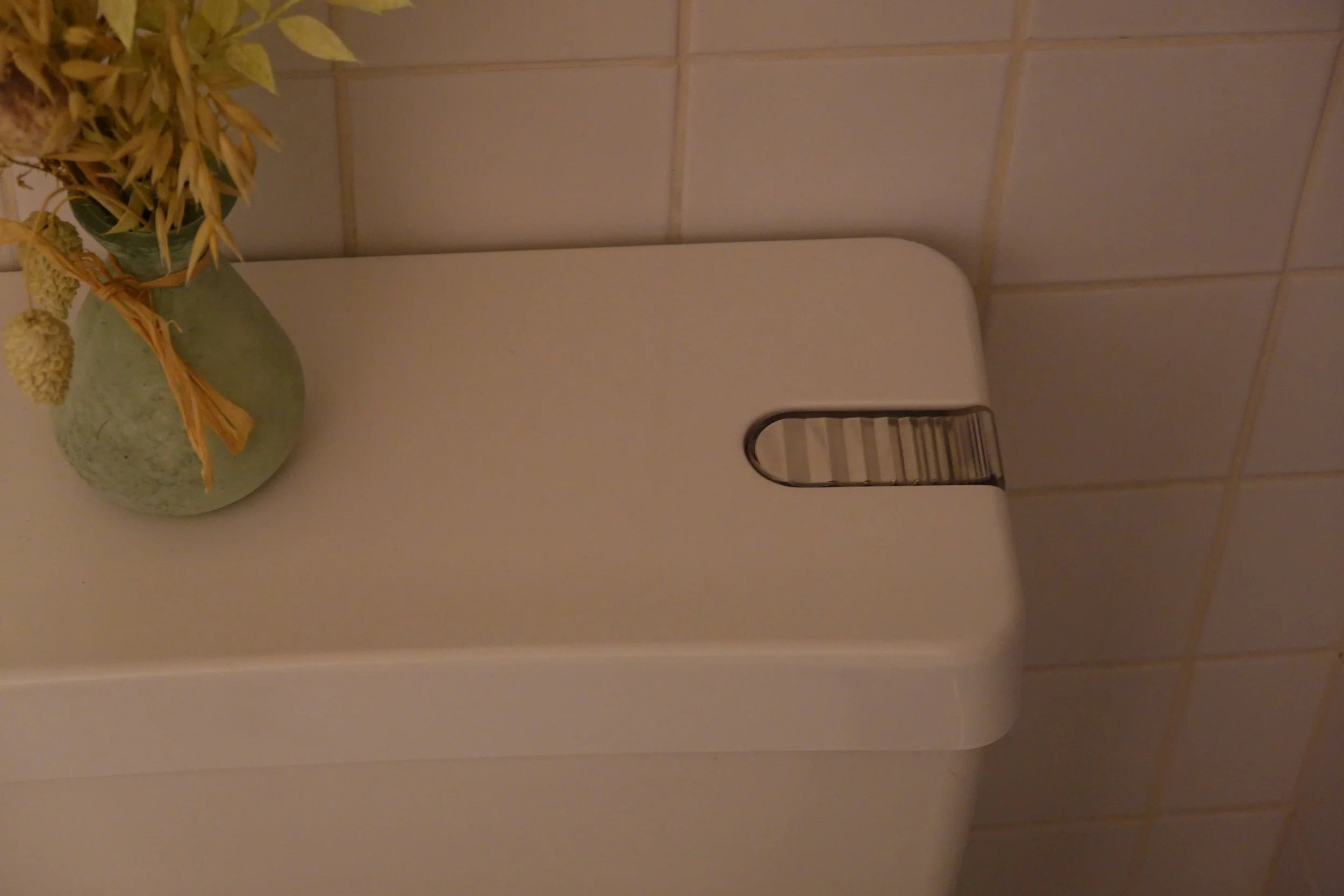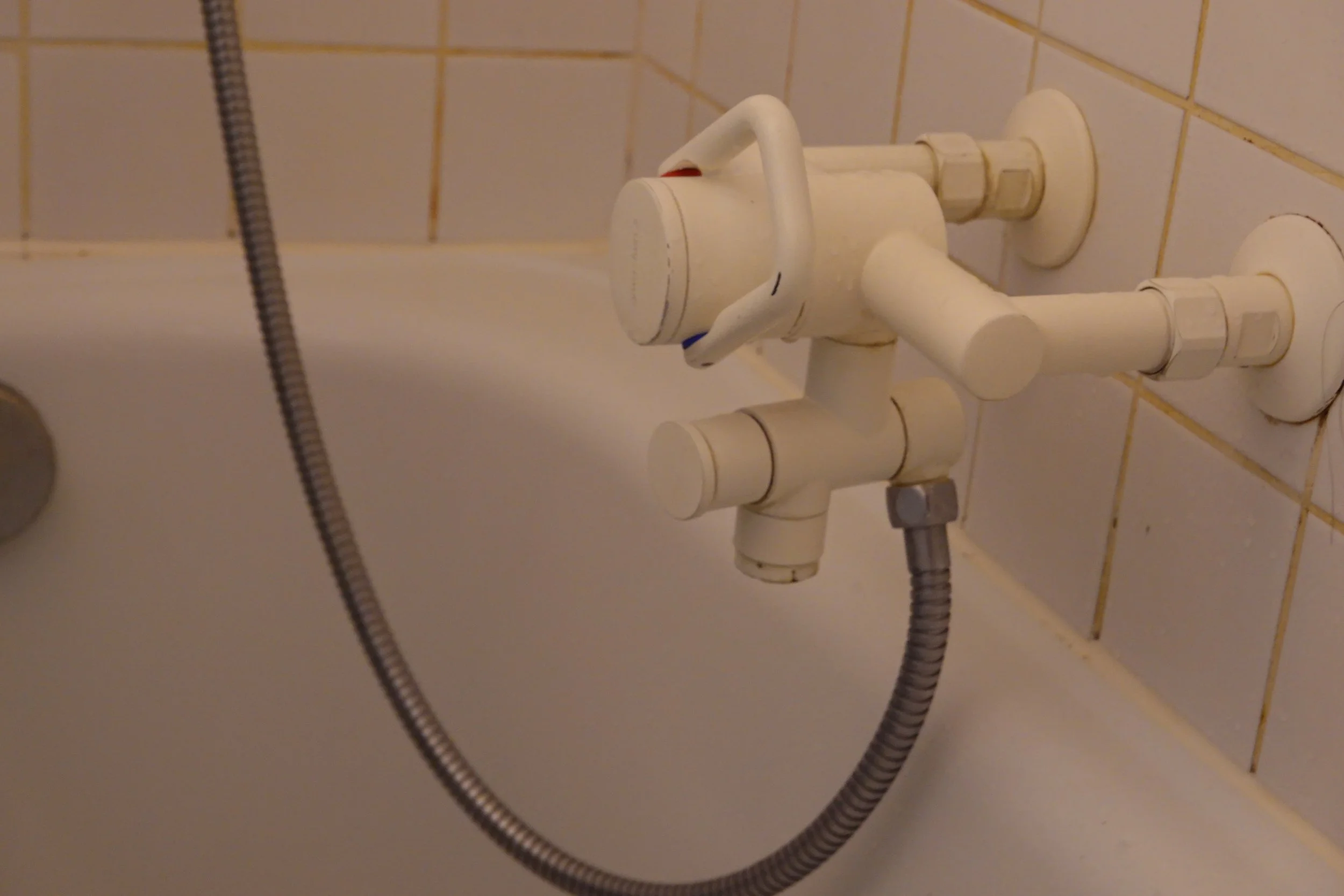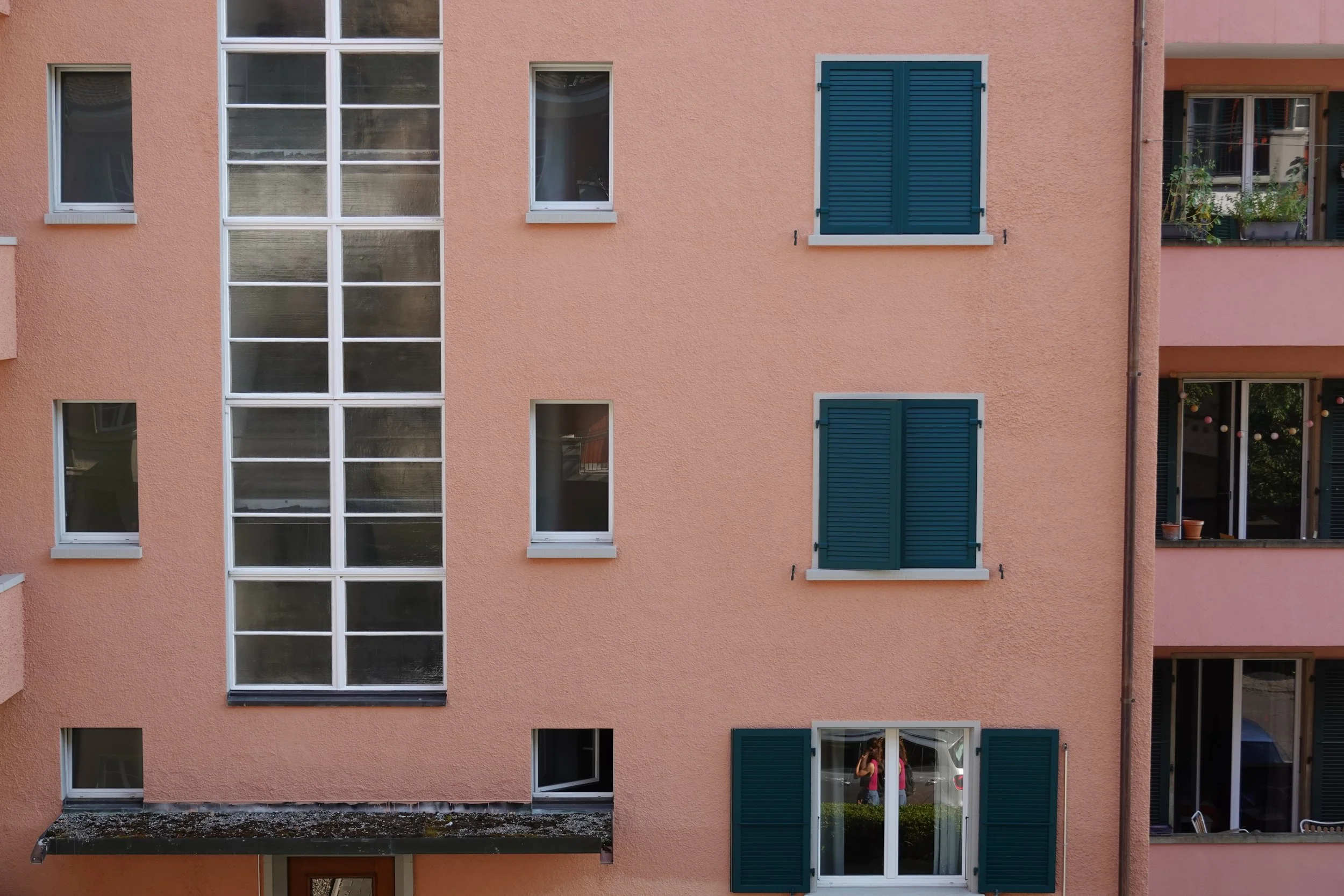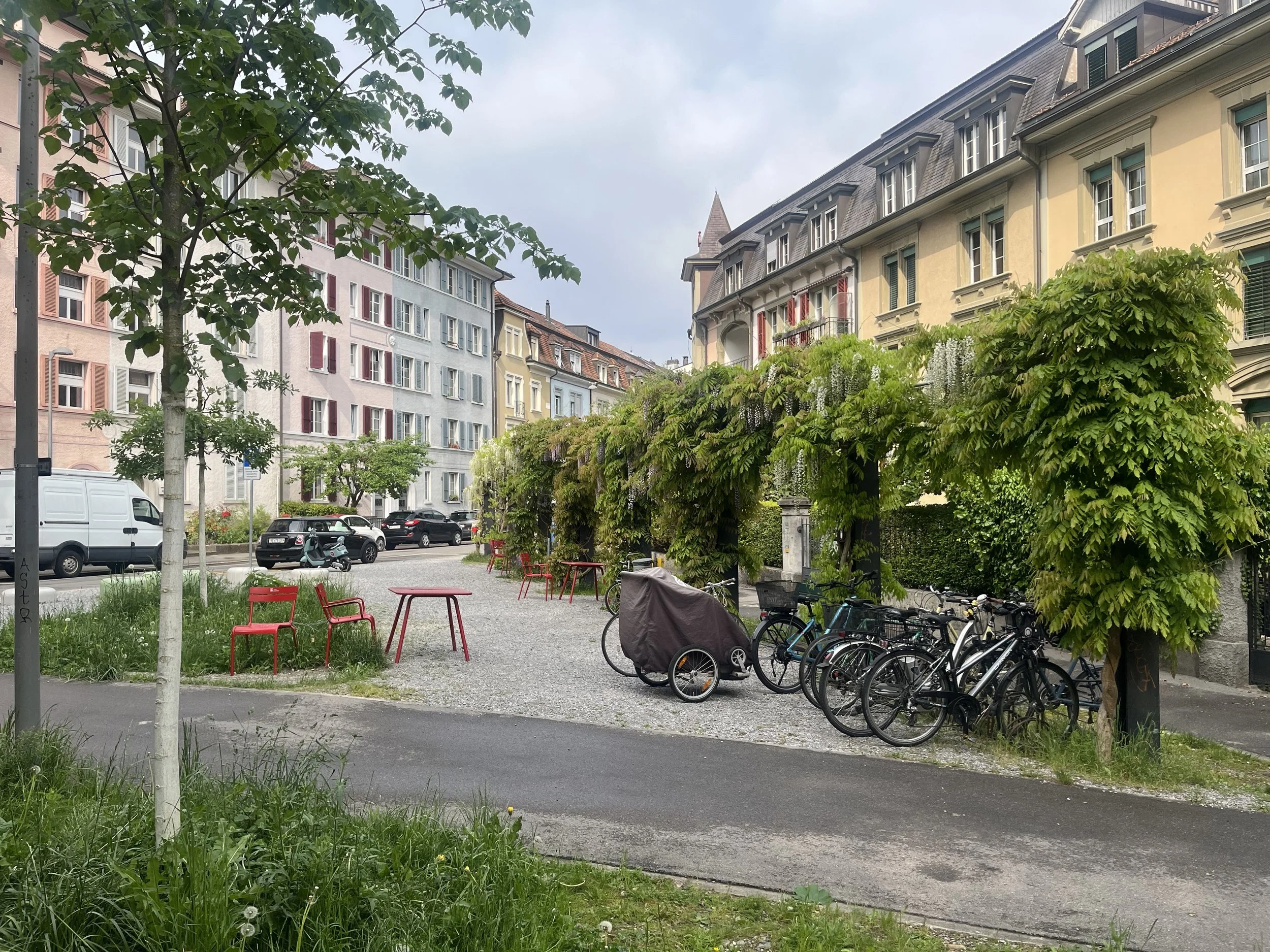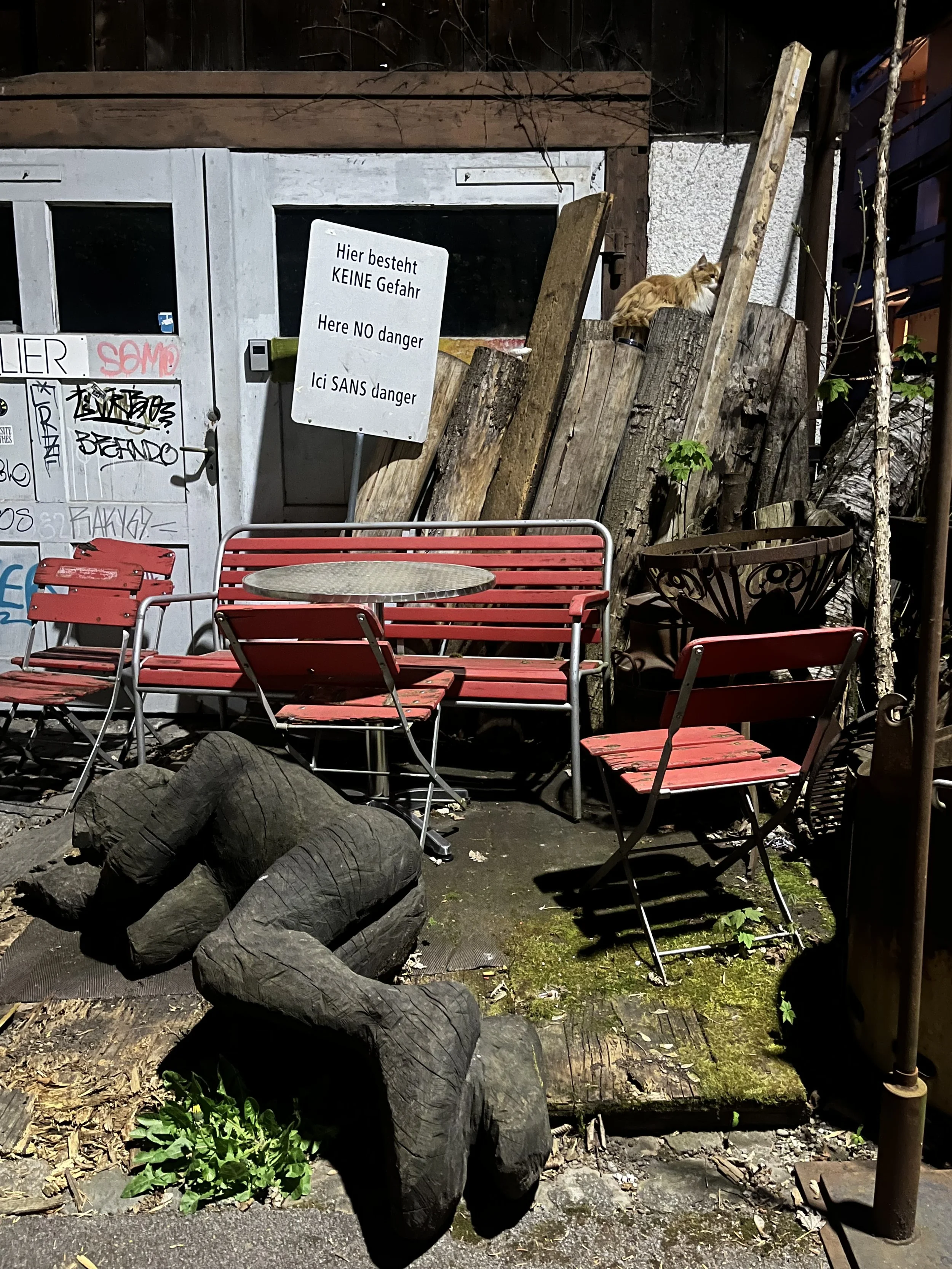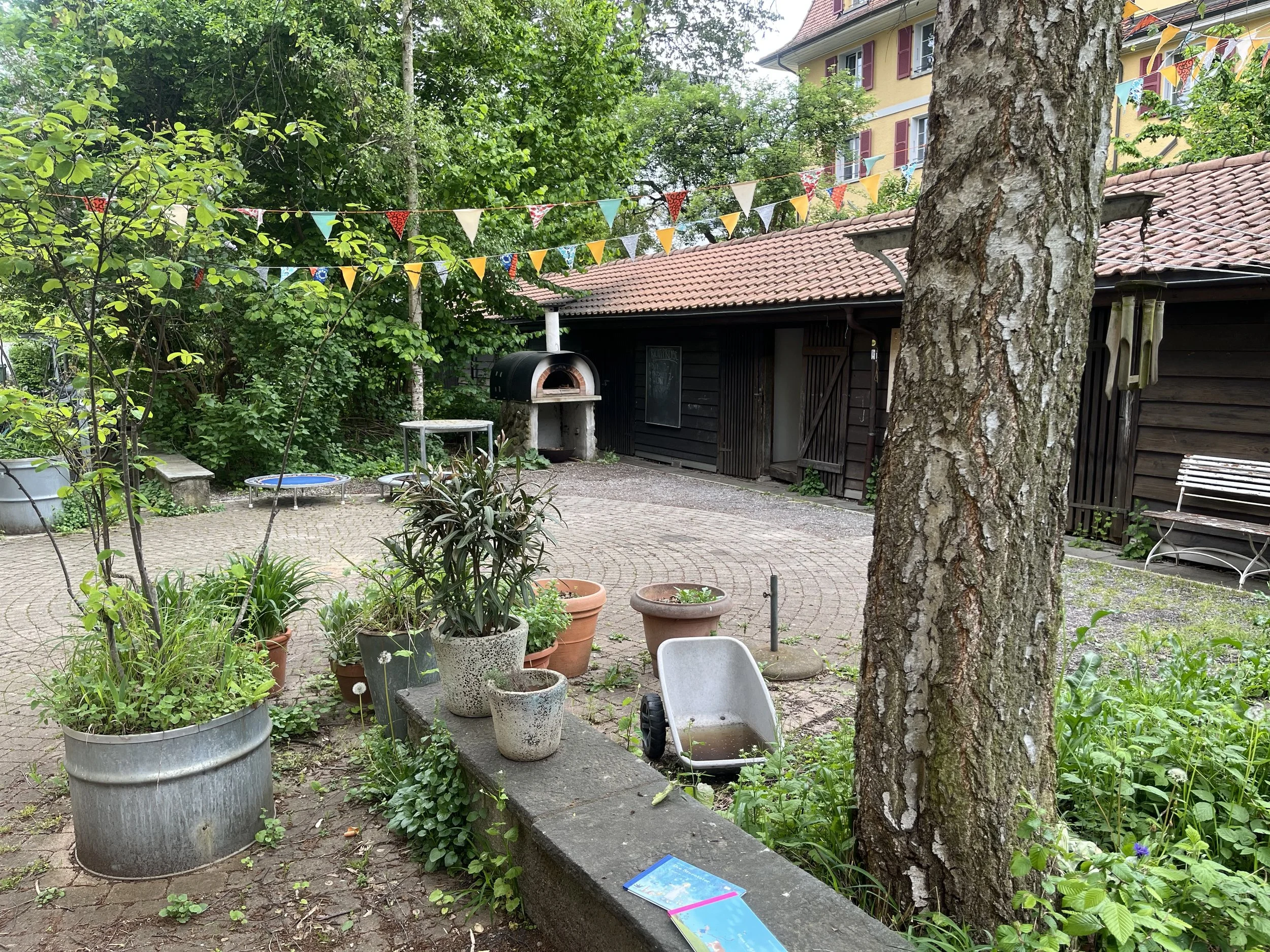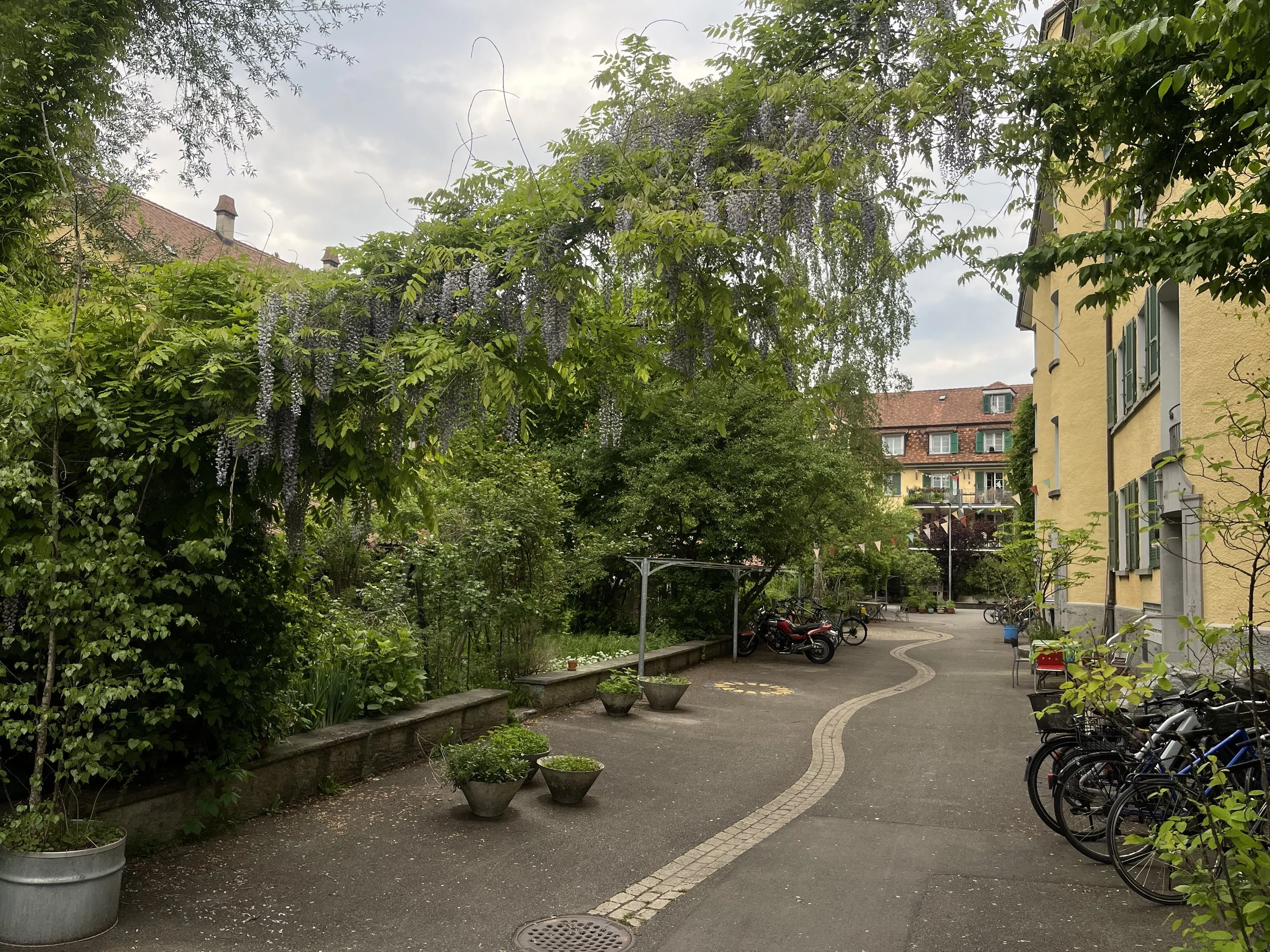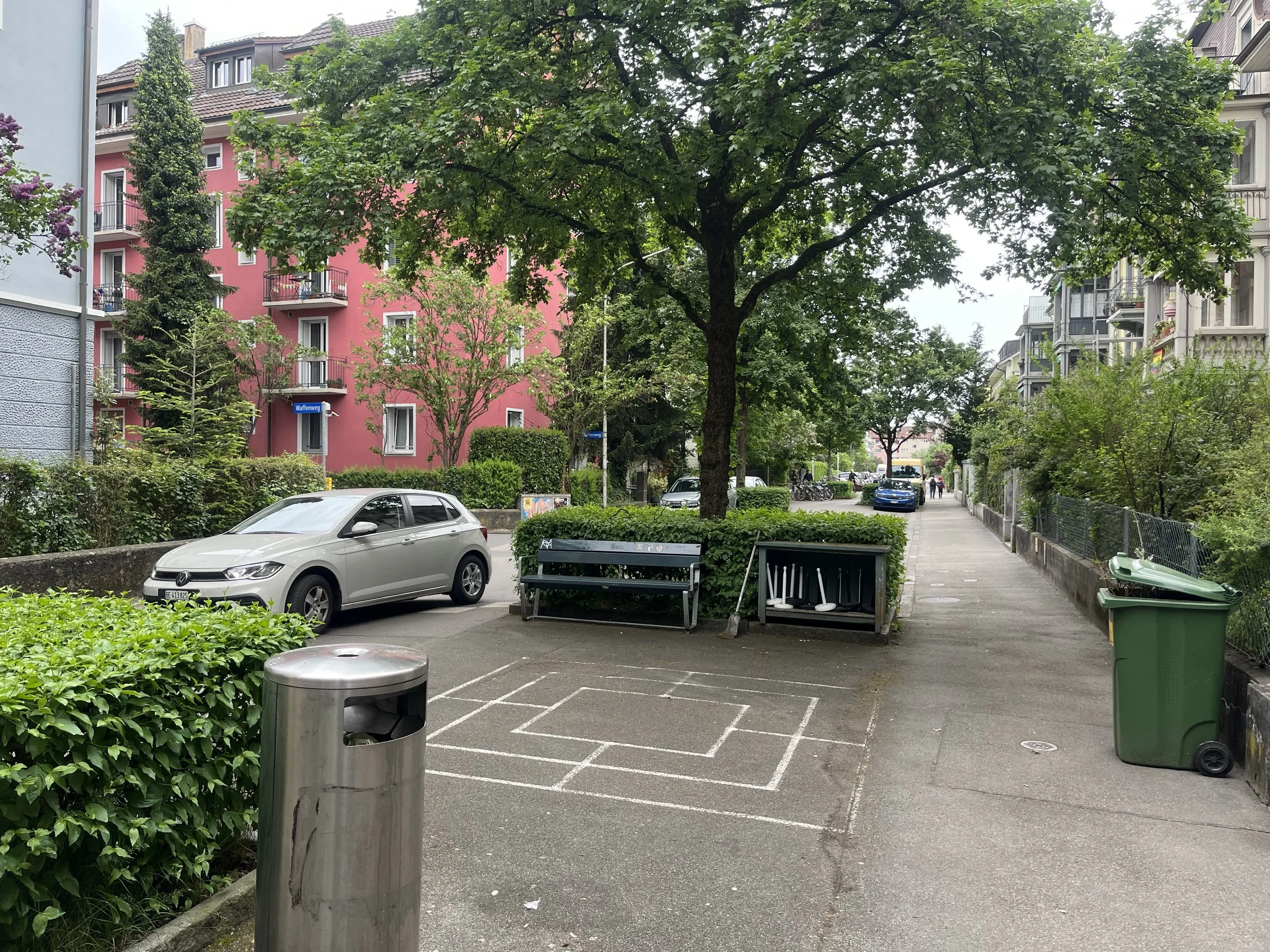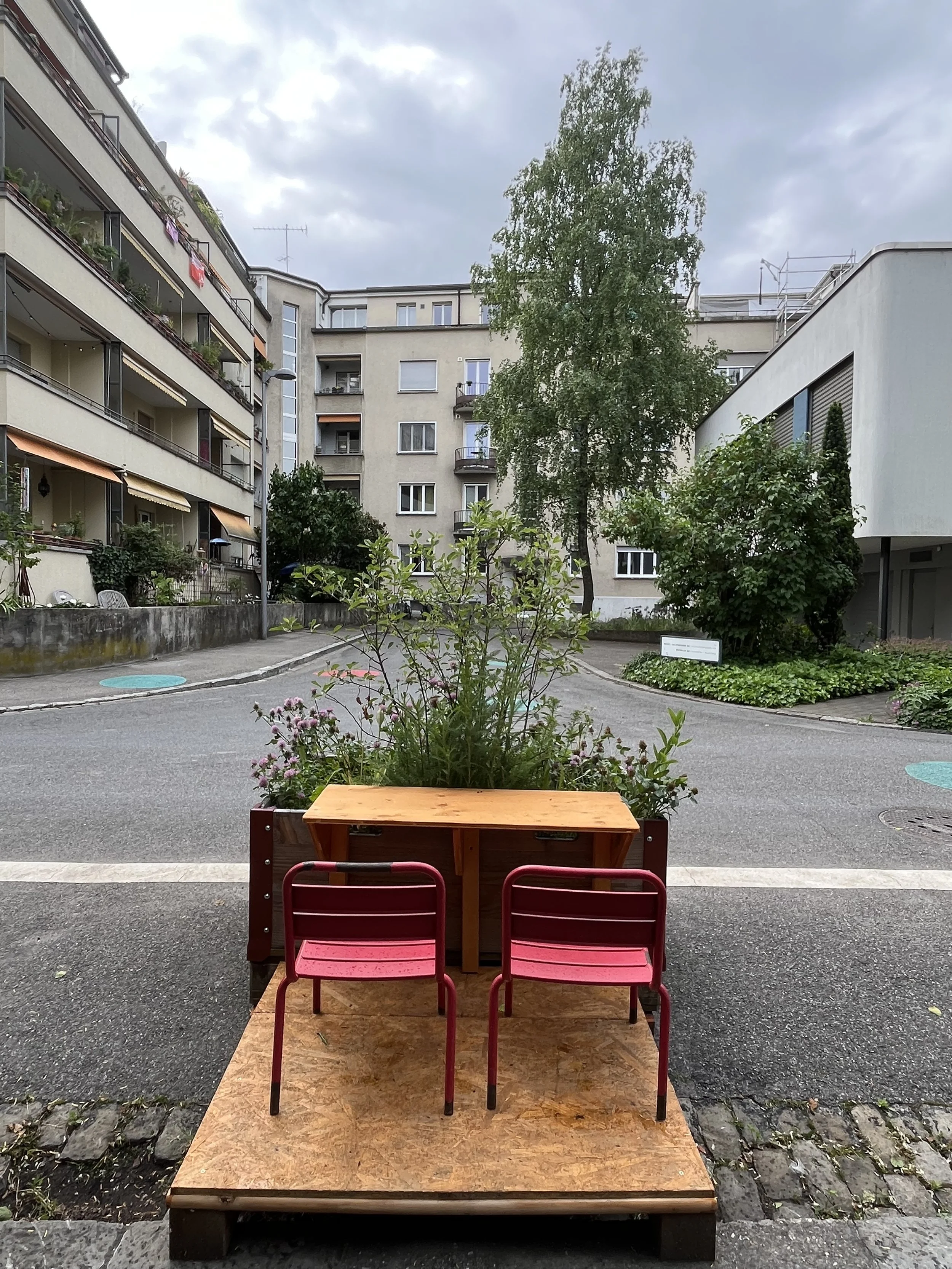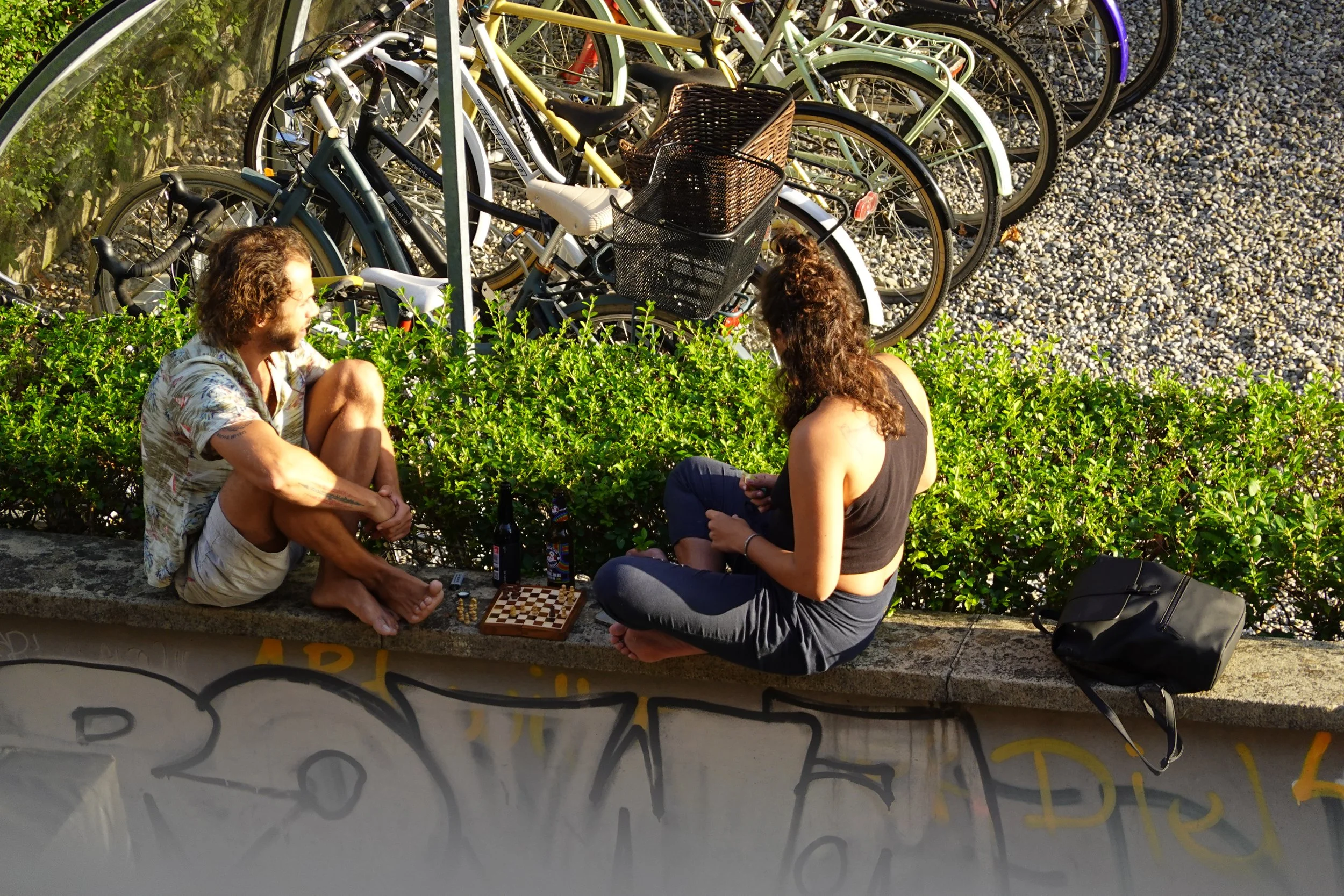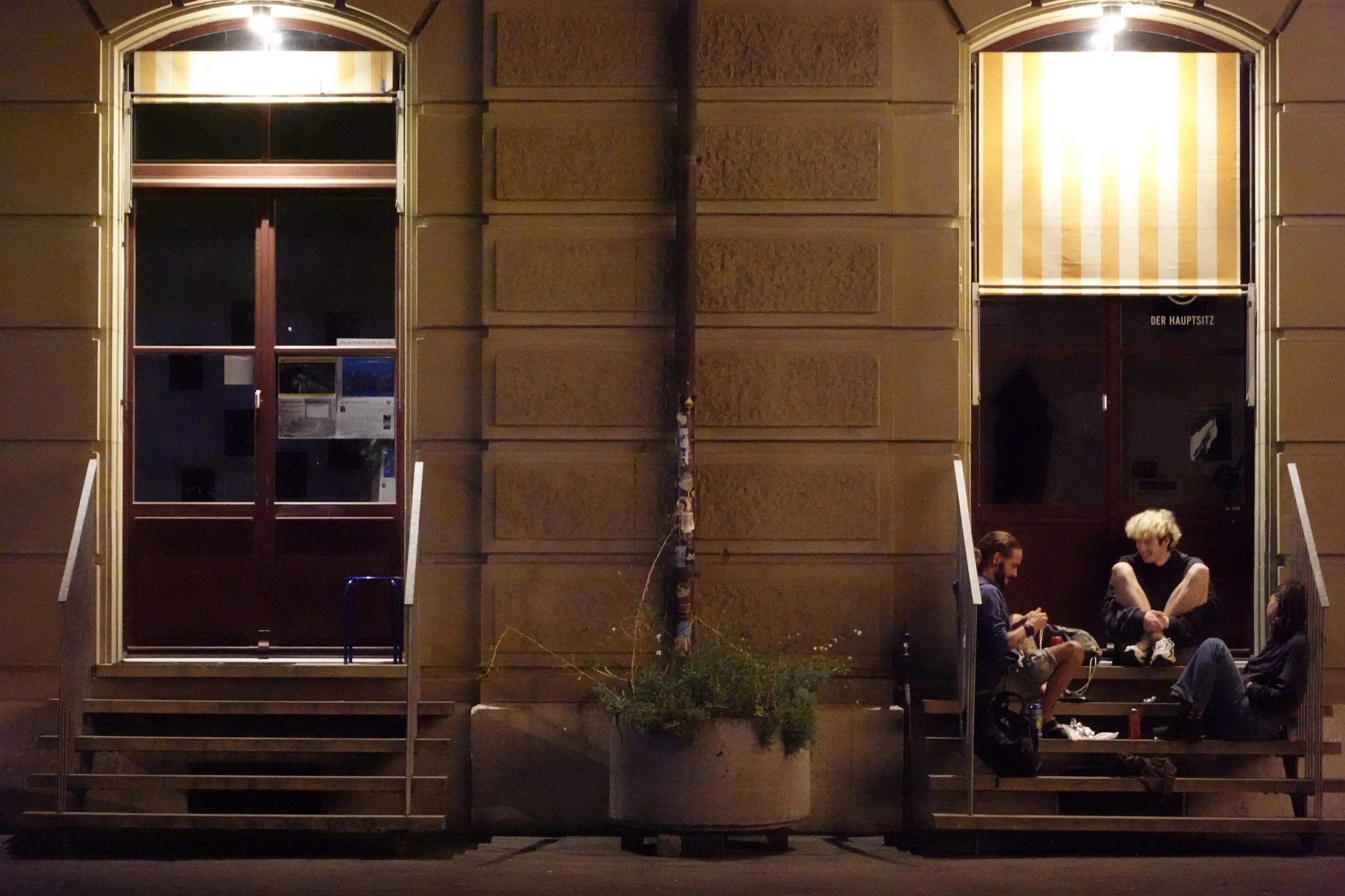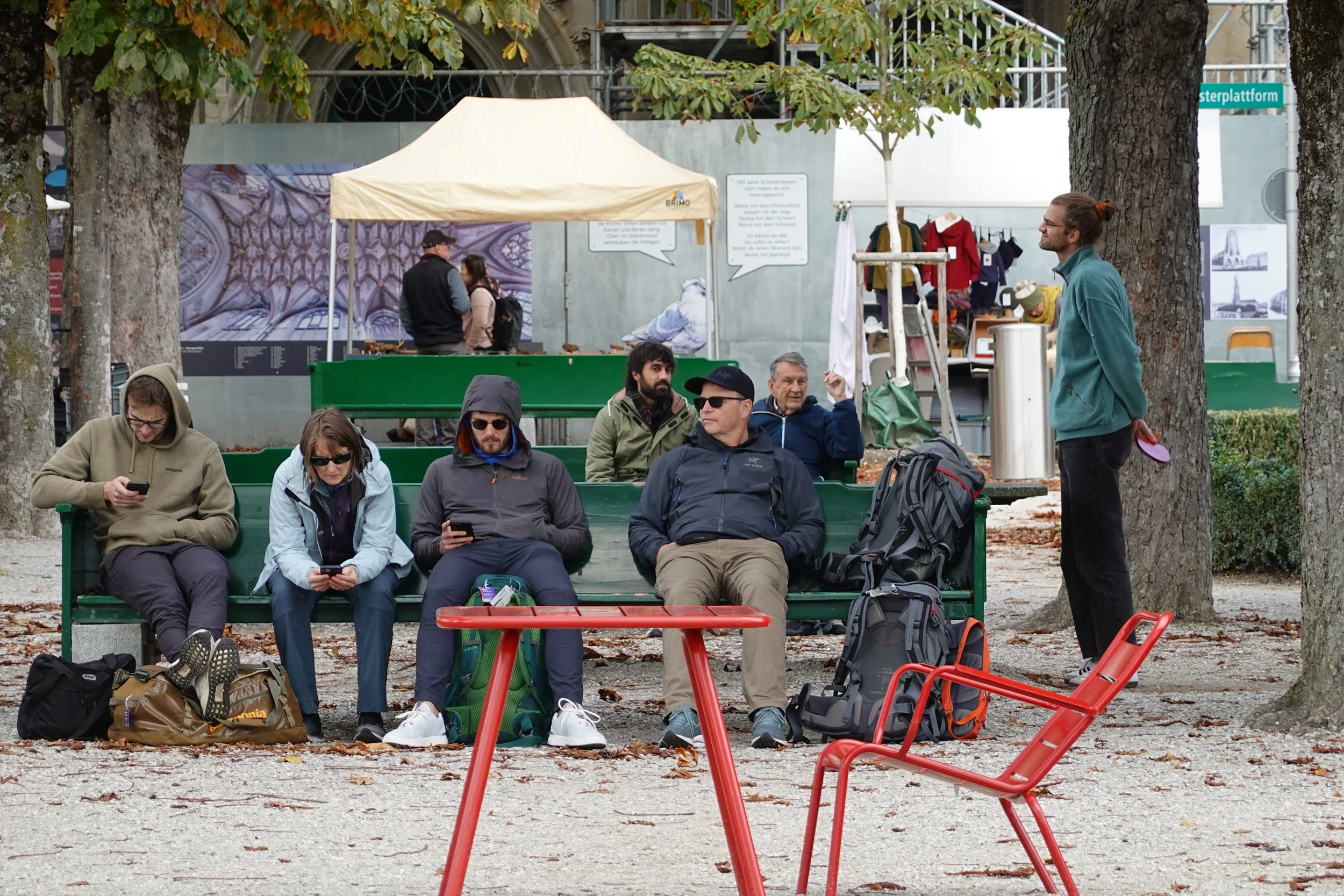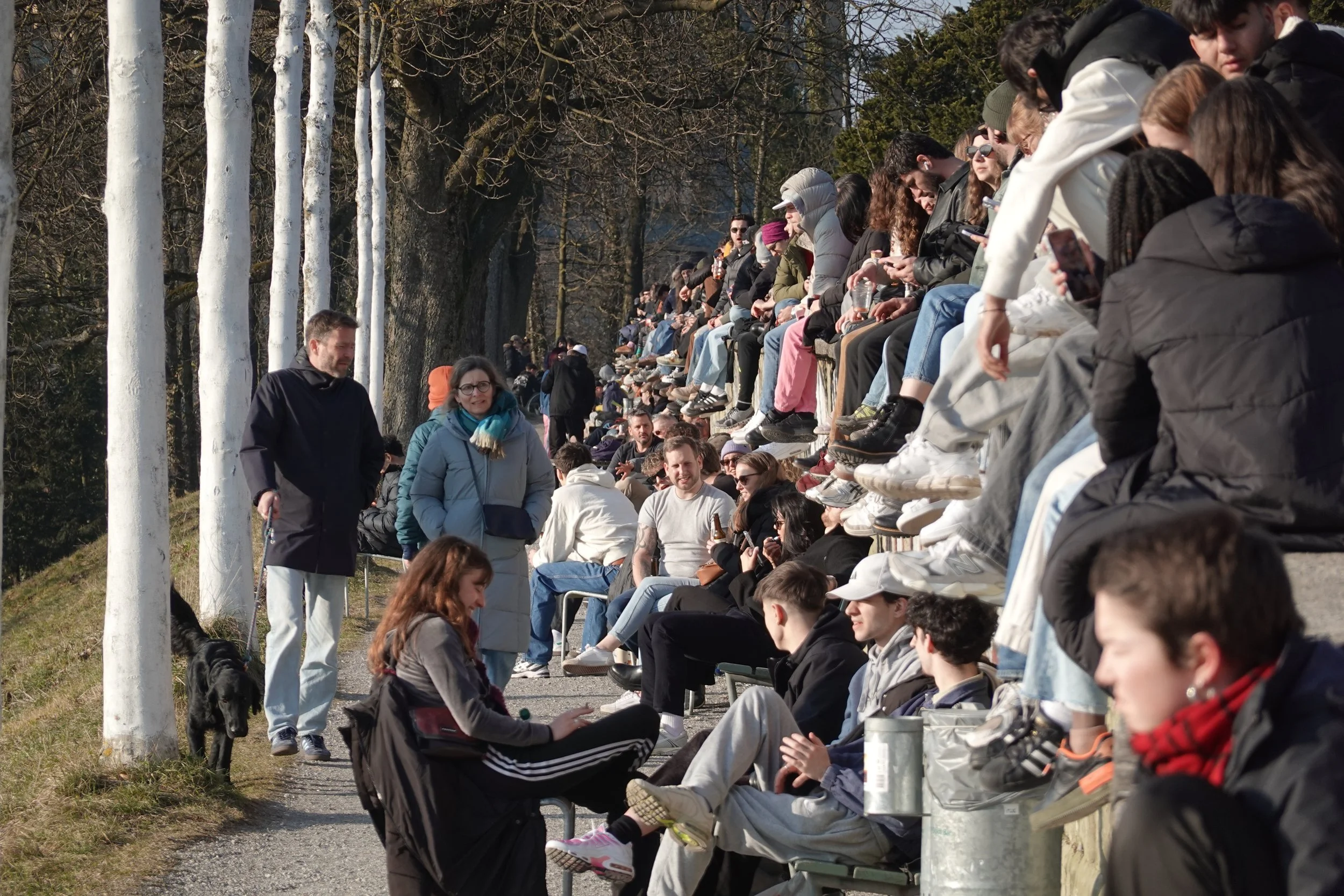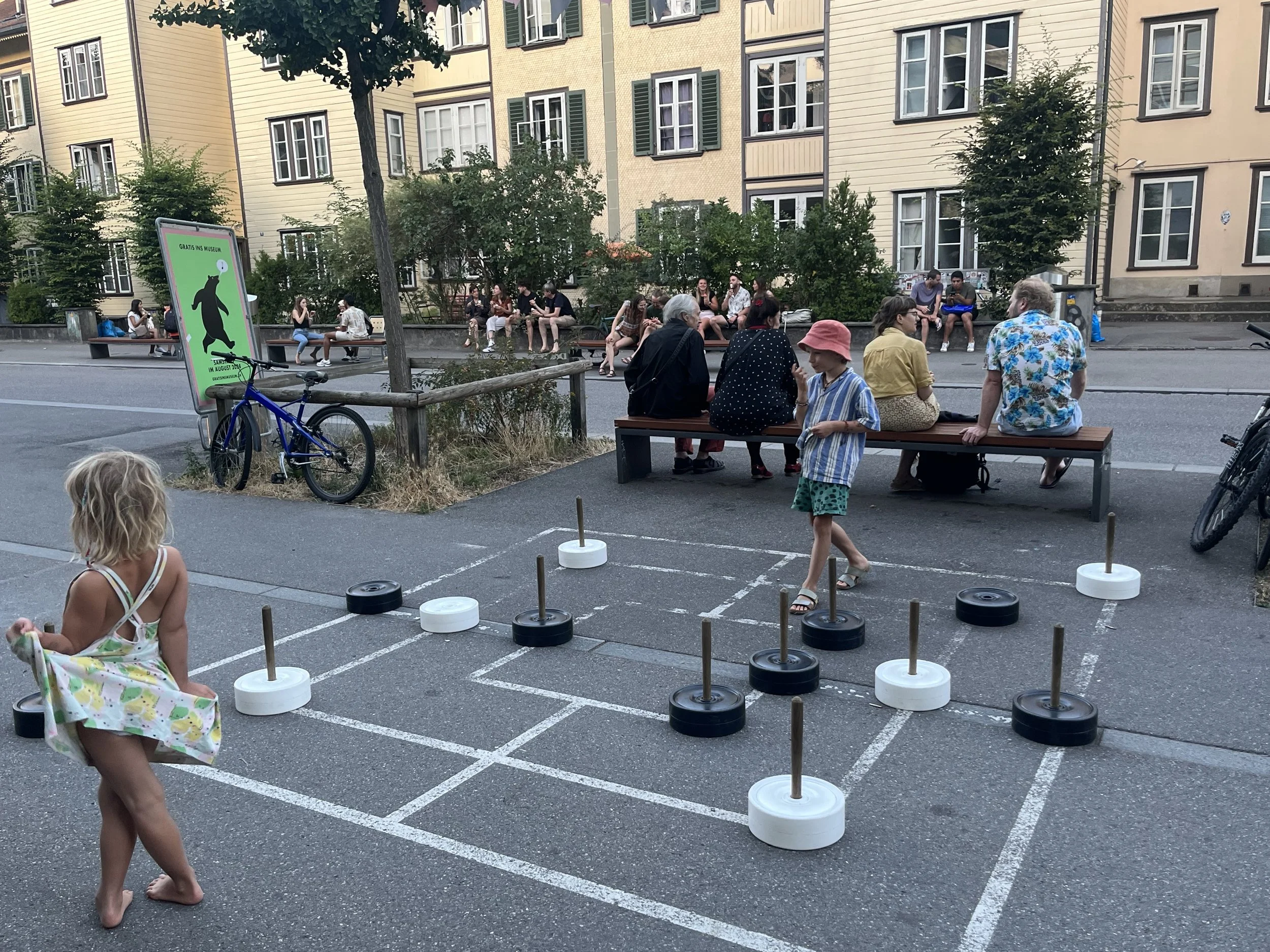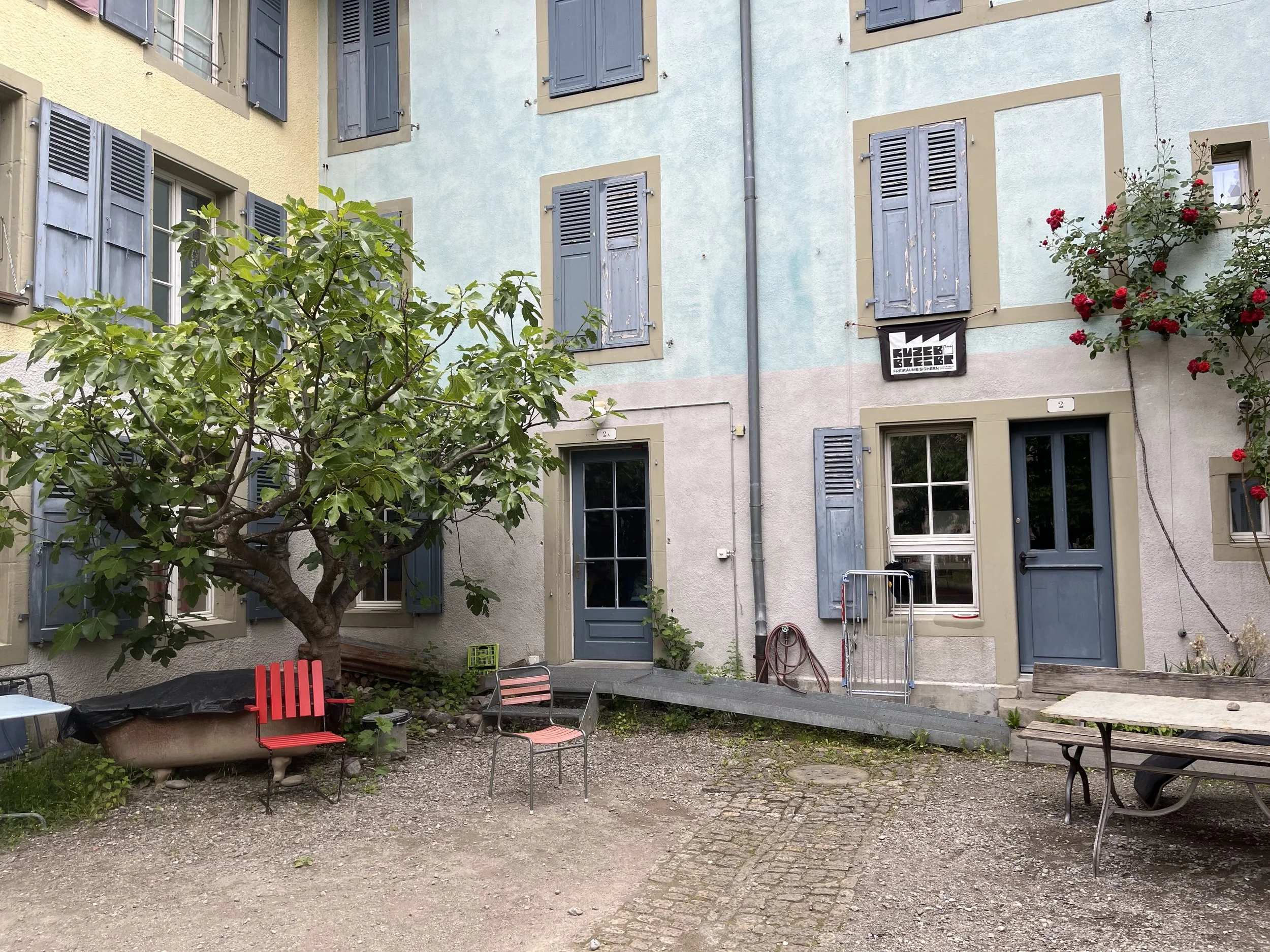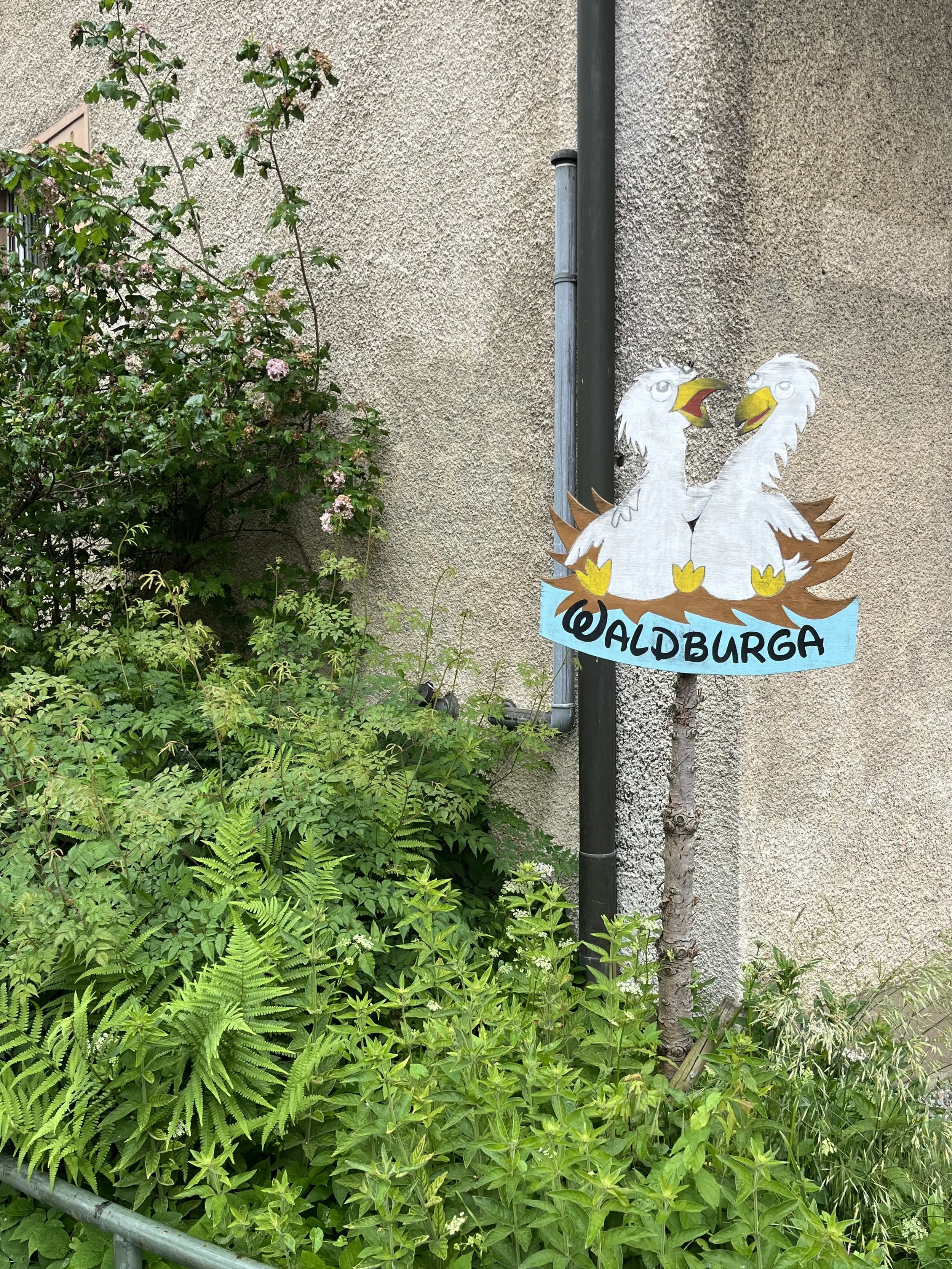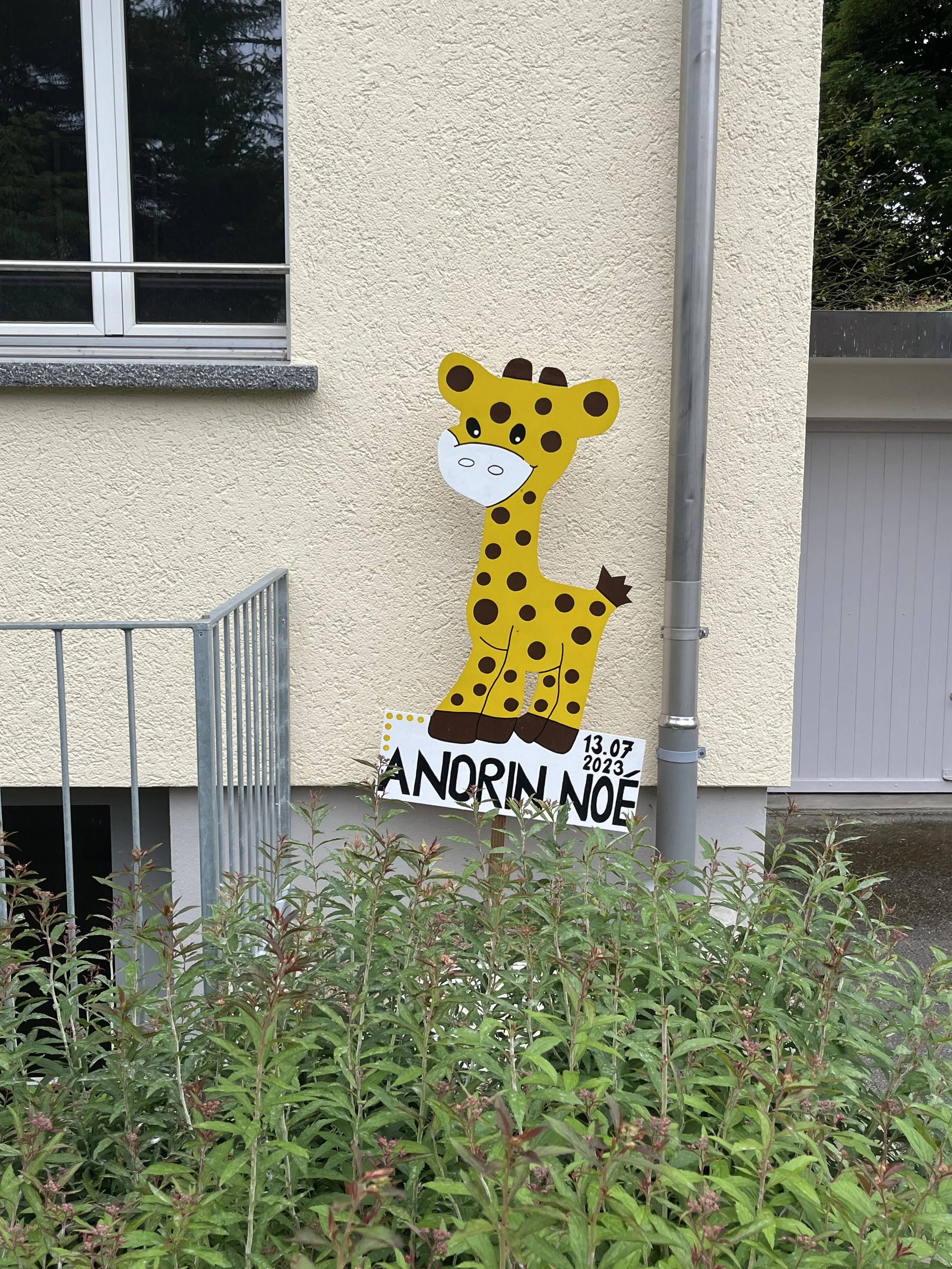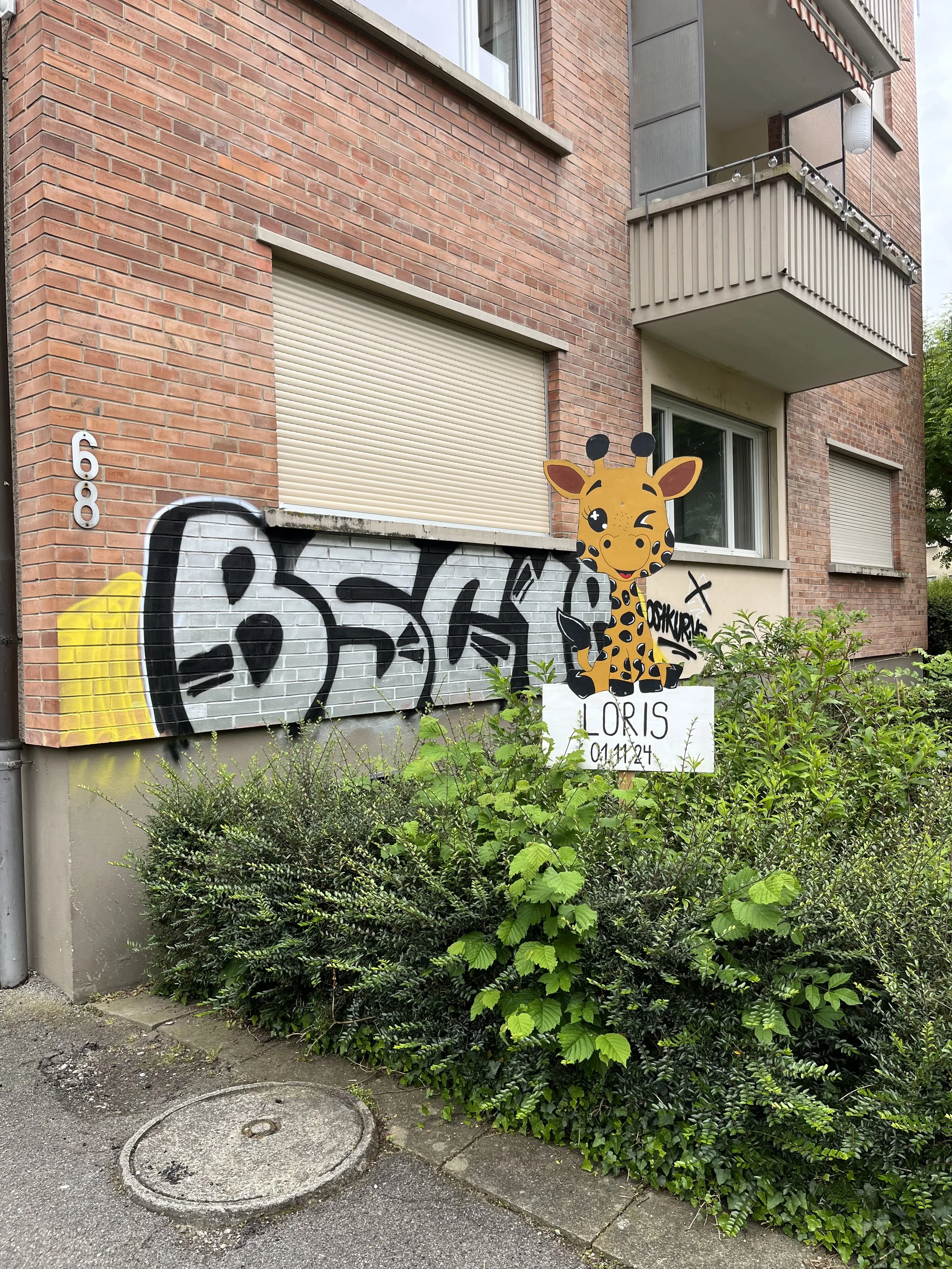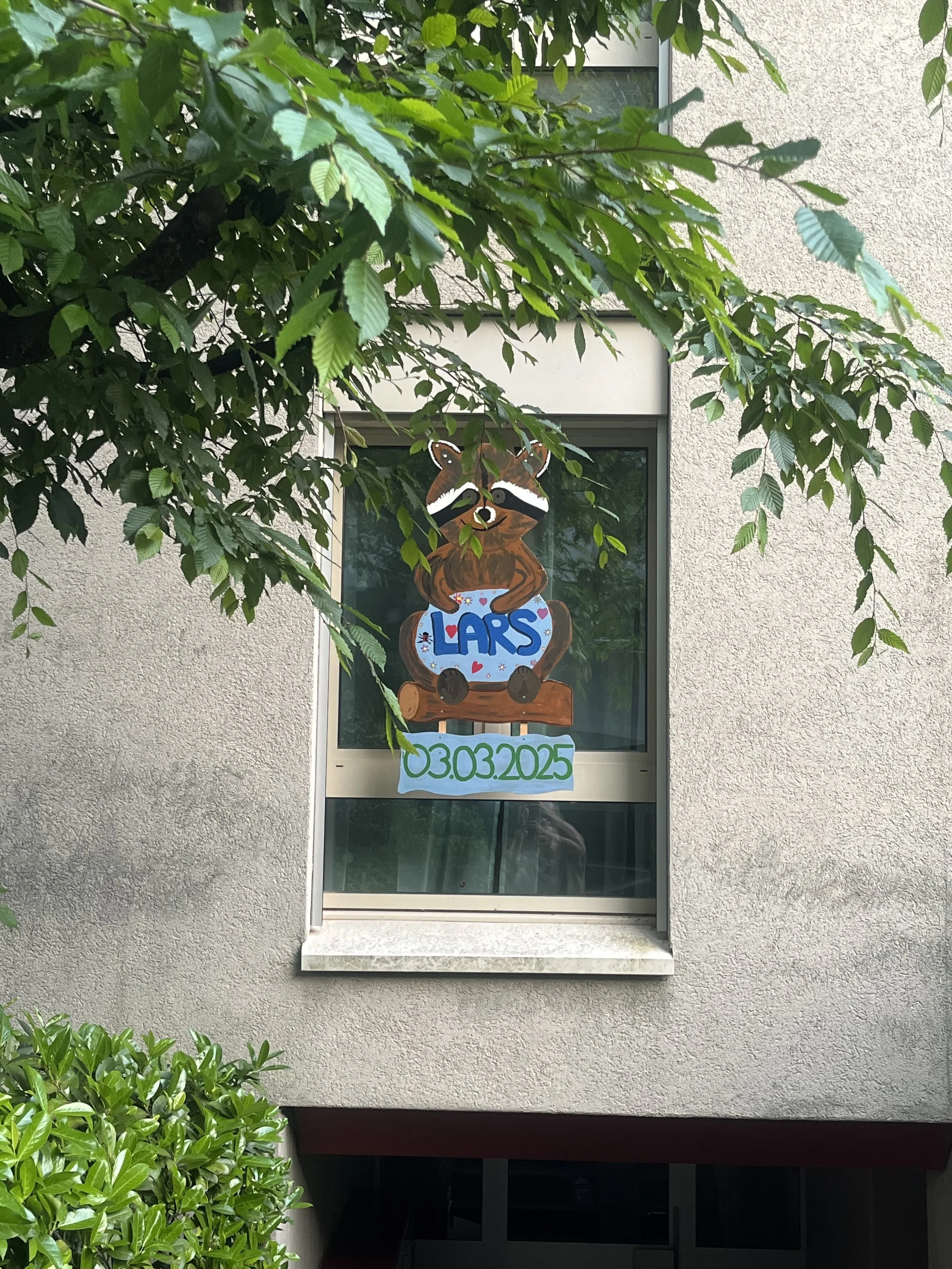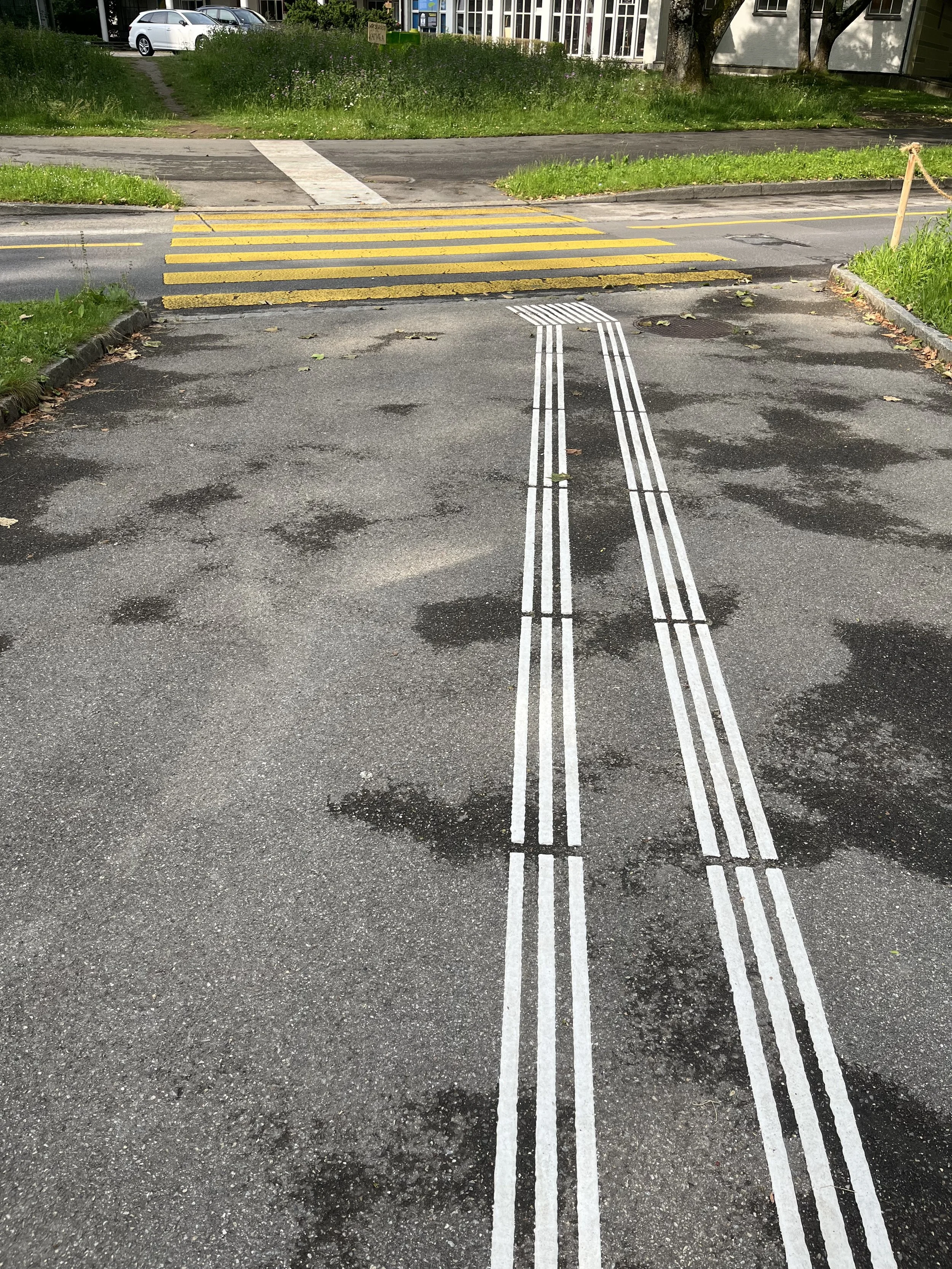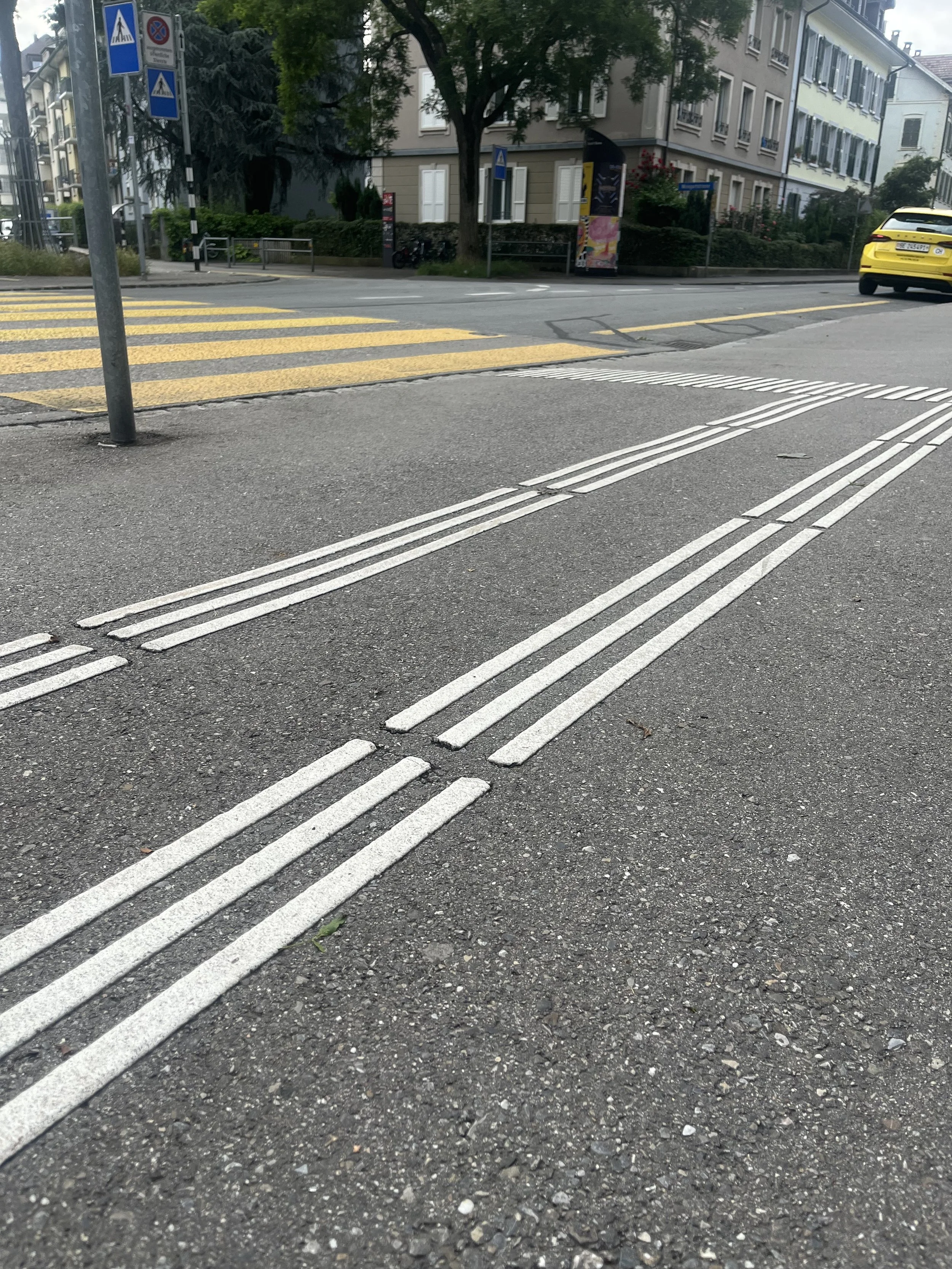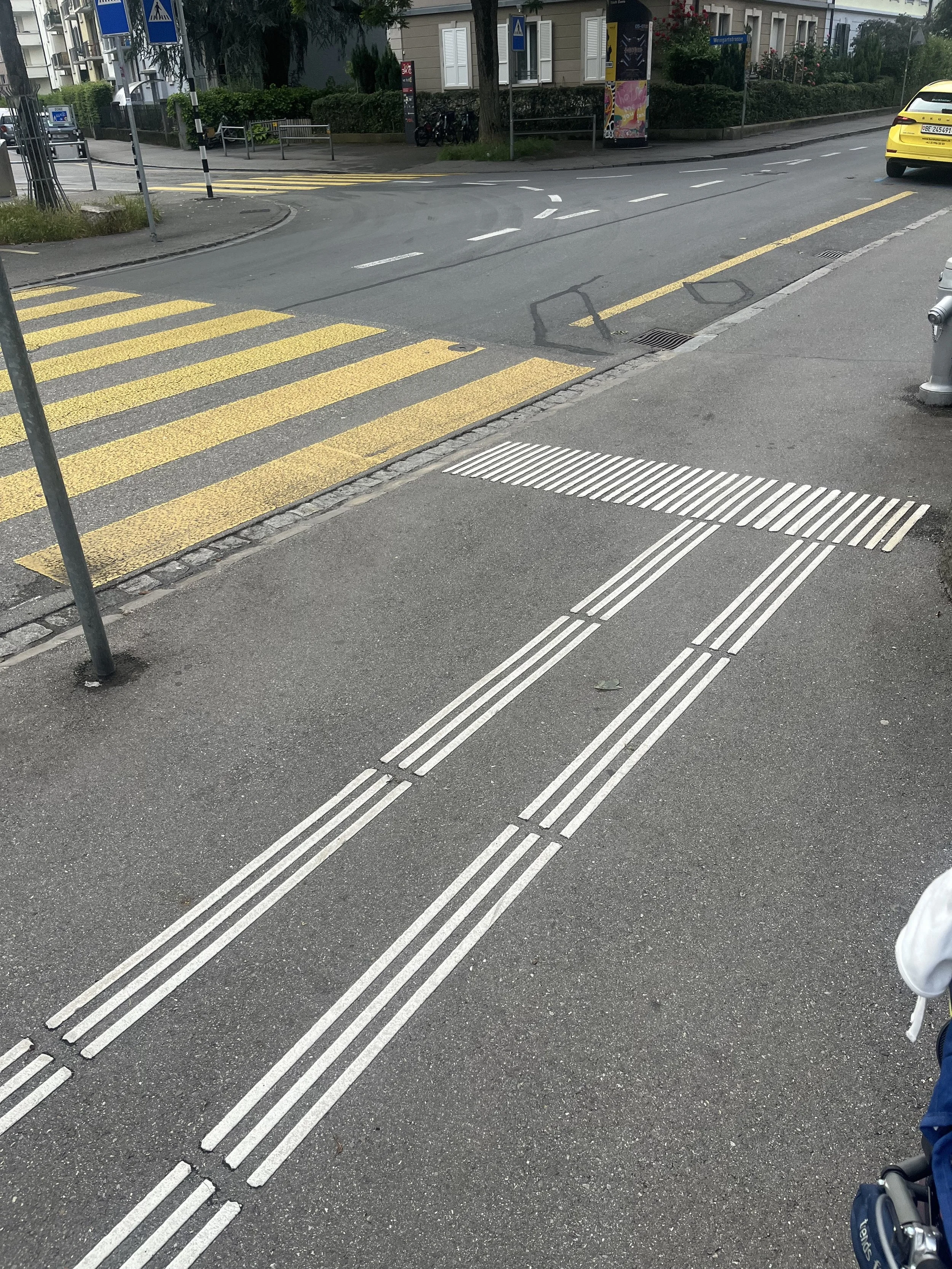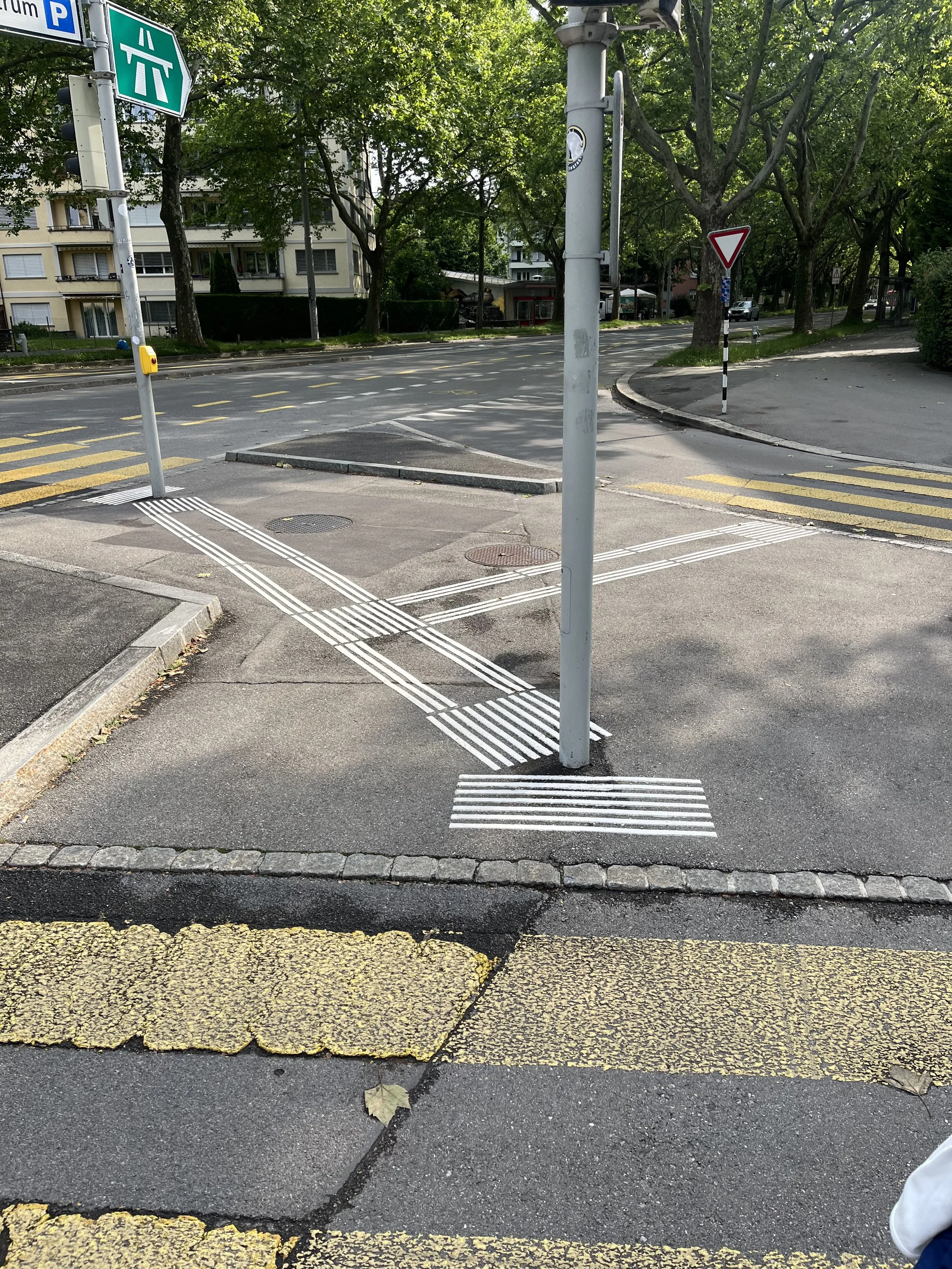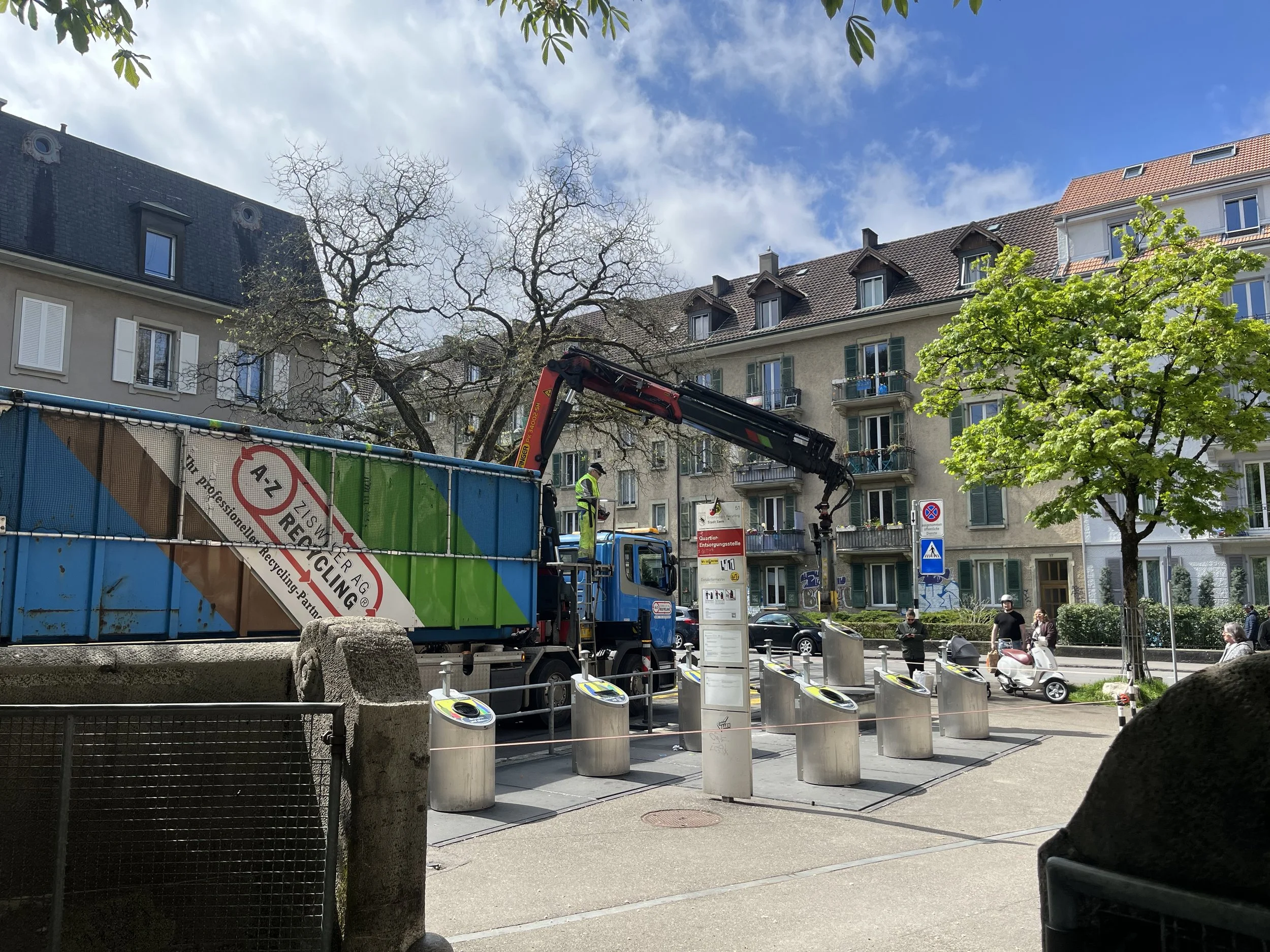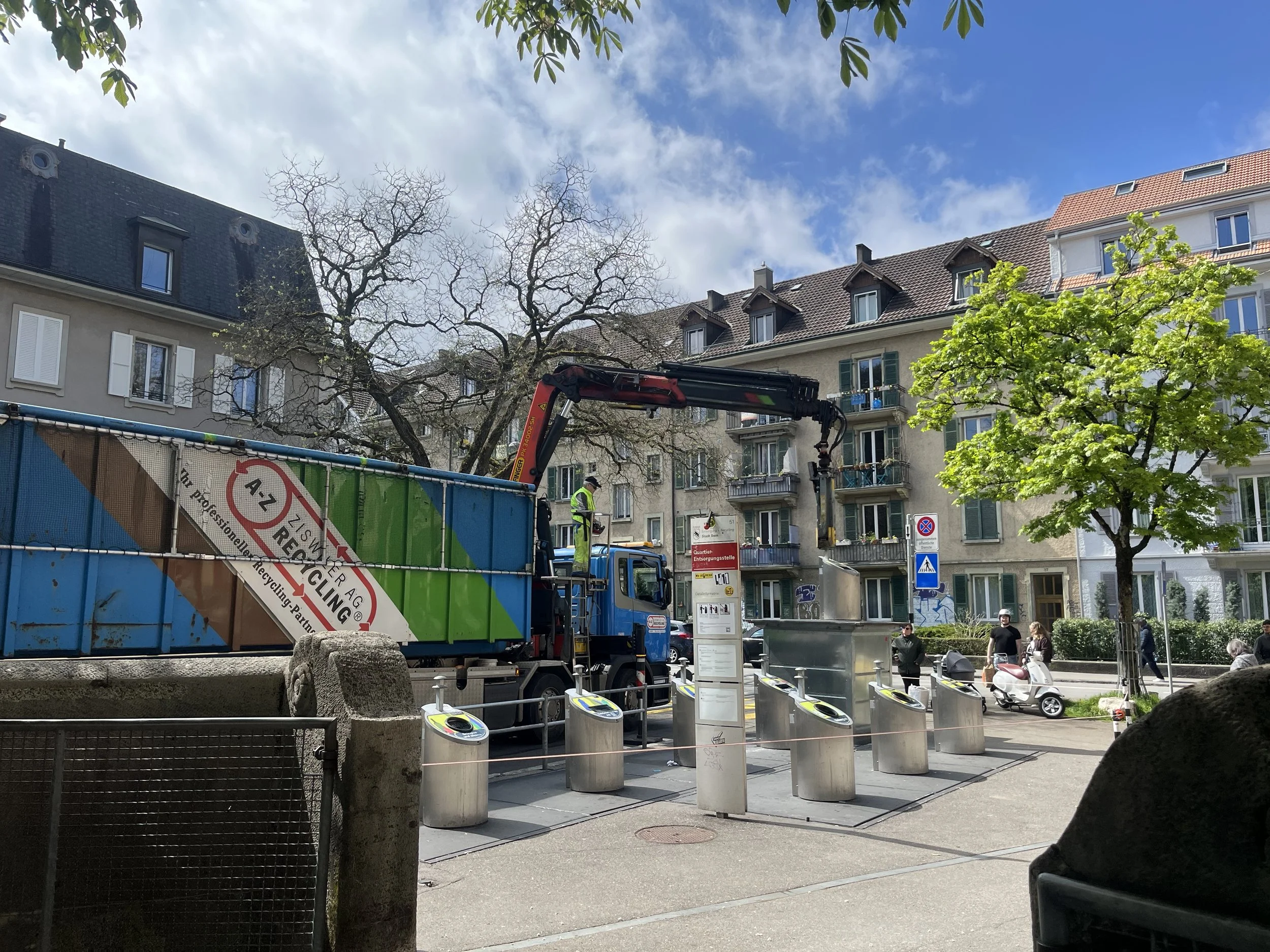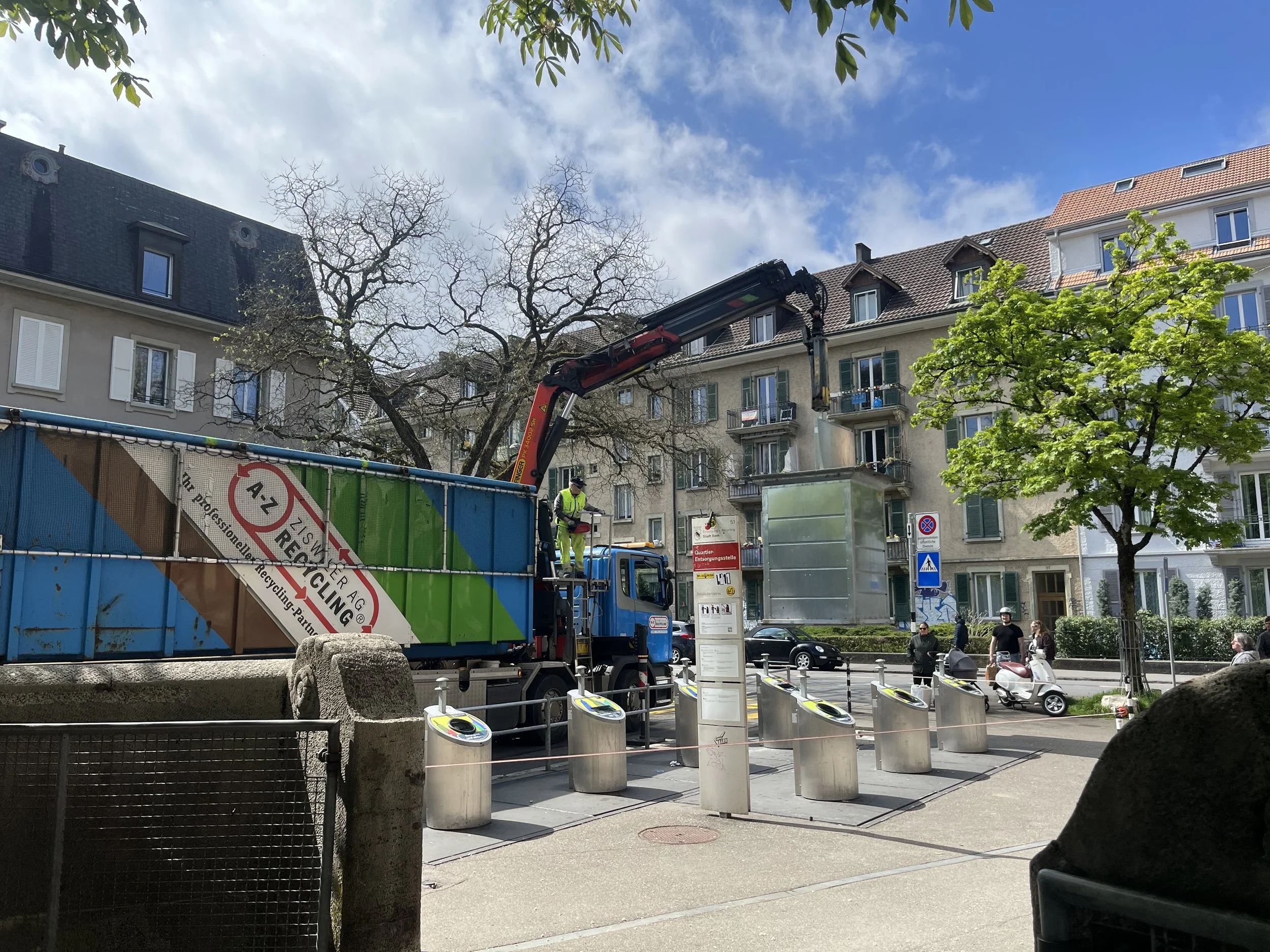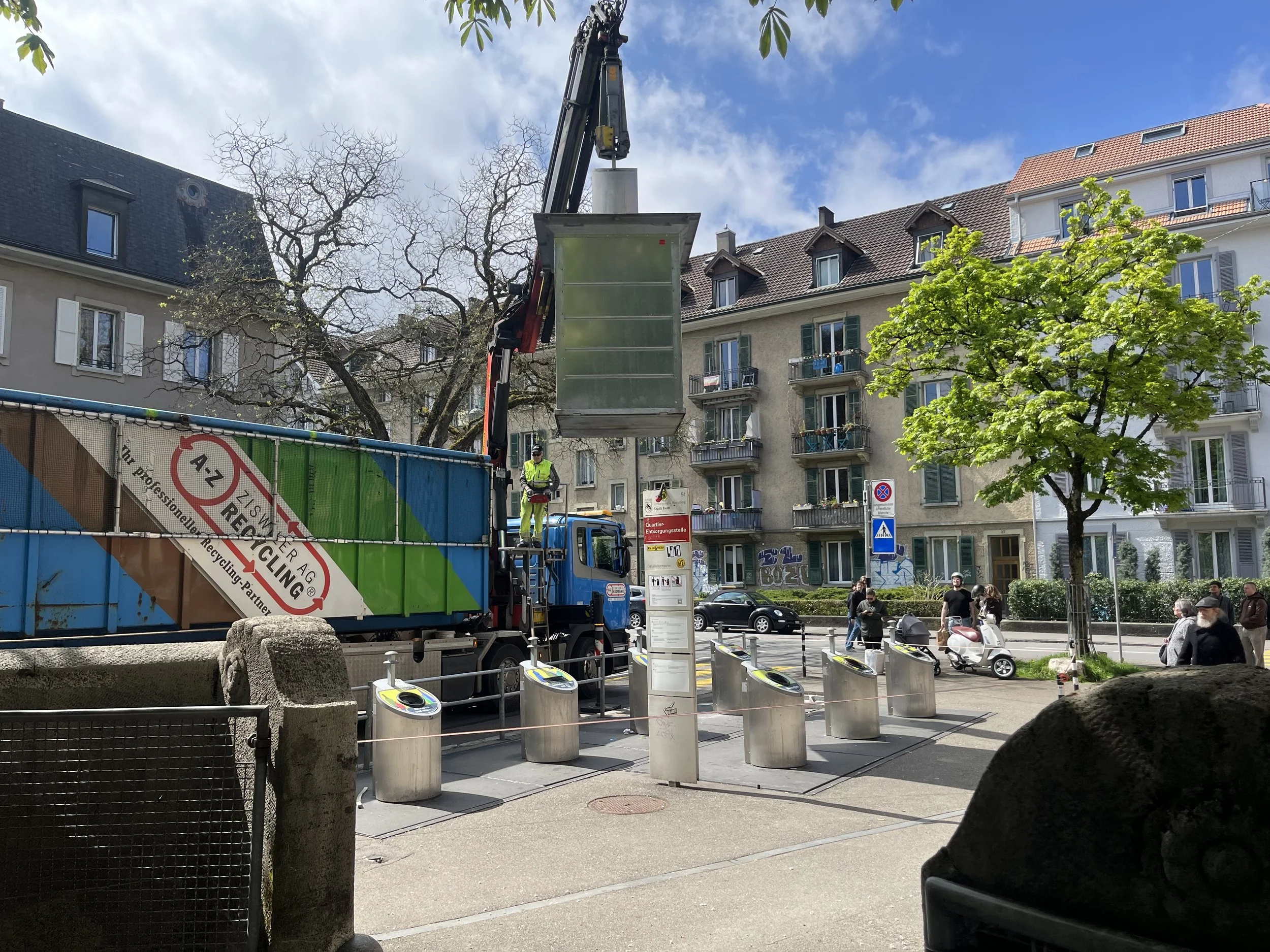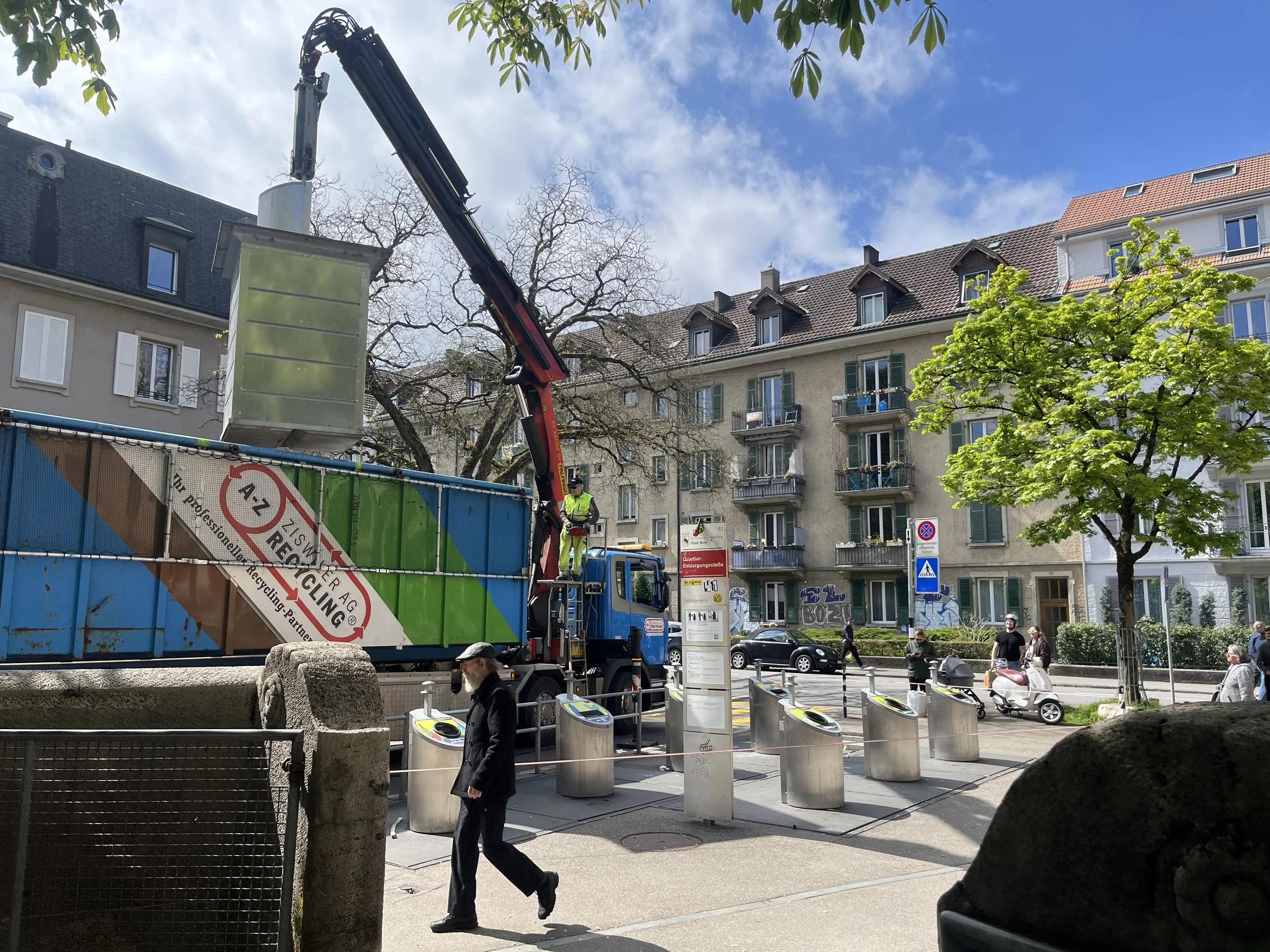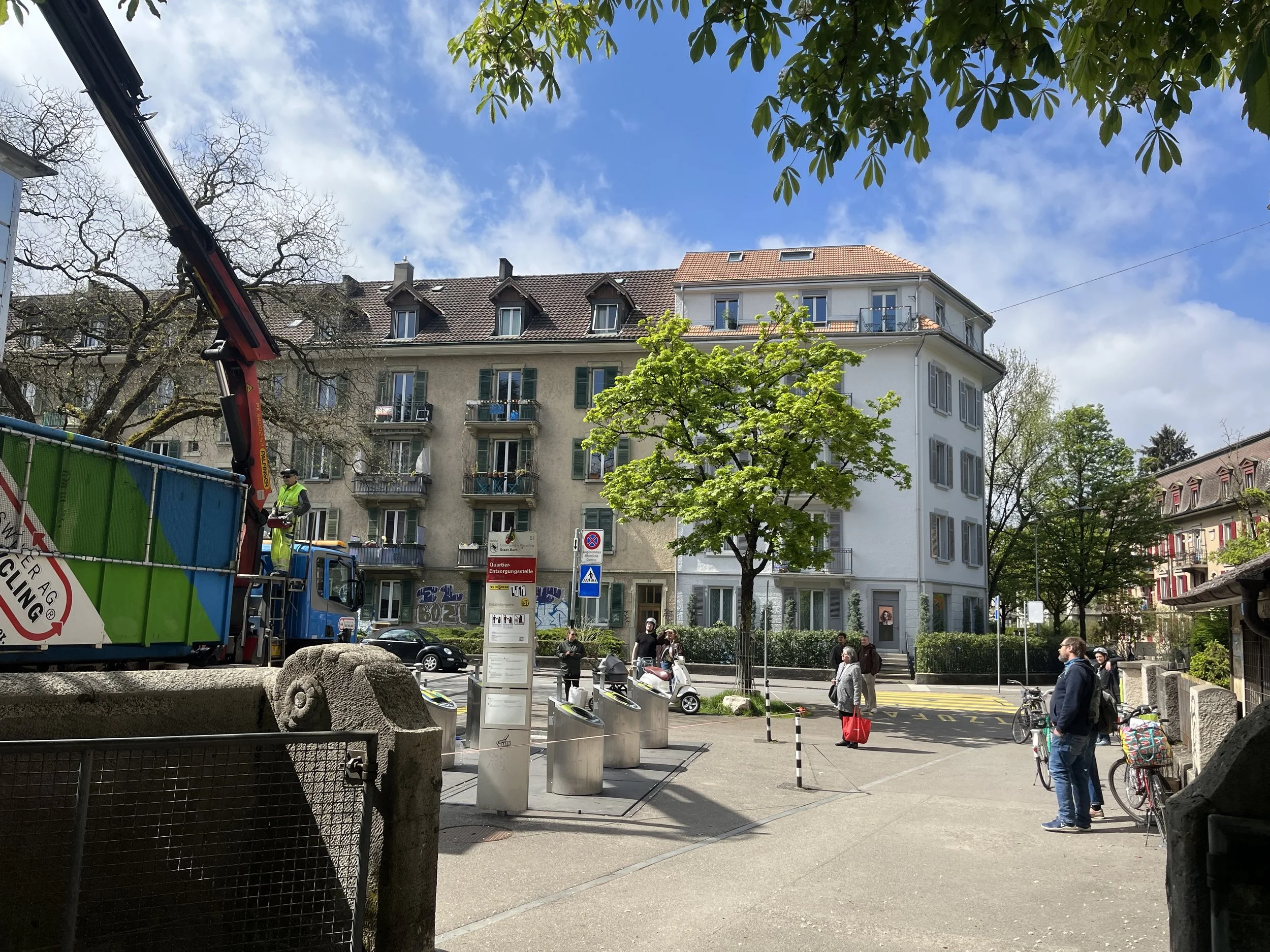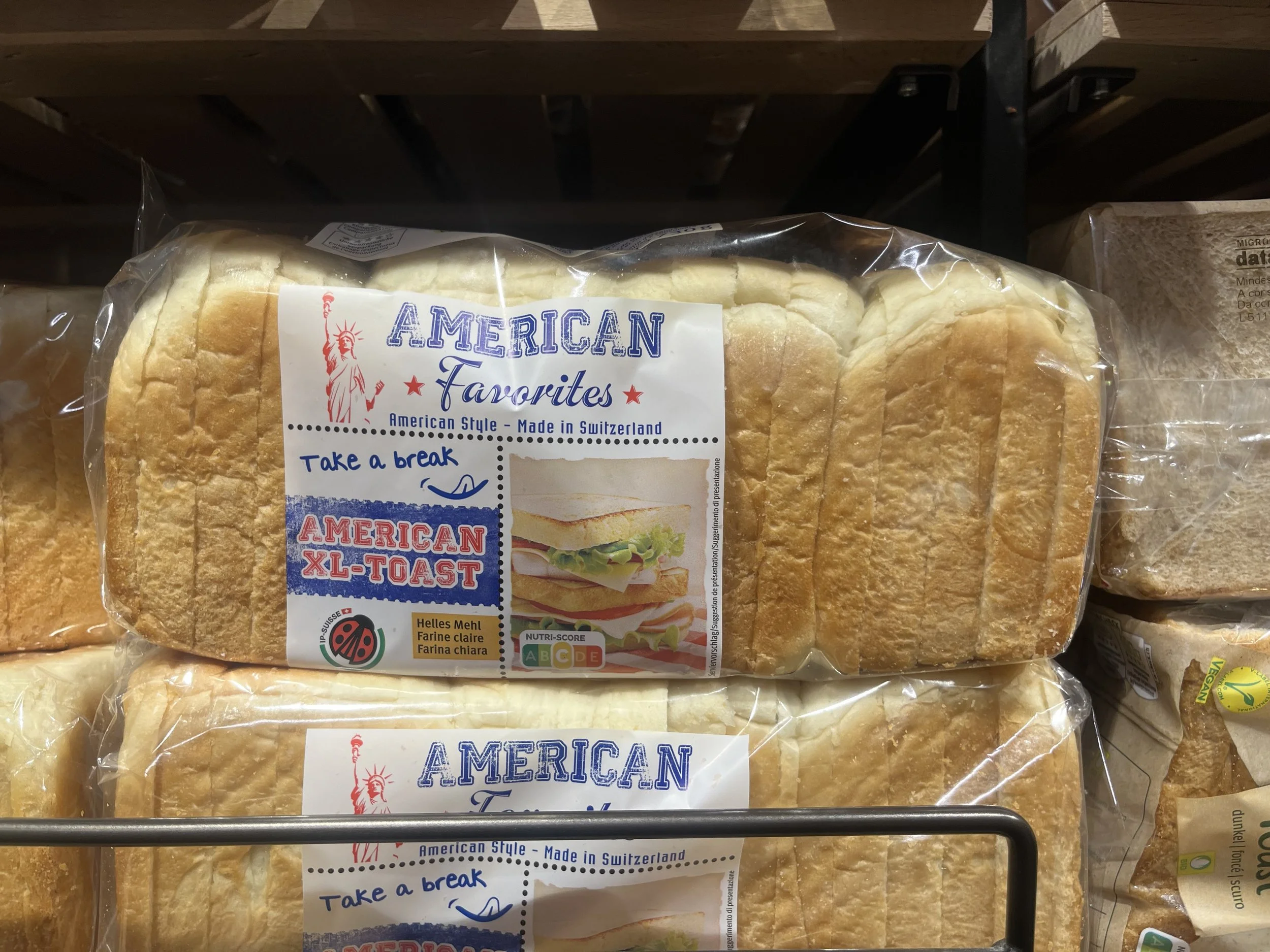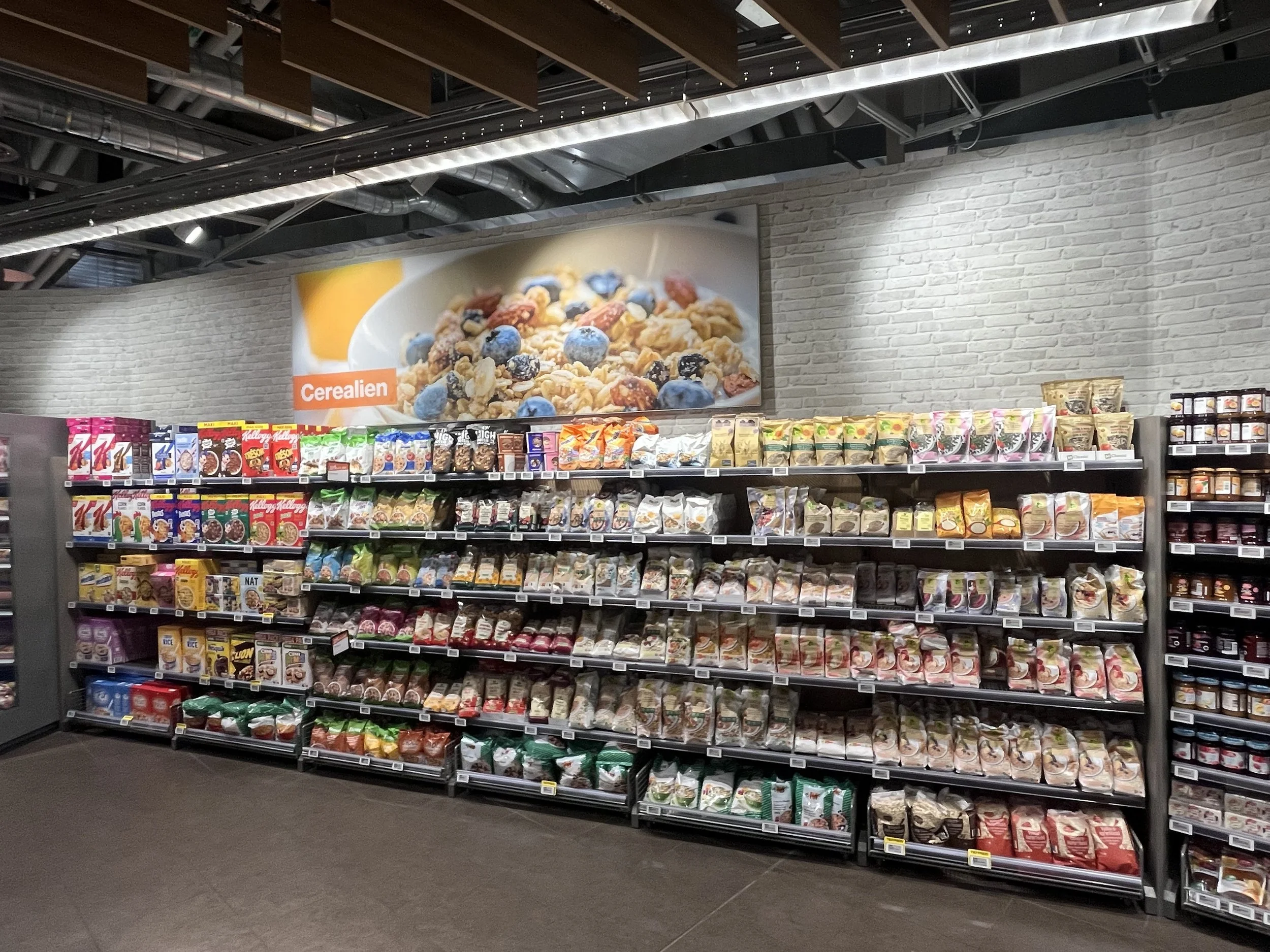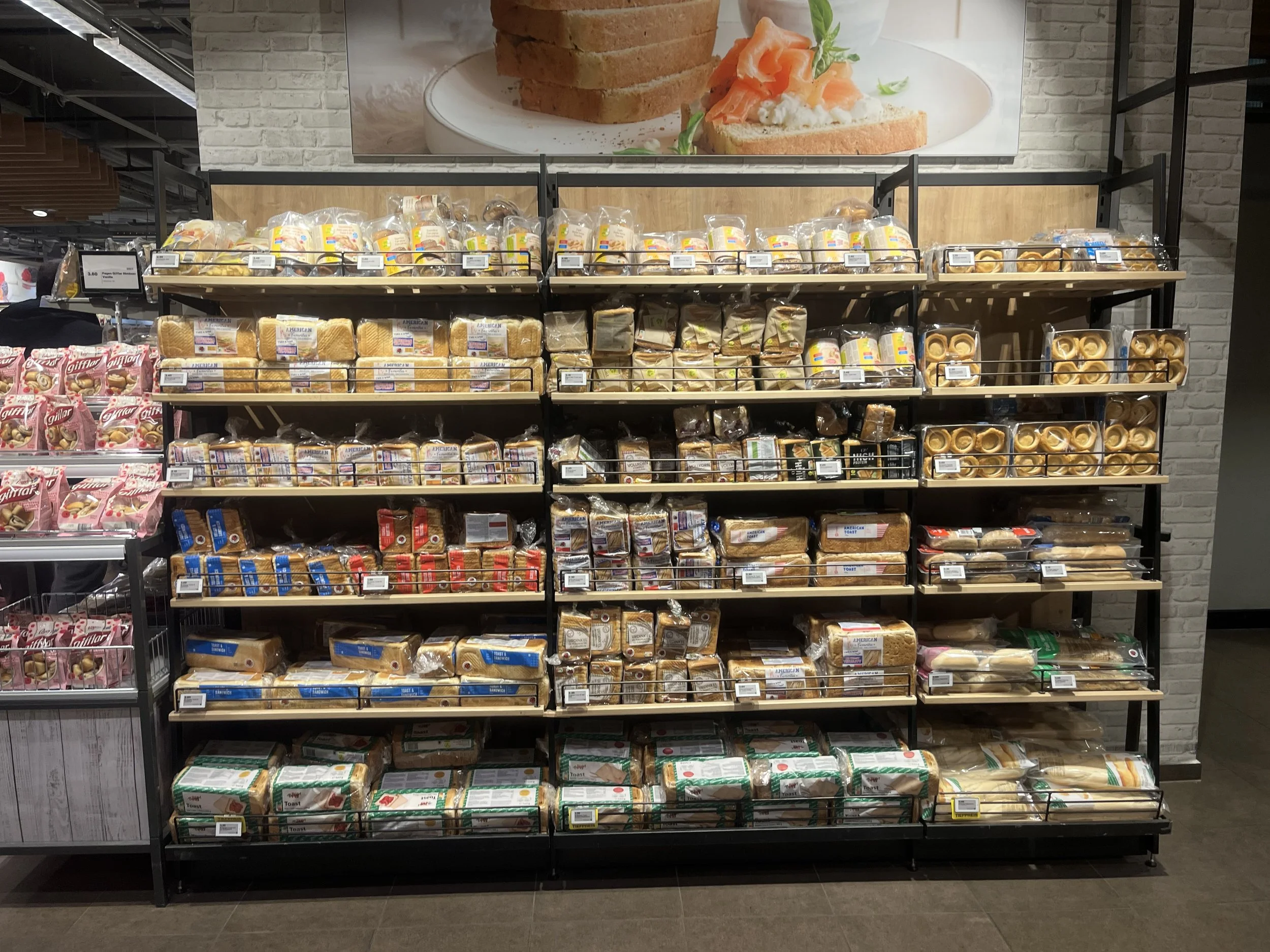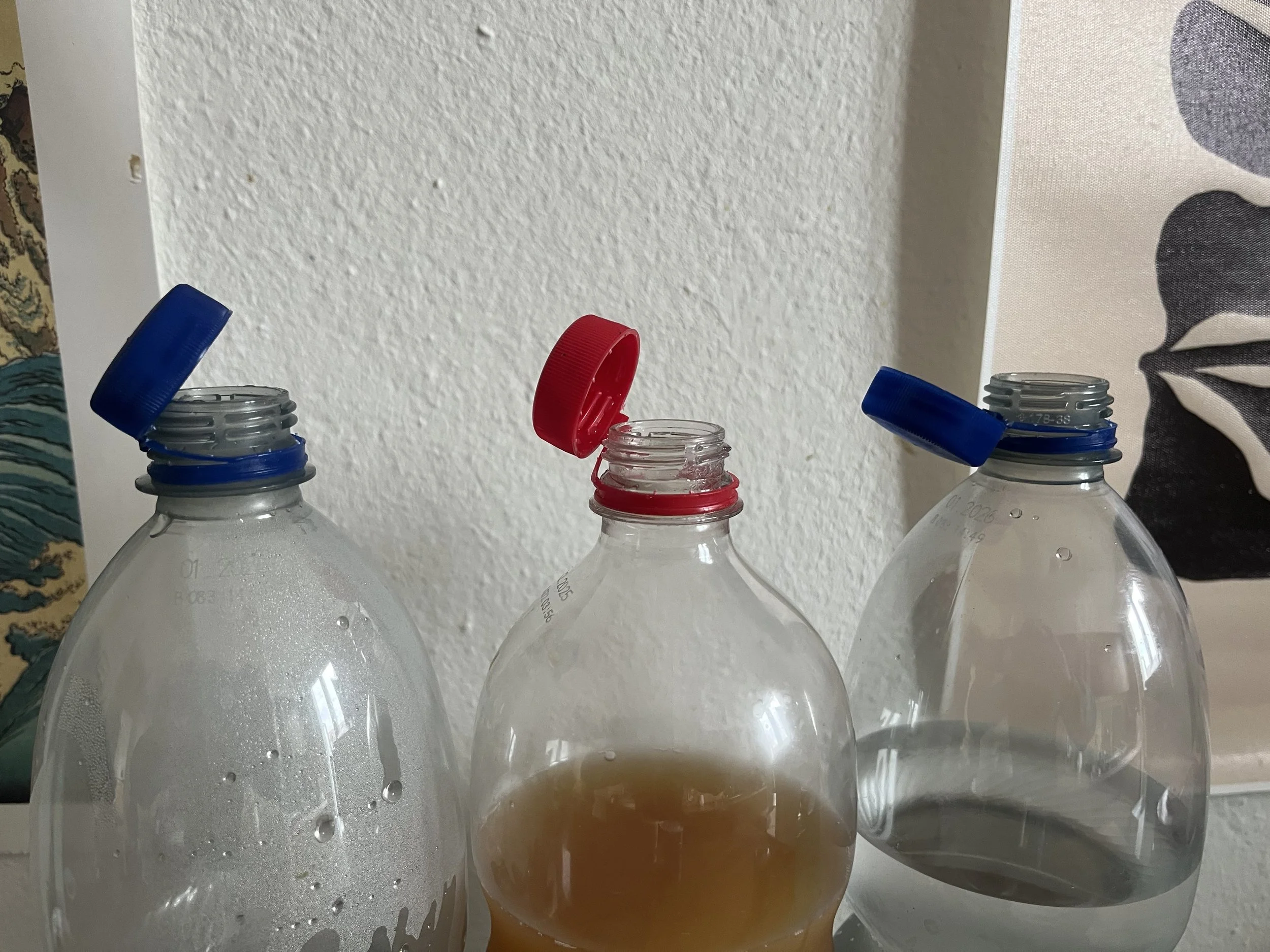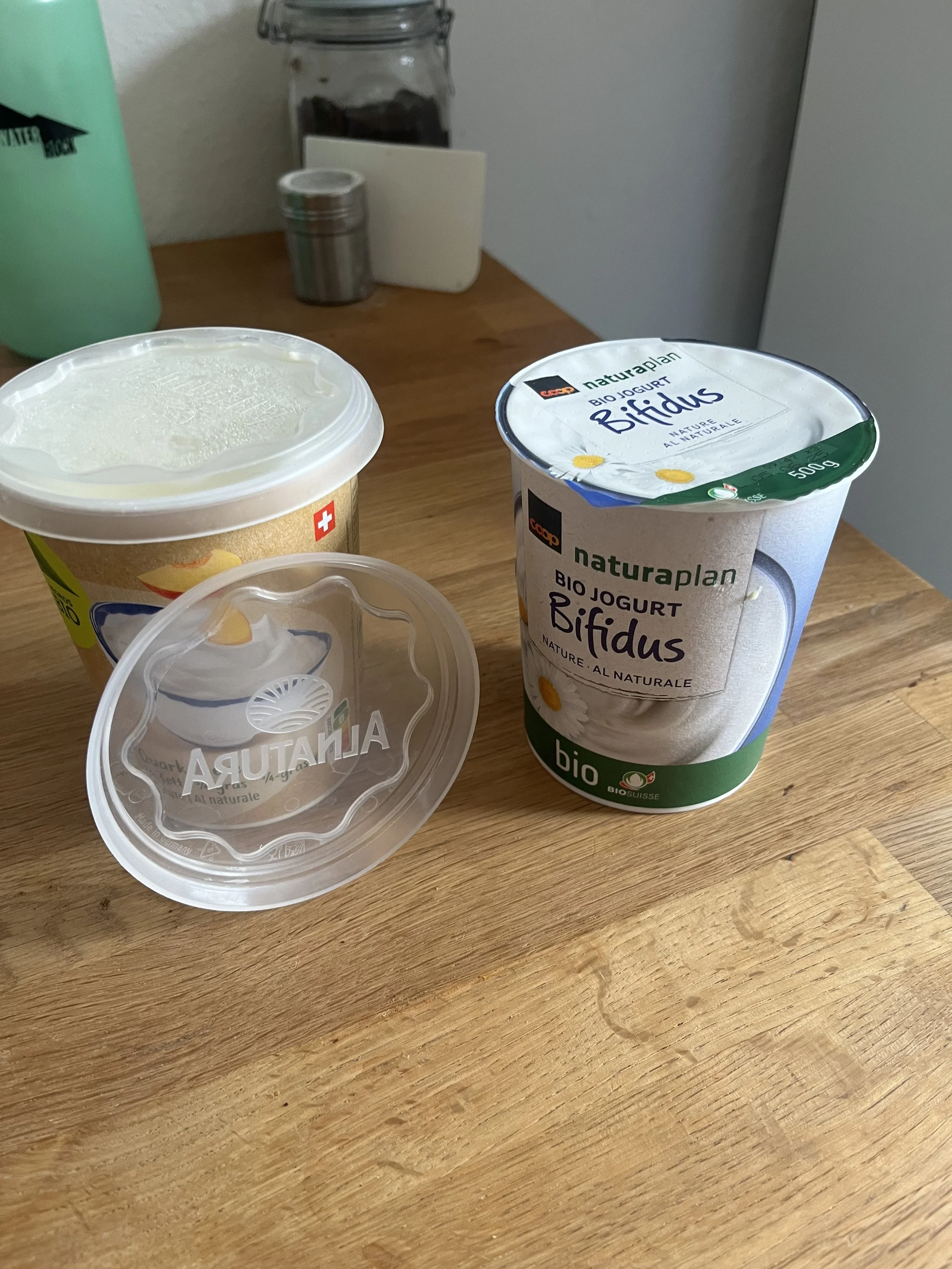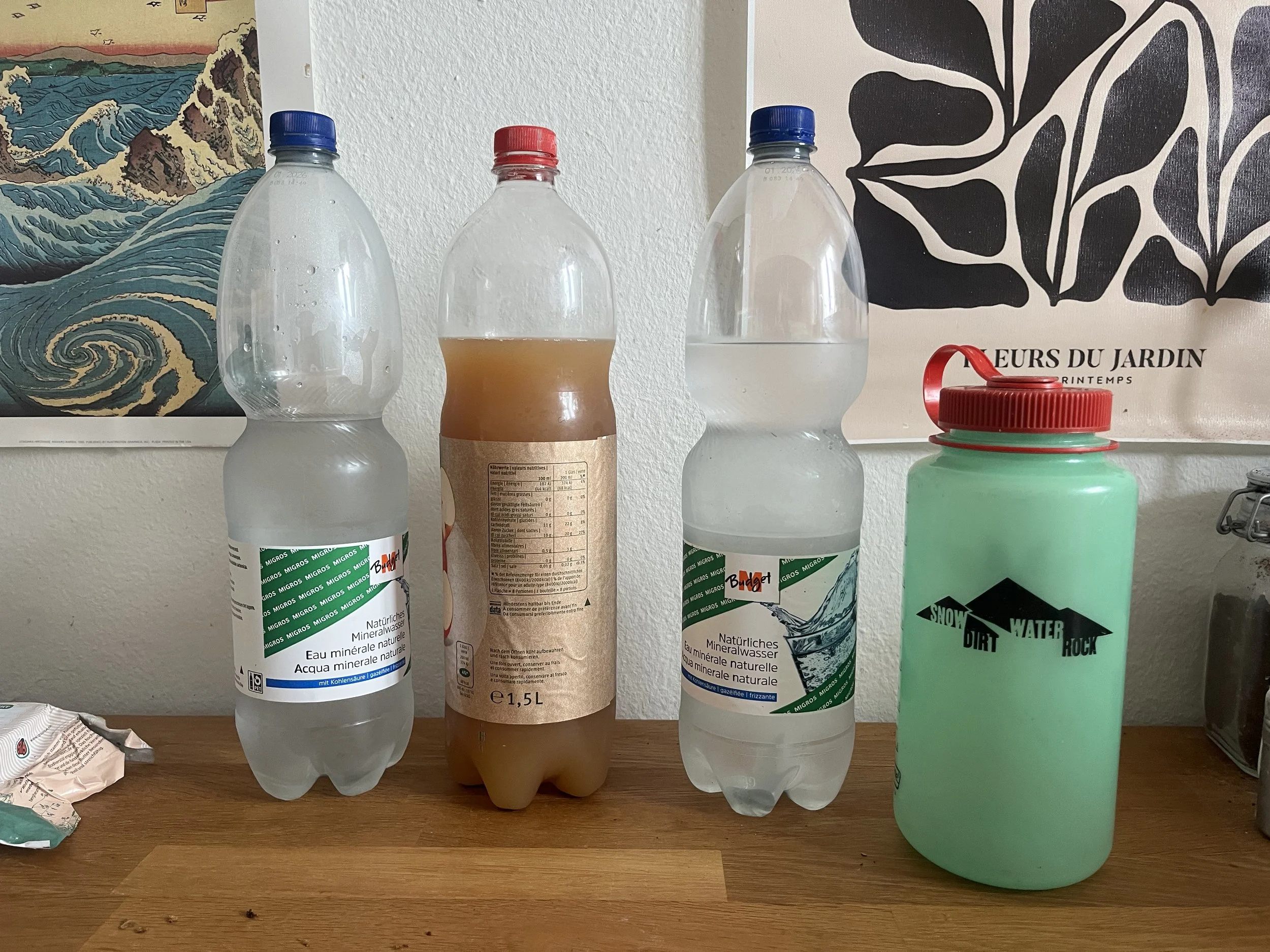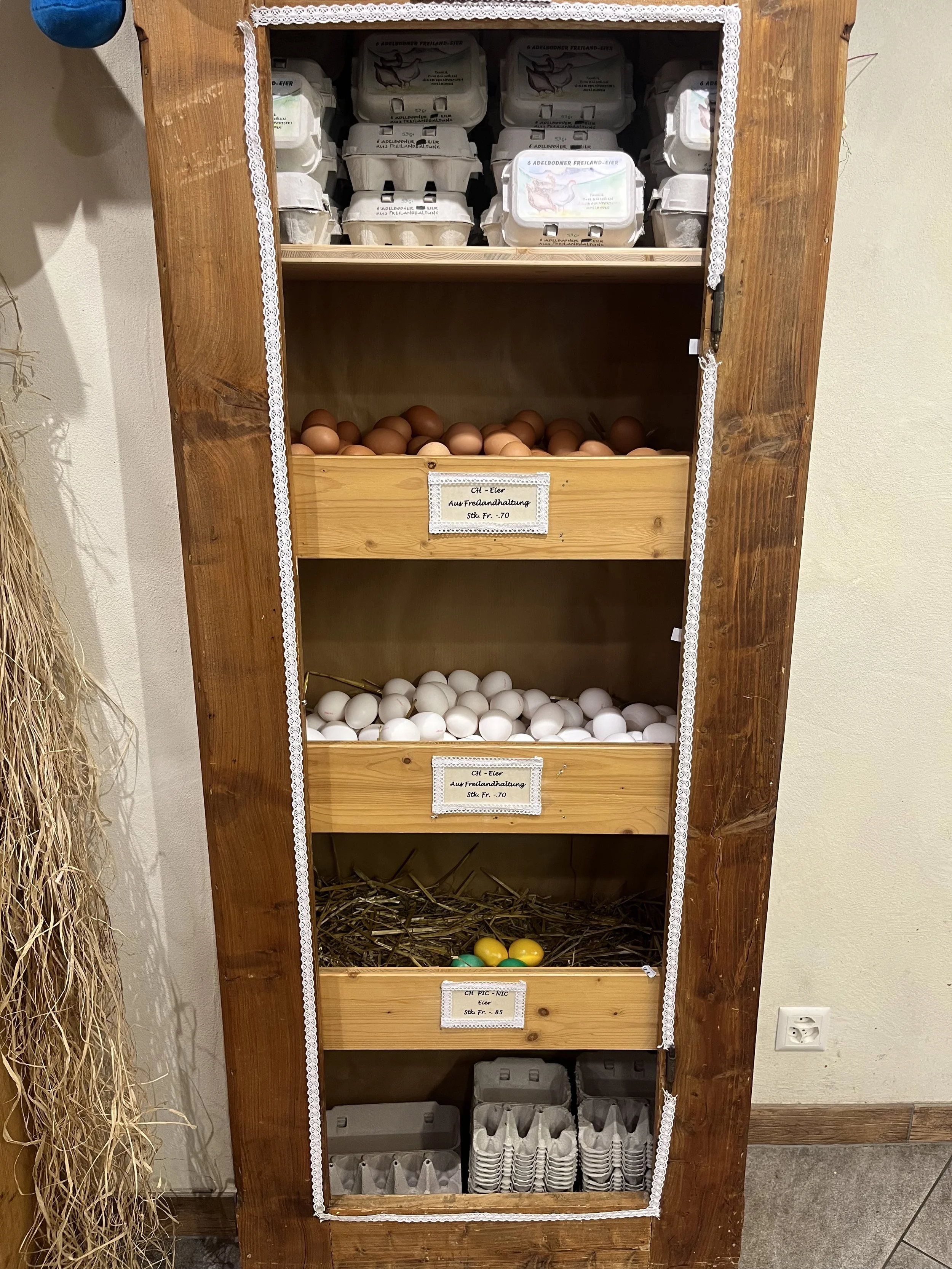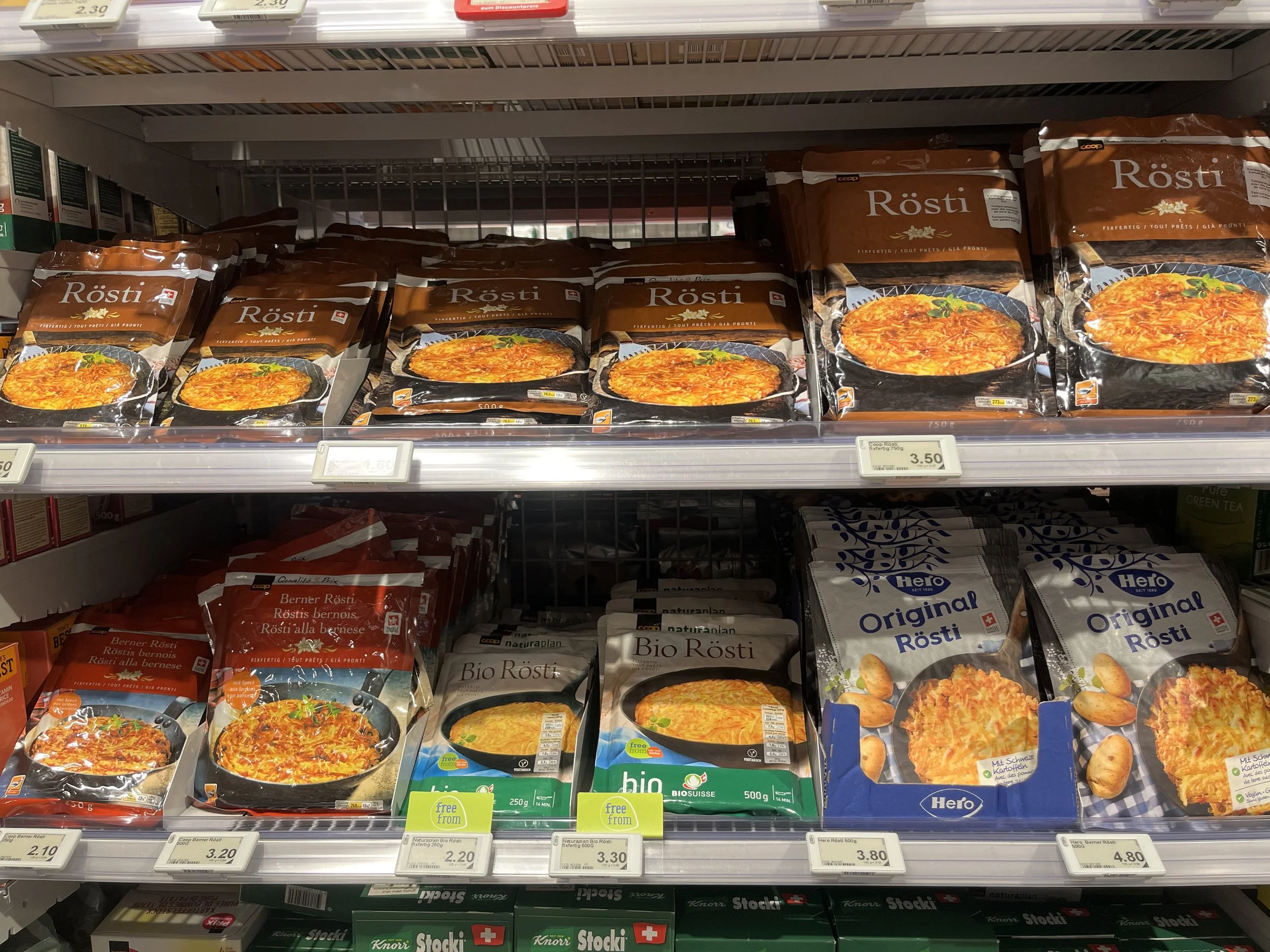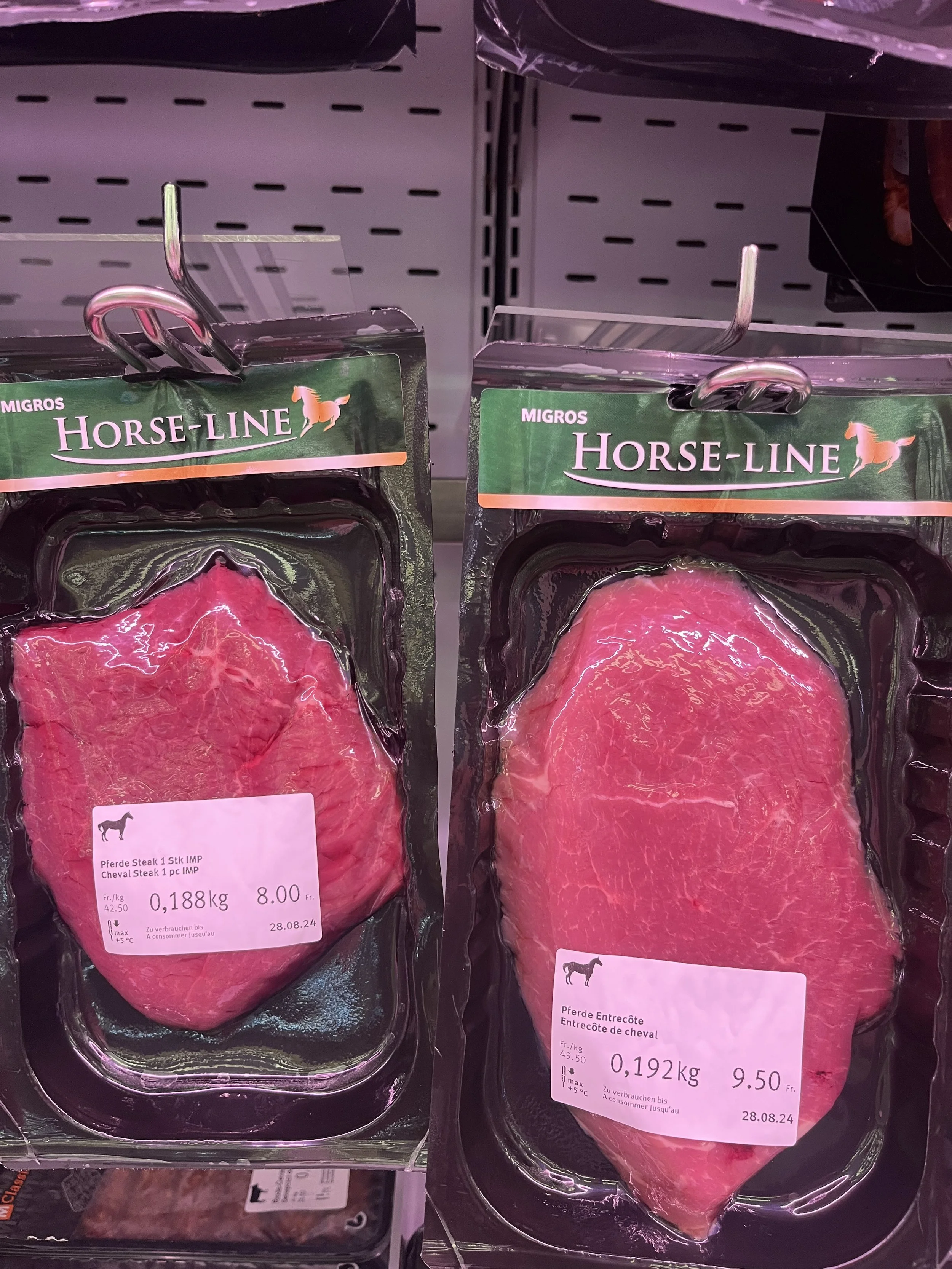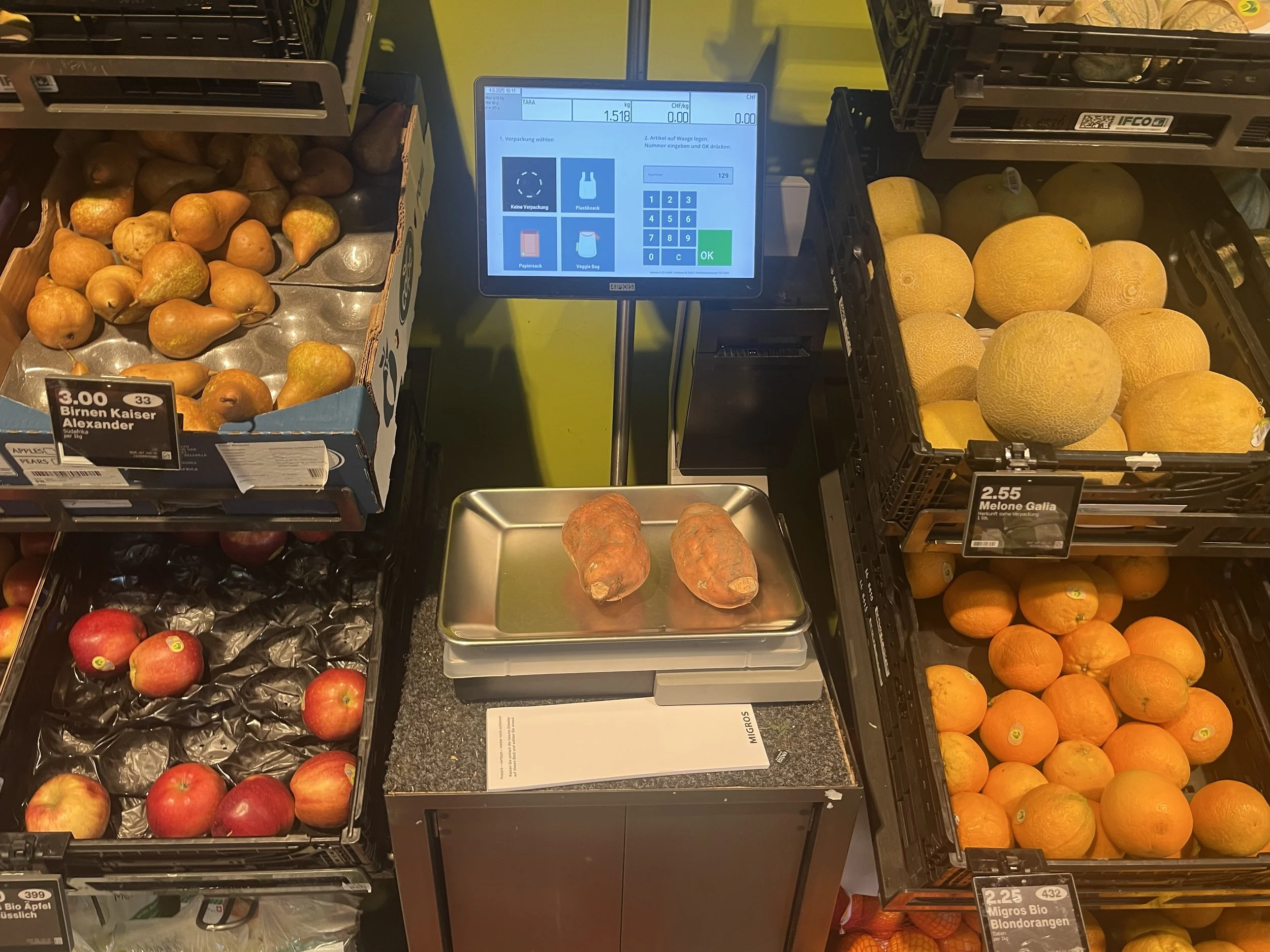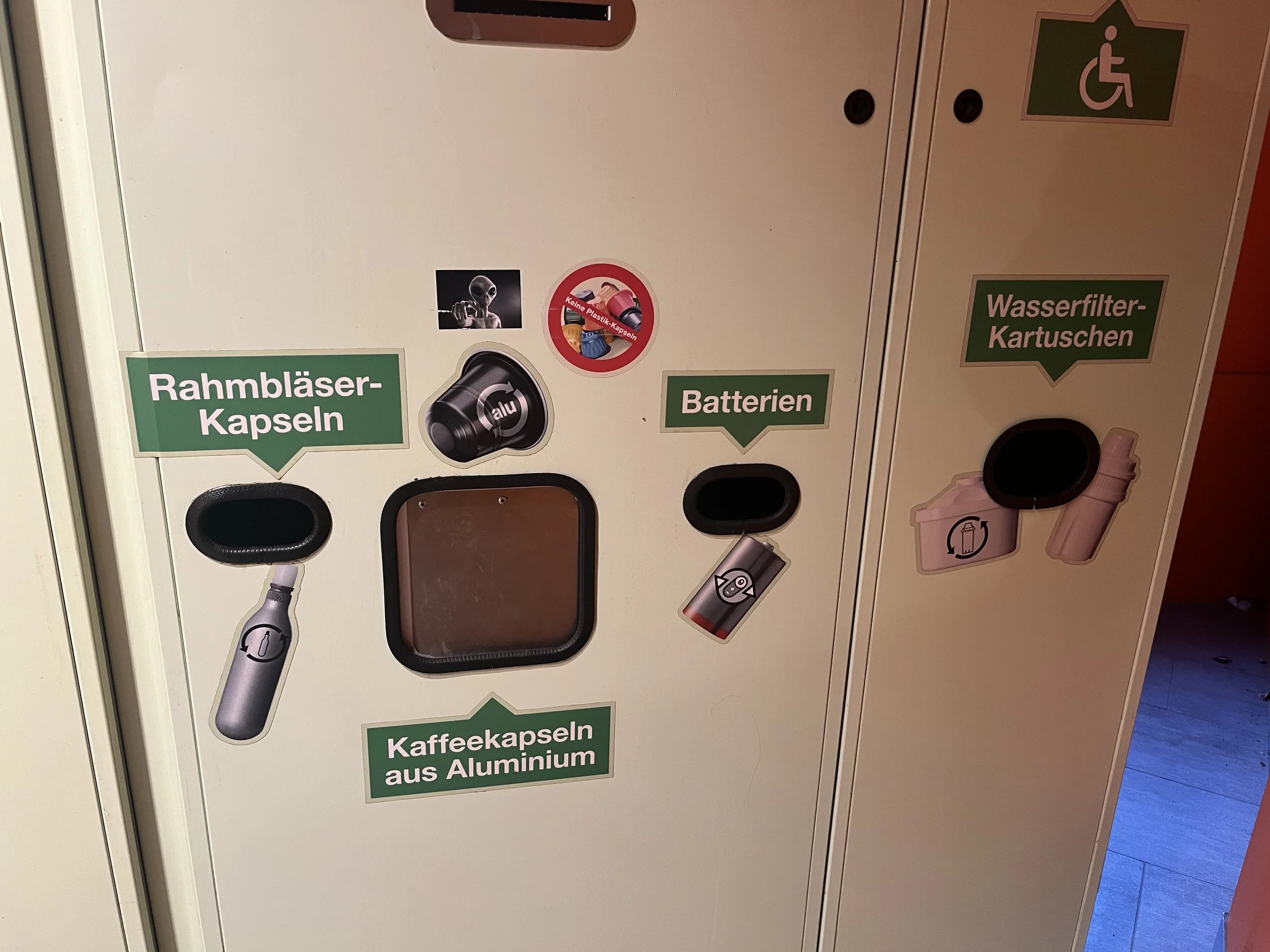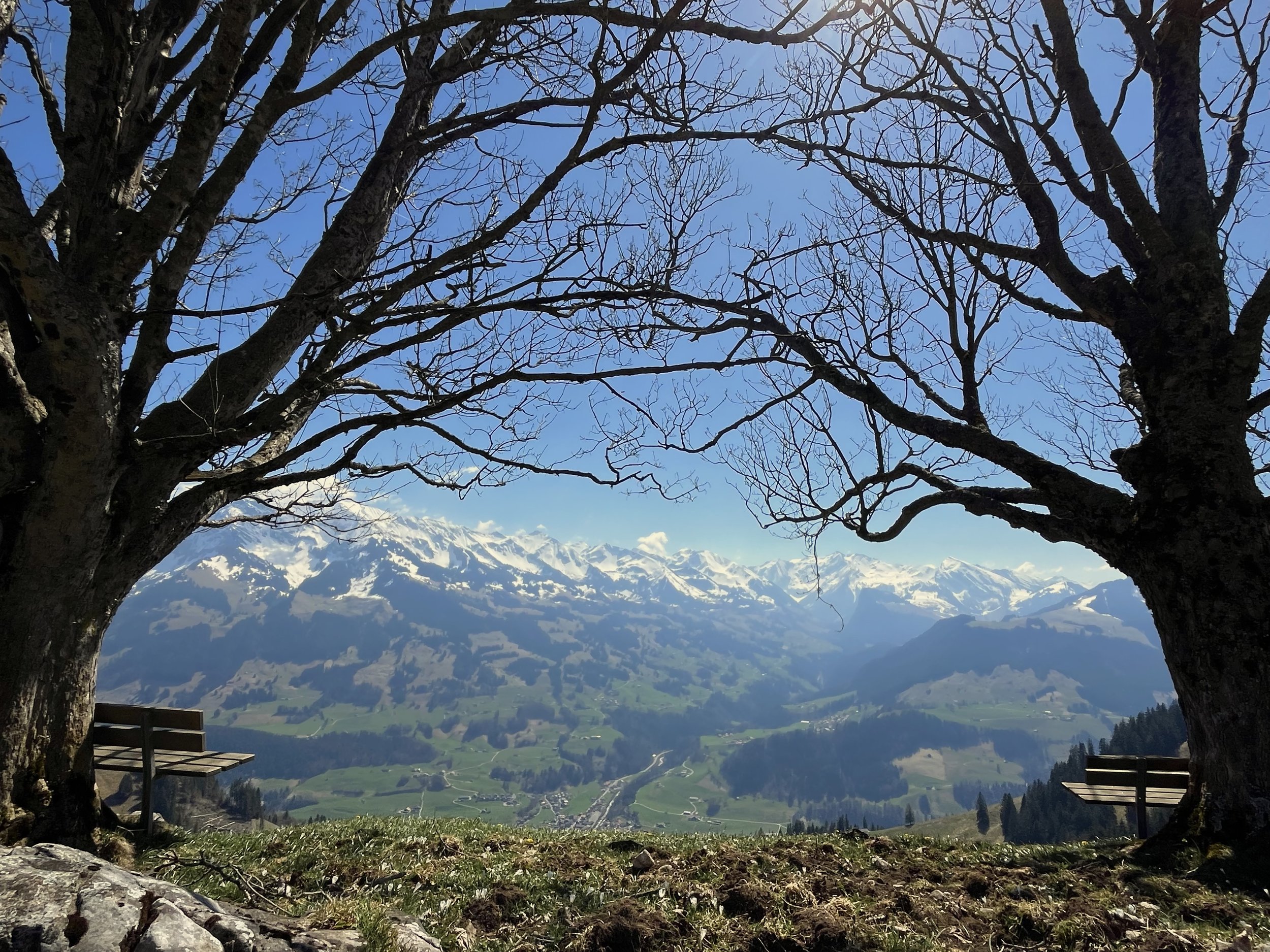
From the U.S. to Switzerland:
Surface-Level Differences
Moving to Europe from the U.S. wasn’t just a change of address, it was a full-blown shift in sights, sounds, and smells. Like diving headfirst into a cauldron of sensory soup where everything familiar melts away and suddenly you're swimming in a world completely different from what you’re used to. From the bones of the buildings to the guts of the apartments, from the tiny-ass streets to the swarms of bicycles. Grocery stores that close before you even realize you're hungry or they just aren't even open. (sundays) Bern hums at a different frequency. Ask for a glass of water in a restaurant and you’ve instantly marked yourself as a tourist. Just take the L, keep your dignity and fork over CH6.50 for that bottle of mineral. A stroll through the city becomes a soundtrack of languages and sometimes all of it will leave you standing there with a low-grade fever of awe, confusion or anger depending on the your ability to roll with the punches.
Here are some things i would call home and say while channeling my best Goofy voice
a-huck, a-huck! Gawrsh! well that’s different!!
🏡 LEt’s sTaRt iNsiDe
Tiny refrigerators
If you're lucky, you’ll get what might generously be called "mid-sized", like the one below, just a bit larger than the mini-fridges you'd find in a college dorm room. In our second apartment, the fridge was literally smaller than the one I used to stash beer and leftover pizza in during undergrad.
Now imagine trying to fit a week’s worth of groceries into something that could double as an end table. Every shopping trip becomes a round of three-dimensional Tetris, where if you don’t stack everything with surgeon-like precision, the next time you open the door, something will fall out, usually the one container you didn’t seal properly or just threw in and quickly shut the door before it fell out. Like that leftover Thai curry that now paints your kitchen floor in an oily, orange splash. It’s not a kitchen appliance. It’s a chilled shoebox
Flat iron cooktops
By the time i figured out where on the dial and when enough time had passed in order to cook the perfect over easy egg we had moved into a different apartment. Drop a bit of cheese on this bad boy and it bakes itself into the surface, then haunts you every time you turn it… i prefer the stink of gas, that sharp sting in the nostrils. How on any day you could blow your apartment to hell if you forget to turn it off and flick the lights on.
THE WINDOWS TILT INWARD
When I first went to open the window (and many times after that), I twisted the handle, expecting it to swing open like any sensible window. Instead, the top unlatched and the whole pane tilted inward like it was about to detach from the wall. My arms shot out to catch it, pure instinct, but it didn’t need saving. This was intentional. It just hung there, leaning fearlessly towards me, letting in a breeze that washed away the adrenaline spike I’d just endured.
Eventually, after a few startled encounters and what I can only describe as light-risk exposure therapy, I regained a shaky trust. Turns out these windows open two ways depending on the angle of the handle, a detail no one thought to mention before I nearly shit myself.
Oh, and before I move on from windows: they don’t use screens here. Not even on the fifth floor. You can open your window wide enough and just dive right out of if you’re feeling dramatic. It’s fantastic in the summer, when ripe fruit on the counter send out those sweet pheromones bees respond to. The bees buzz in like they own the place, circling your peaches and plums like they’re standing guard over the last scraps of a lion kill.
At night, the real hell begins. The bees clock out and the mosquitos clock in. You know the feeling, the dreaded awareness that one is in the room. That high-pitched whine near your ear, then its retreat into silence. You hear it approach the other ear, feel it land, and slap yourself and hope you got it. You lie there in the dark, waiting. Wondering. Then just as you drift off, again, the whine returns. You flail. The whine vanishes in the dark. You flip on the light. You lie back down. The whine returns. It's psychological warfare.
And all the while, its the dog days of a humid summer, and so the window stays open. No screens. No mercy. Just you, a thin sheet, and the buzzing certainty that you will not win this war.
Different Outlets
One of the first things you’ll notice when you try to plug in your phone charger? It won’t fit. No problem, you think, just use that trusty European adapter you brought from your last trip. WTF, why won’t this work?! That’s because Switzerland, true to form, uses its own system: Type J outlets, a good ole fashioned two round pronger (sometimes a third for grounding).
Why? Because Switzerland likes to be different.
It isn’t part of the European Union (yep, even though it’s smack in the middle of it) and doesn’t use the euro either.
But back to outlets…
Type J is a totally different beast from the flat-pronged Type A/B plugs used in the U.S.
It’s about power baby. Swiss outlets run at 230 volts, while U.S. appliances are designed for 110–120 volts. That means if you plug in your American hairdryer, curling iron, or blender without a proper voltage converter, CONVERTER (not plug adapter), you’re not just risking a blown fuse, but potentially staging a live science experiment.
And no, your Apple charger isn’t magically immune. Some electronics (like laptops and phone chargers) are dual voltage, thats what that “110–240V” written on the little block means. Those are safe with just a plug adapter, which changes the shape but not the voltage. But most appliances from the U.S. are not dual voltage. So unless you’re trying to start a fire with your flat iron, leave it at home.
Why the difference? It goes way back to early electrification, Europe settled on higher voltage to transmit electricity more efficiently over longer distances, whereas America went with a lower voltage due to insulation limitations.
Meanwhile, most of the rest of Europe runs on either the Europlug or Schuko
So! unless you’ve got a specific Swiss adapter, your devices are shit out of luck! And depending on the voltage, possibly fried. Welcome to Switzerland.
When a Swiss rental says “unfurnished,” they’re not kidding, they don’t even come with ceiling lights, just a sad little wire hanging from the ceiling, waiting for some dumbass American with a death wish and a screwdriver. Coming from the U.S. public school system, where our knowledge of electricity topped out with battery-powered circuits in 5th grade science class and the risk of ending up with a cartoon-style zap and a smoking hairdo like Harry in Home Alone 2. We decided to leave that one for Nicole’s father to assemble for us.
And closets? If you lucky. If you want a place to hide your clothes, you’ll need to buy a wardrobe (or Garderobe, if you want to sound local).
Unfurnished really means unfurnished
Random “inside an apartment” things i thought were different
🏞 LEt’s gO oUtsiDe
Neighborhoods here are completely unlike any American neighborhoods I’ve ever seen. It’s like they never sat down with a master plan, they just started building, working around what was already there. Instead of bulldozing and laying out a gridline of roads, Bern seems to have grown organically, building by building, decade by decade. Streets curve not because of design but because something was already there. The result is a kind of beautiful chaos. Every where you turn, there something is. Tiny parks, soccer fields, hangout spots, bars and places to have a campfire appear where you turn least expect them. Wedged between apartments, tucked behind hedges, beneath highway bridges or at the end of winding footpaths. These spaces weren’t planned by committees, they were shaped by time, grown into with a quiet respect for letting things be. It feels lived-in, grown rather than built. There’s a comradery of sharedness, like an ant colony where everyone accepts that what space exists is all there is, and that’s that. There’s a chillness, an unassuming selflessness in it, like the space belongs to everyone and no one at the same time. Sure, there are designated hangout spots, but just as often, people gather wherever feels right. On a curb, the edge of a planter box, a stretch of shared grass behind an apartment block. It’s unspoken, unbothered and reminds me of the vibe of a dog. Like when you invade its space, it doesn’t cause a scene, it just gets up and lays down elsewhere. That’s the feeling. Wherever chill can happen, happens chill.
some communal places
Speilplatz
I was lucky as a kid, growing up before the age of lawsuits and cookie cutter playgrounds, where shining metal slides seared the back of your legs on a hot summer day and colorful, rusty merry-go-rounds never spun fast enough. But one playground relic in particular tickles my fancy and perhaps it was like it was created by a prison engineer.
Picture this: a metal cylinder made of welded steel bars, about seven feet tall and just wide enough to squeeze through. The whole thing sat atop four industrial springs, one at each corner, letting it rock, buck, bounce, and sway with wild, unrestrained energy. It was easy to bonk your head if you weren’t careful, especially when we were playing “who can stand in the center” while kids surrounded it and yanked it around with the force of a mechanical bull.
With a bit of imagination, climbing in felt like stepping into a gladiator arena for kids. You’d wedge your way through the bars like a monkey, grab hold of the cold steel and then someone from the ground would push and yank. Hard. The cylinder would tip and thrash, its springs groaning and screeching in protest. Inside, you’d cling to the bars like a tiny prison escapee riding out an earthquake.
Yep, those days are long gone. And here in Switzerland, playgrounds look very different. Hell, it’s not uncommon to see the kids just play in the street or turn a walkway into a makeshift soccer field. No towering plastic/metal monstrosities. Instead, you’ll find small, almost entirely wooden parks that feel more laid-back and natural. Smaller (way smaller), quieter, and stitched right into the residential neighborhoods. Instead of bright plastic tubes and faux-rock walls, here you get tree stumps or felled logs to hop across with a trust-based vibe: no hyper-cushioned floors, no warning signs. Kids are expected to fall, get a little bruised and figure it out. They start early with instilling independence and where American playground feel sterilized, bern playgrounds feel alive. And not just when its filled with kids, even an empty park somehow feels alive.
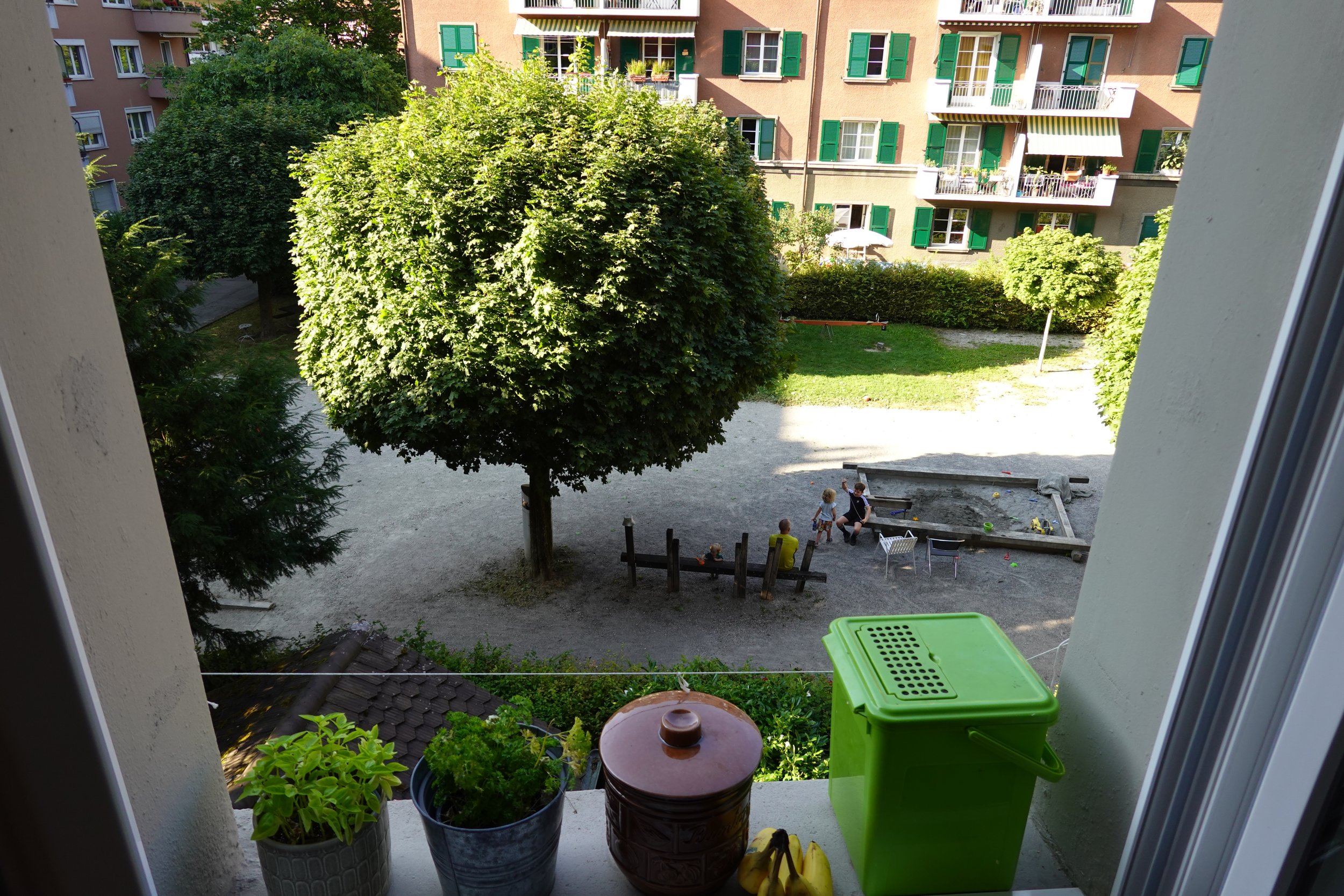
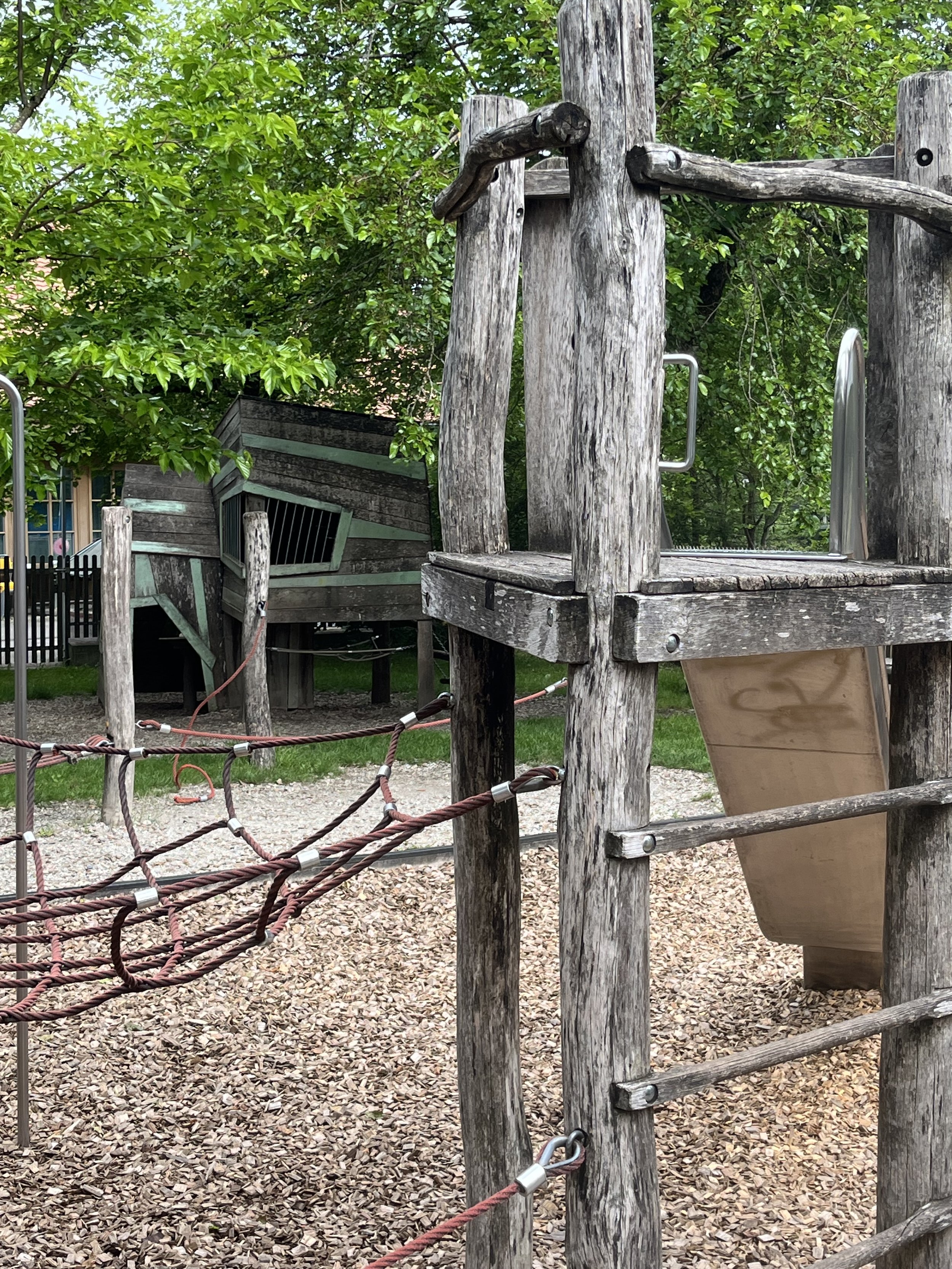
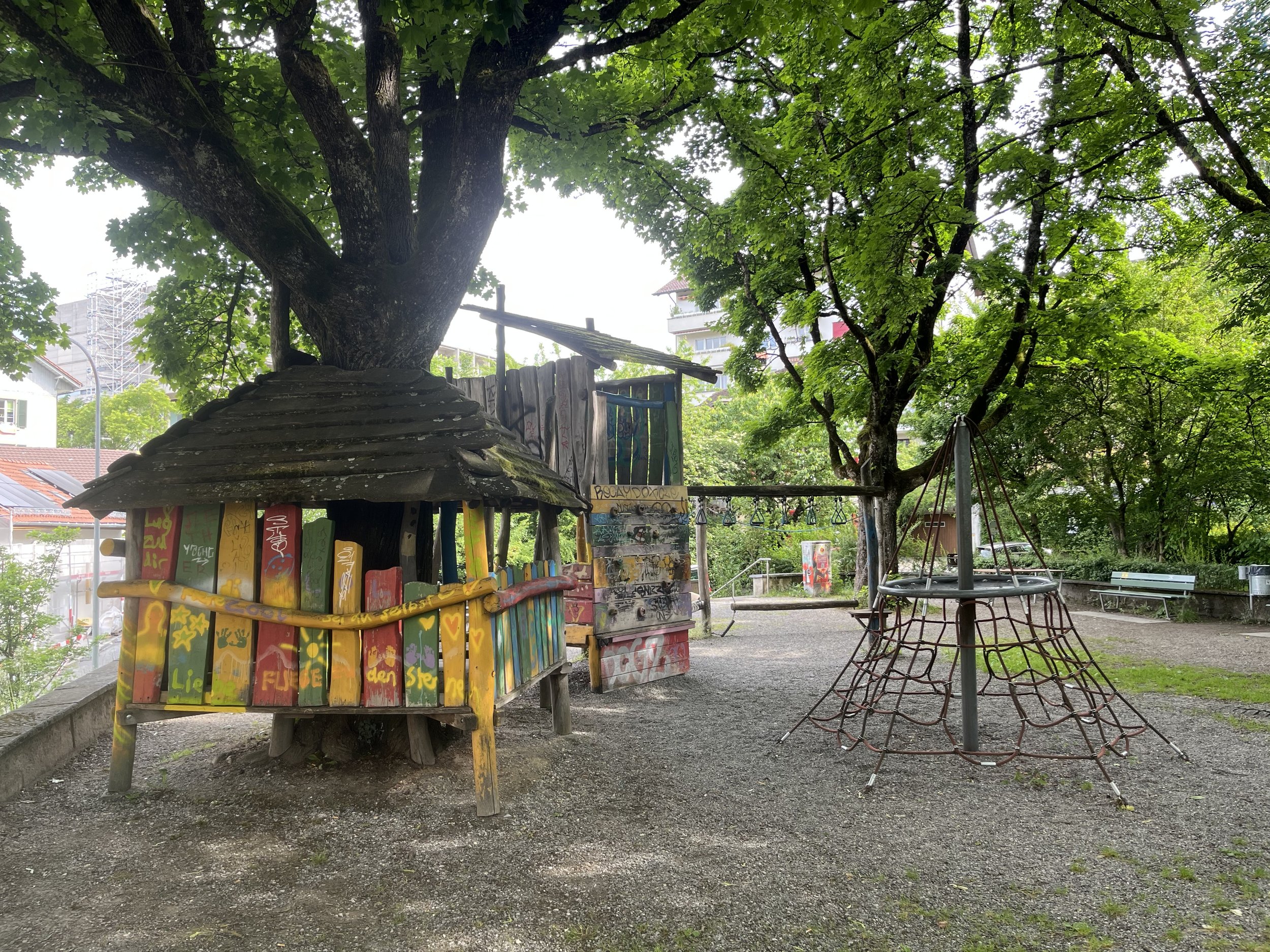
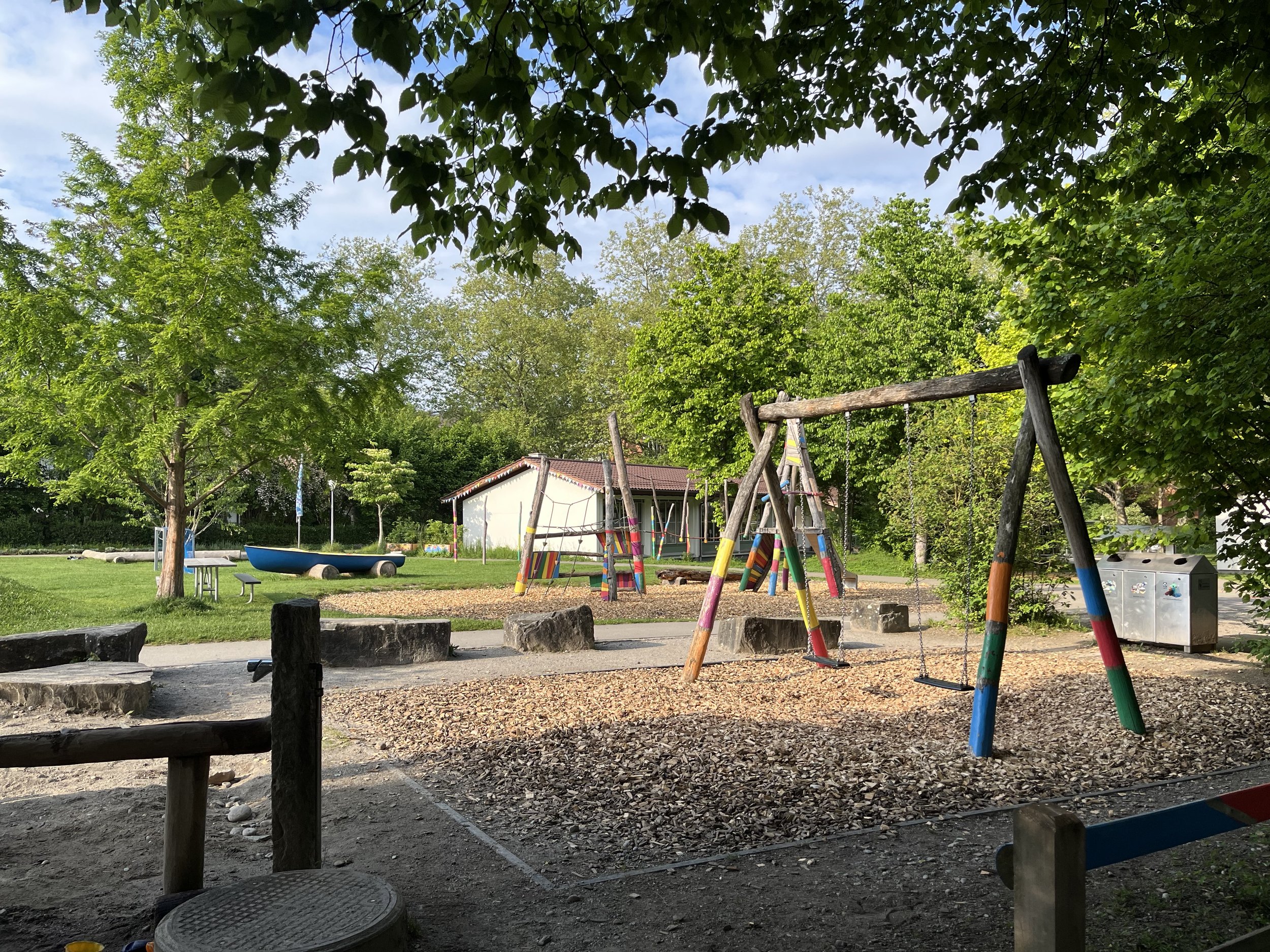
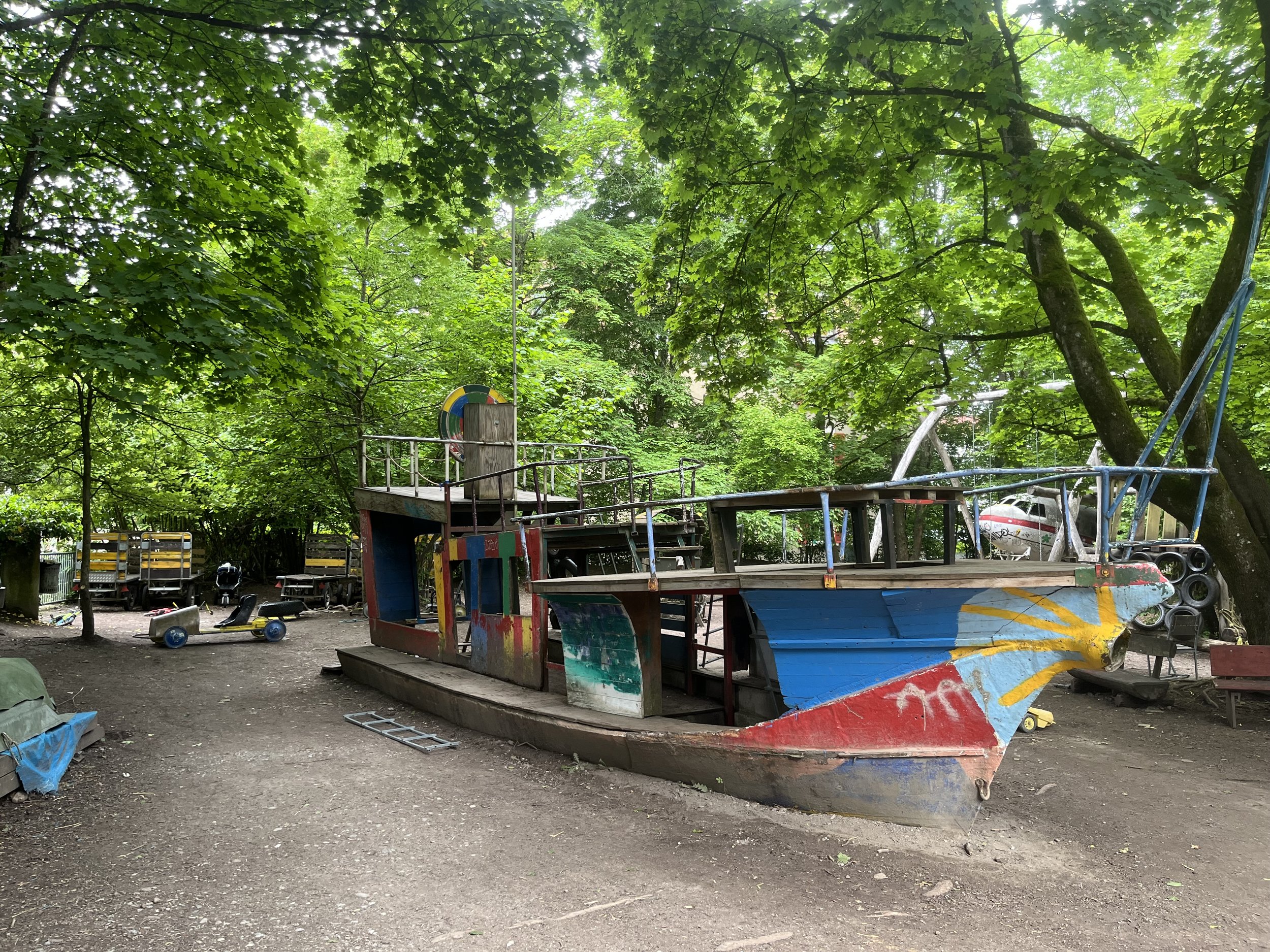
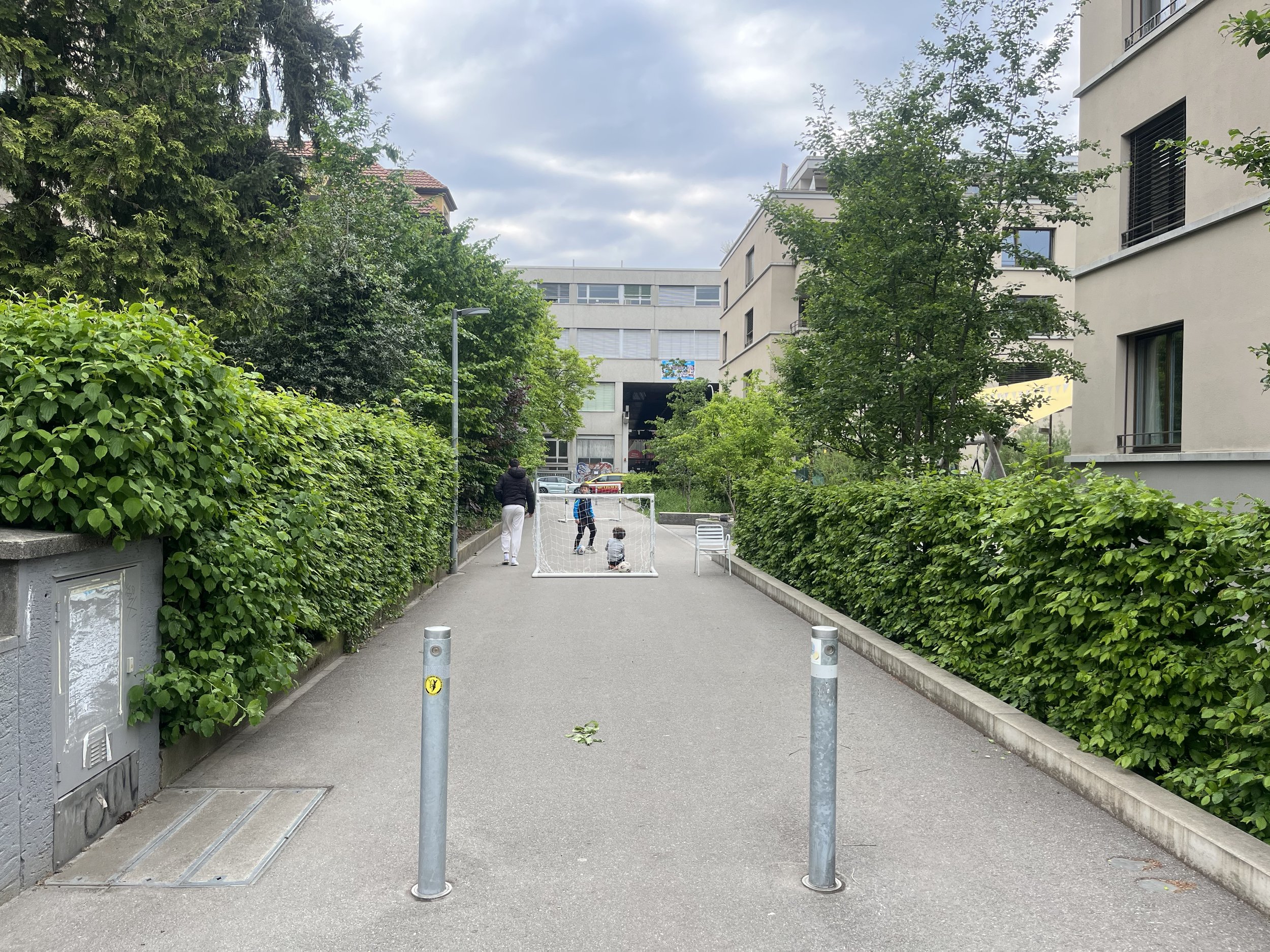
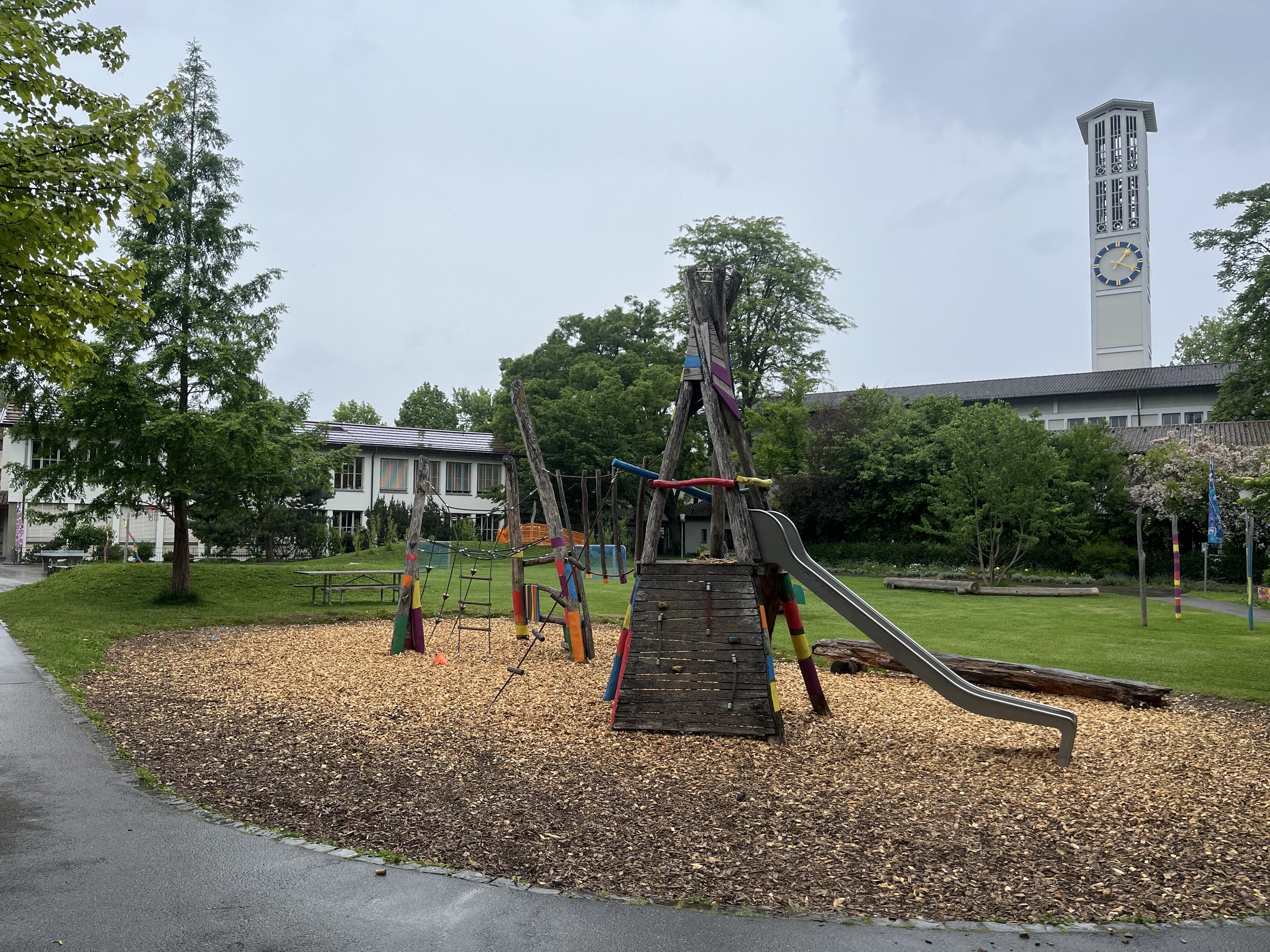
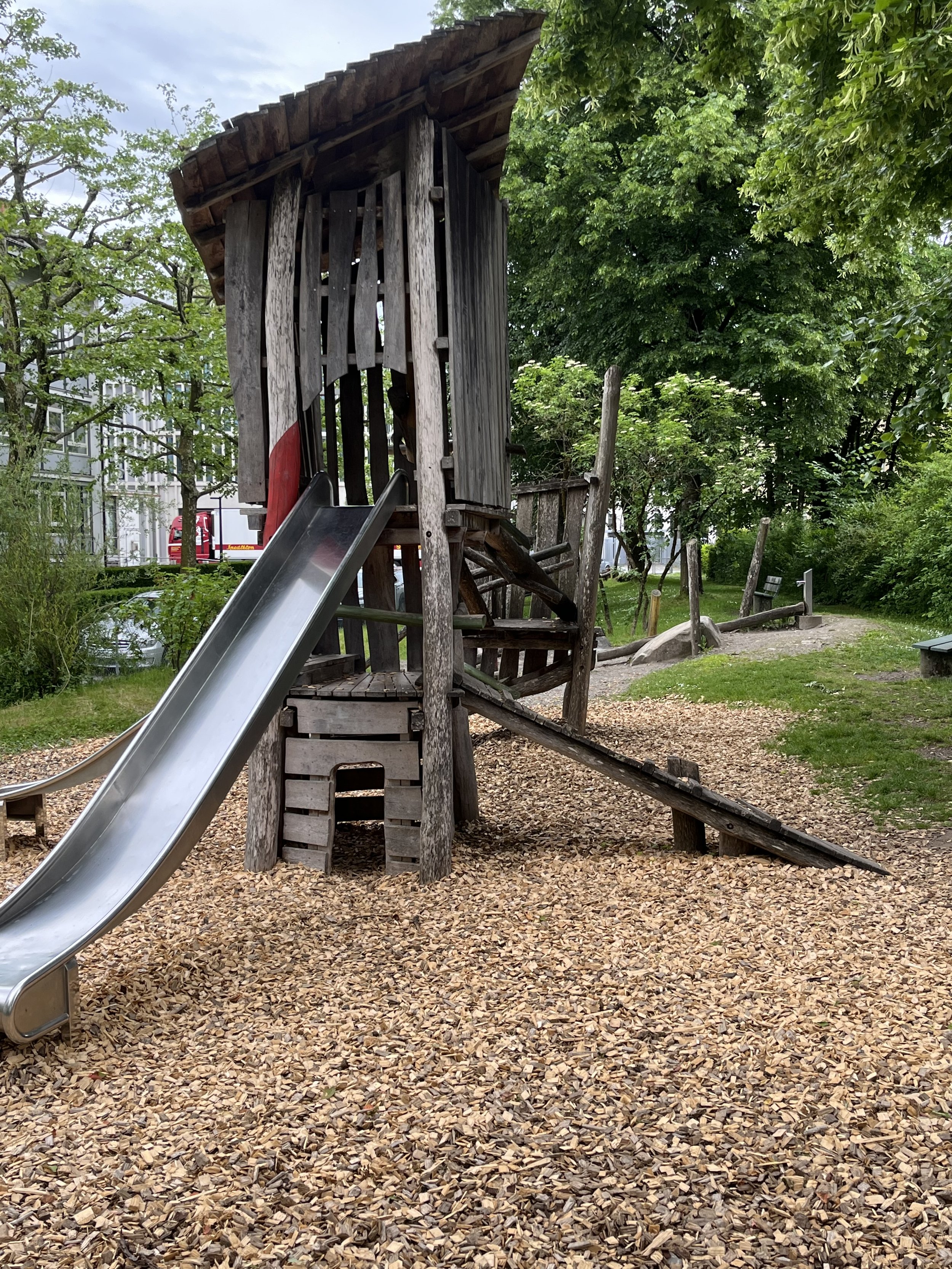
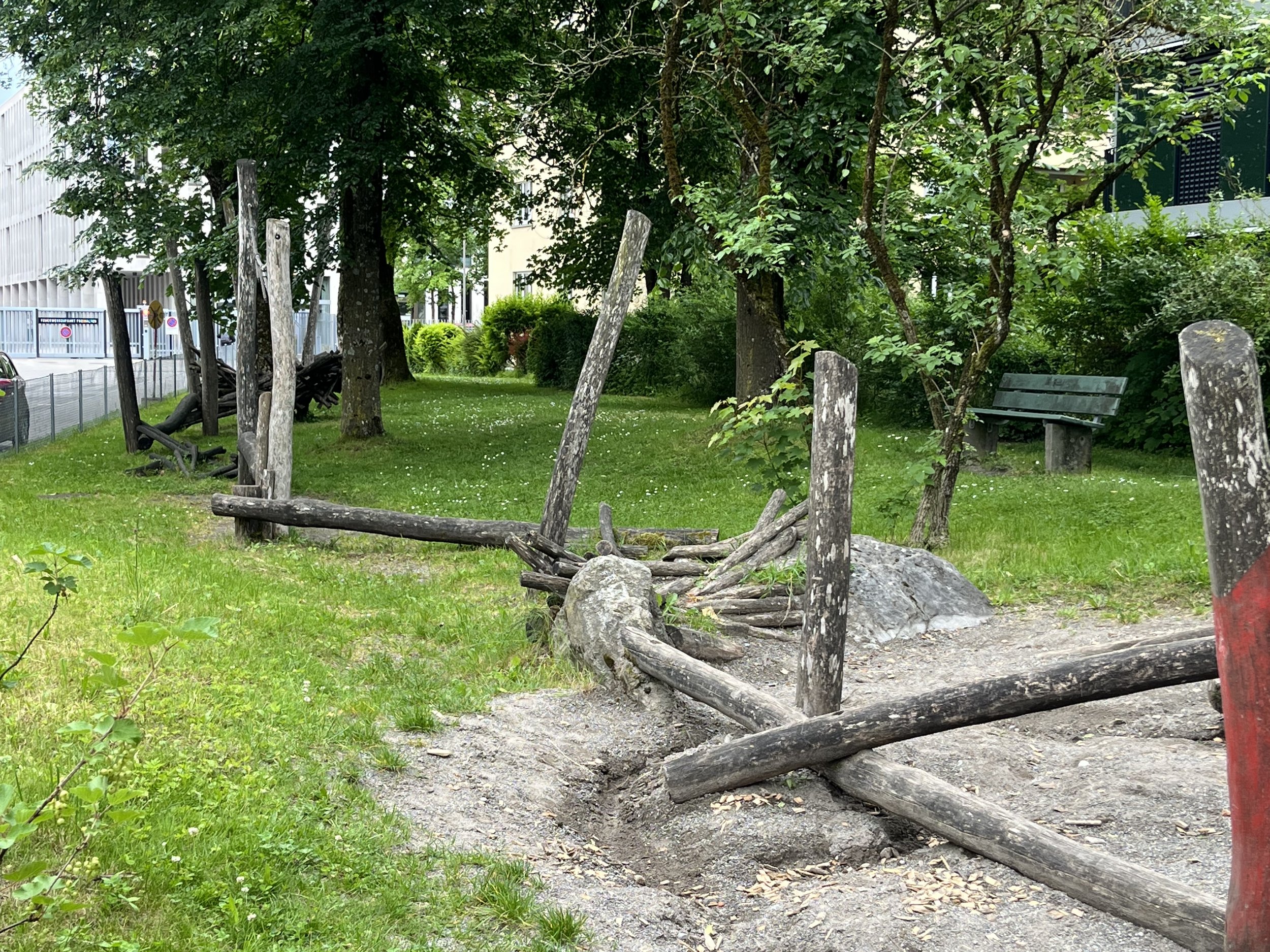
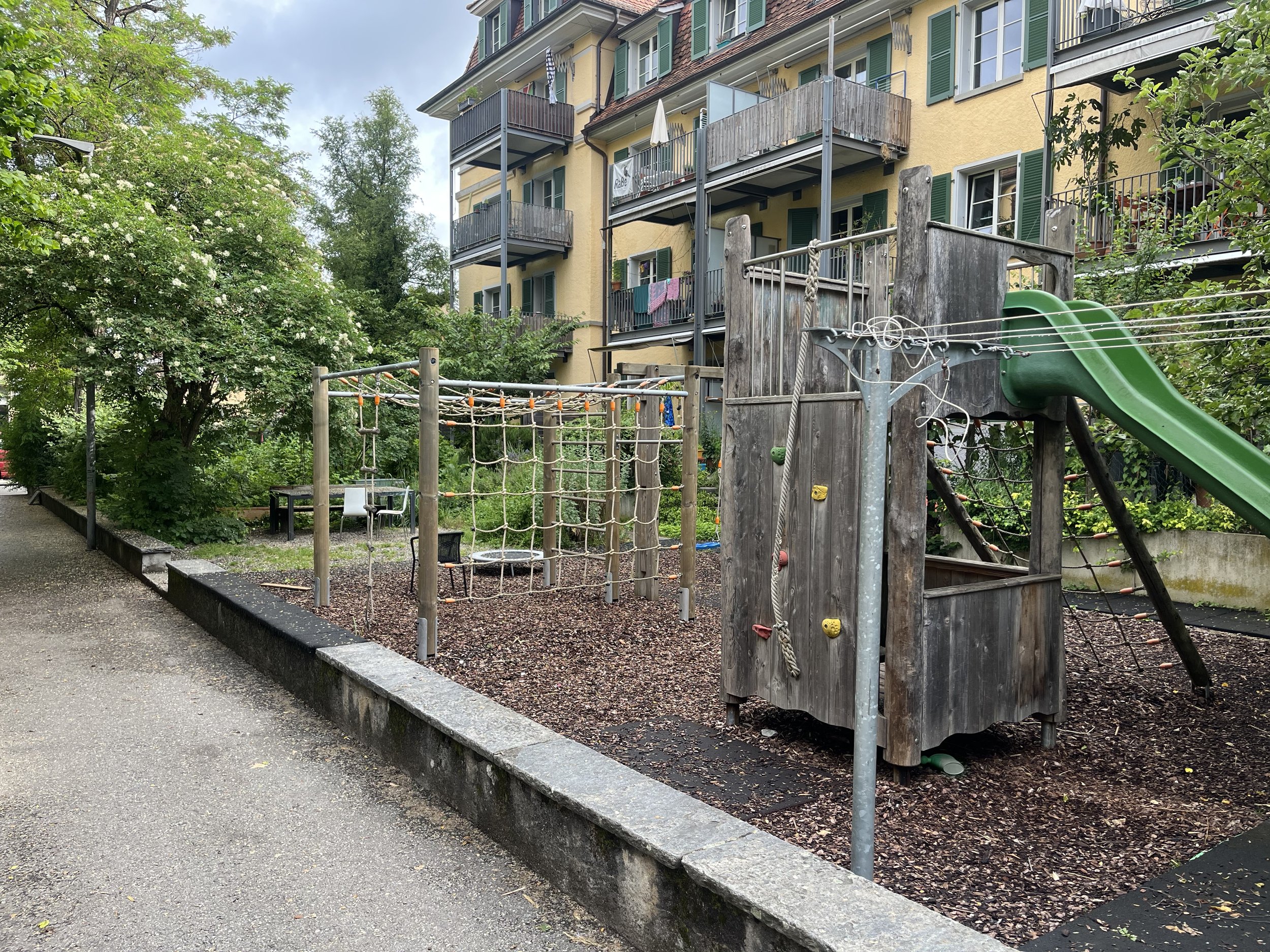
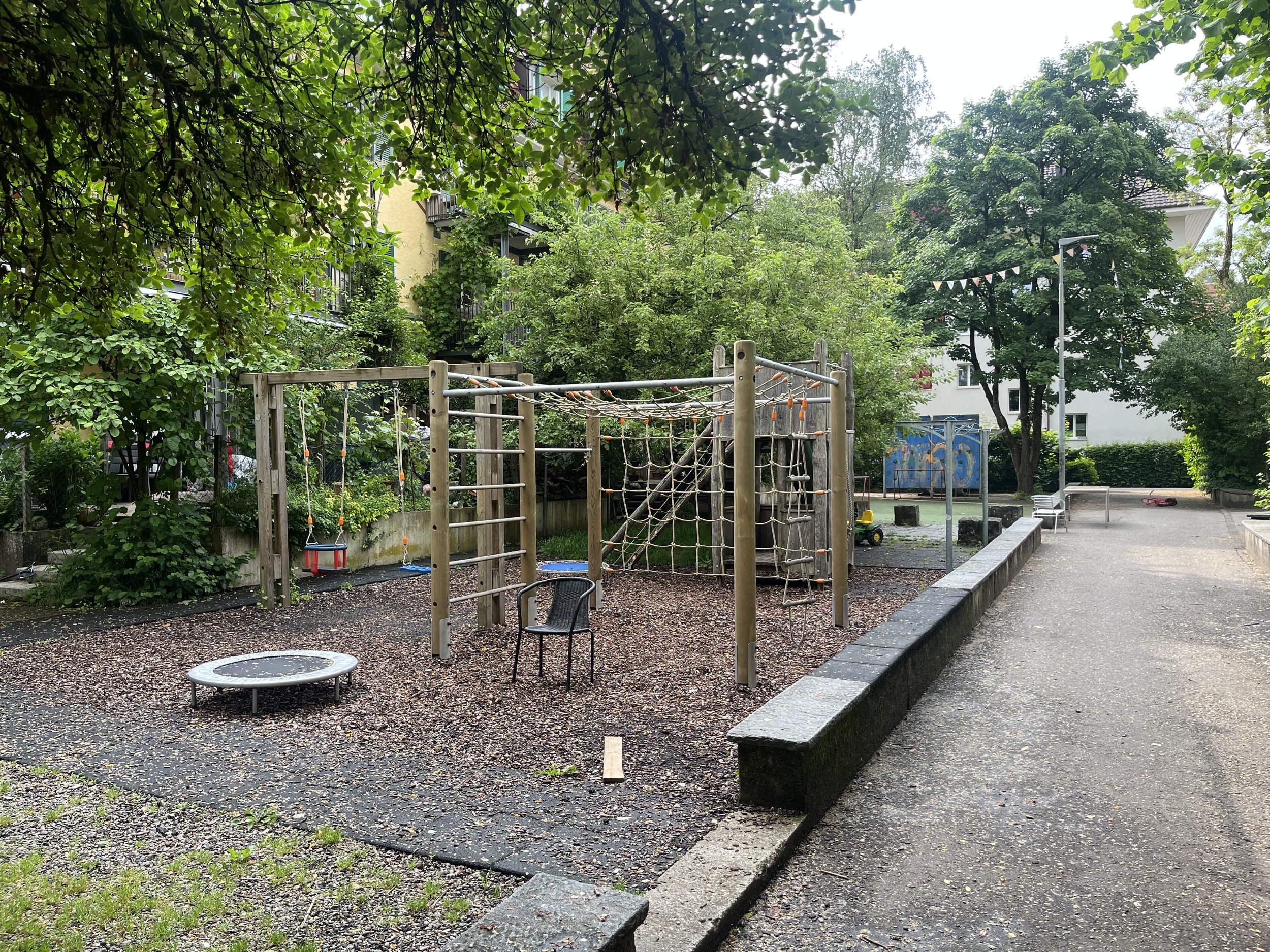
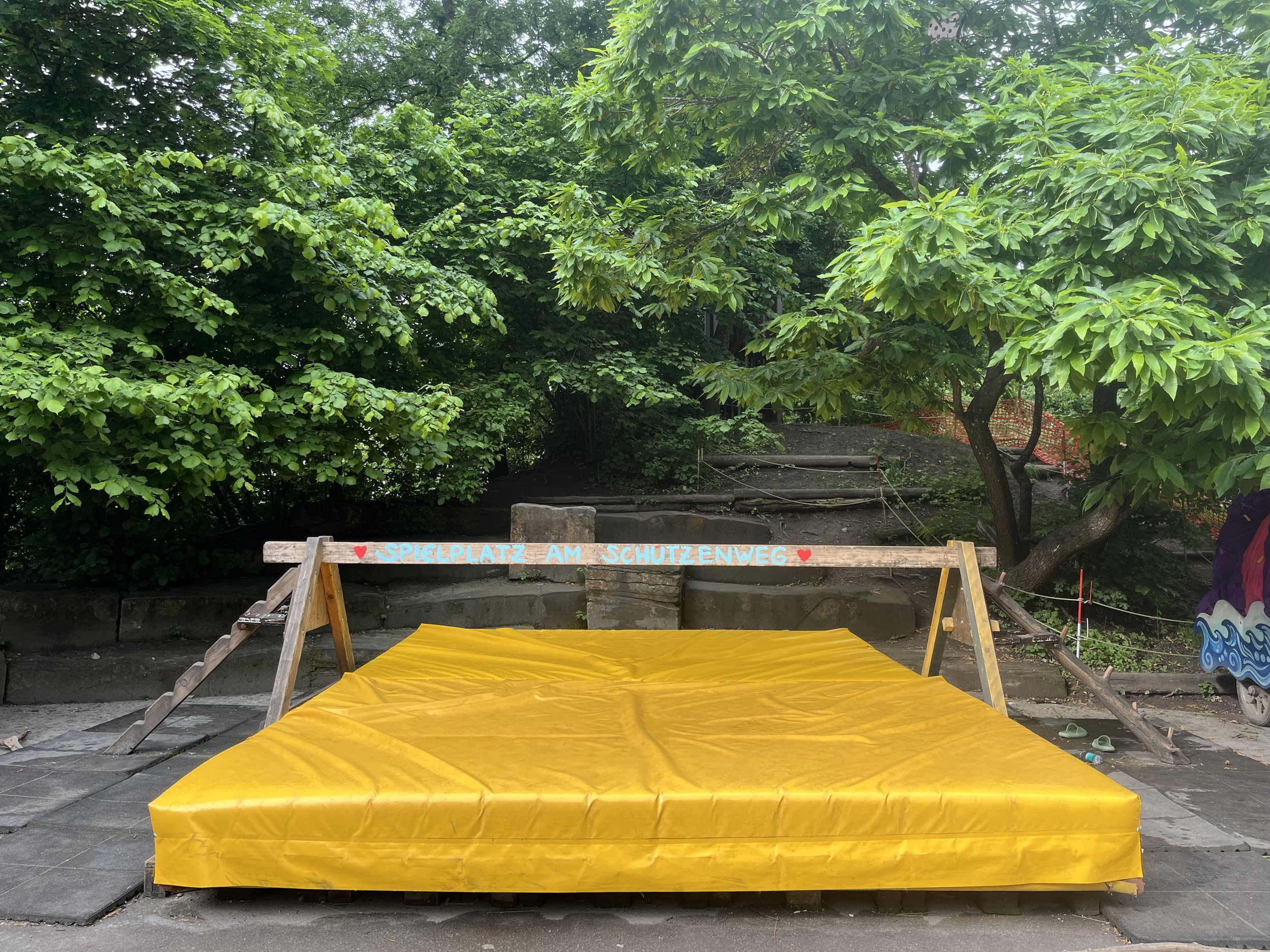
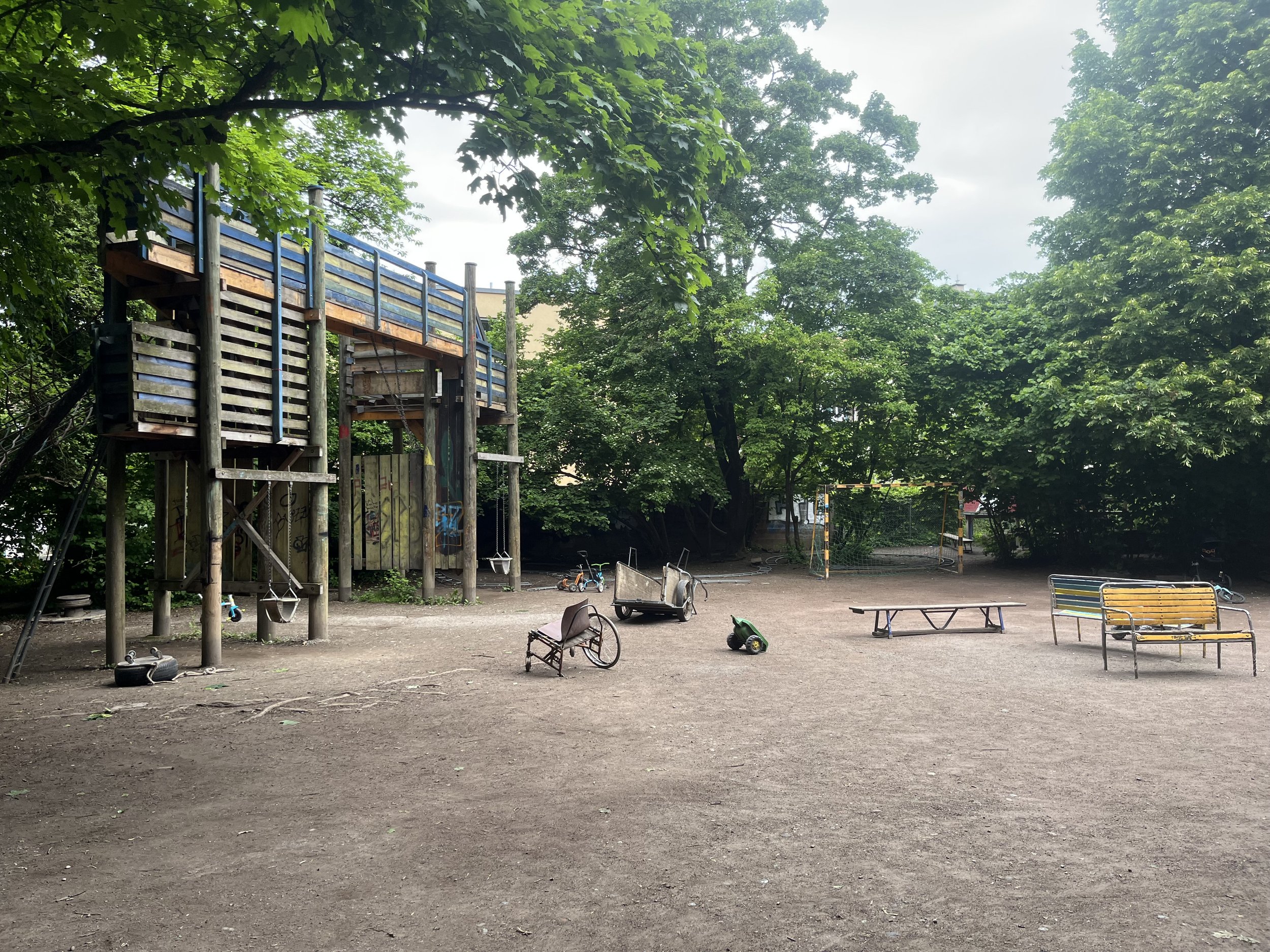
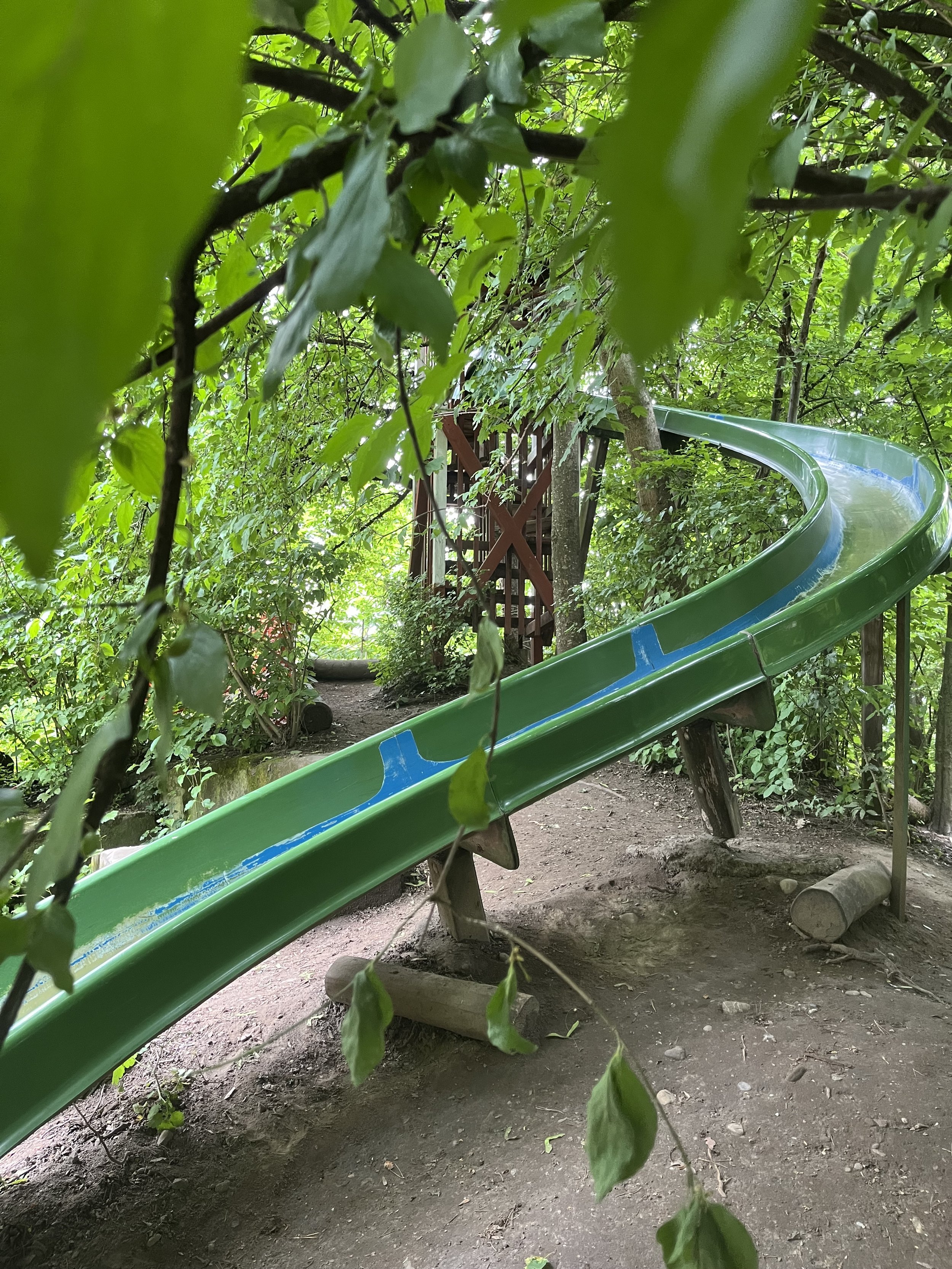
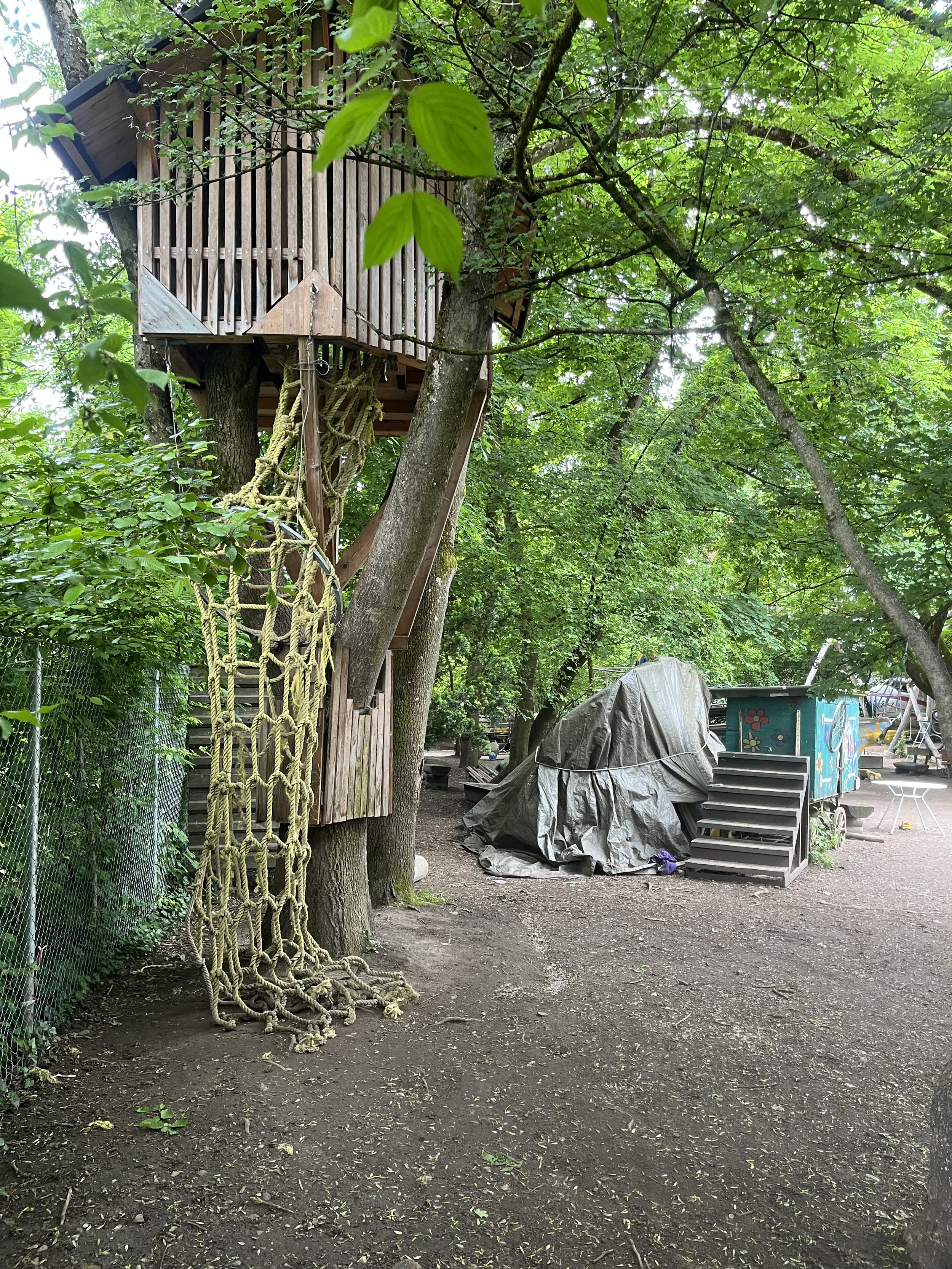
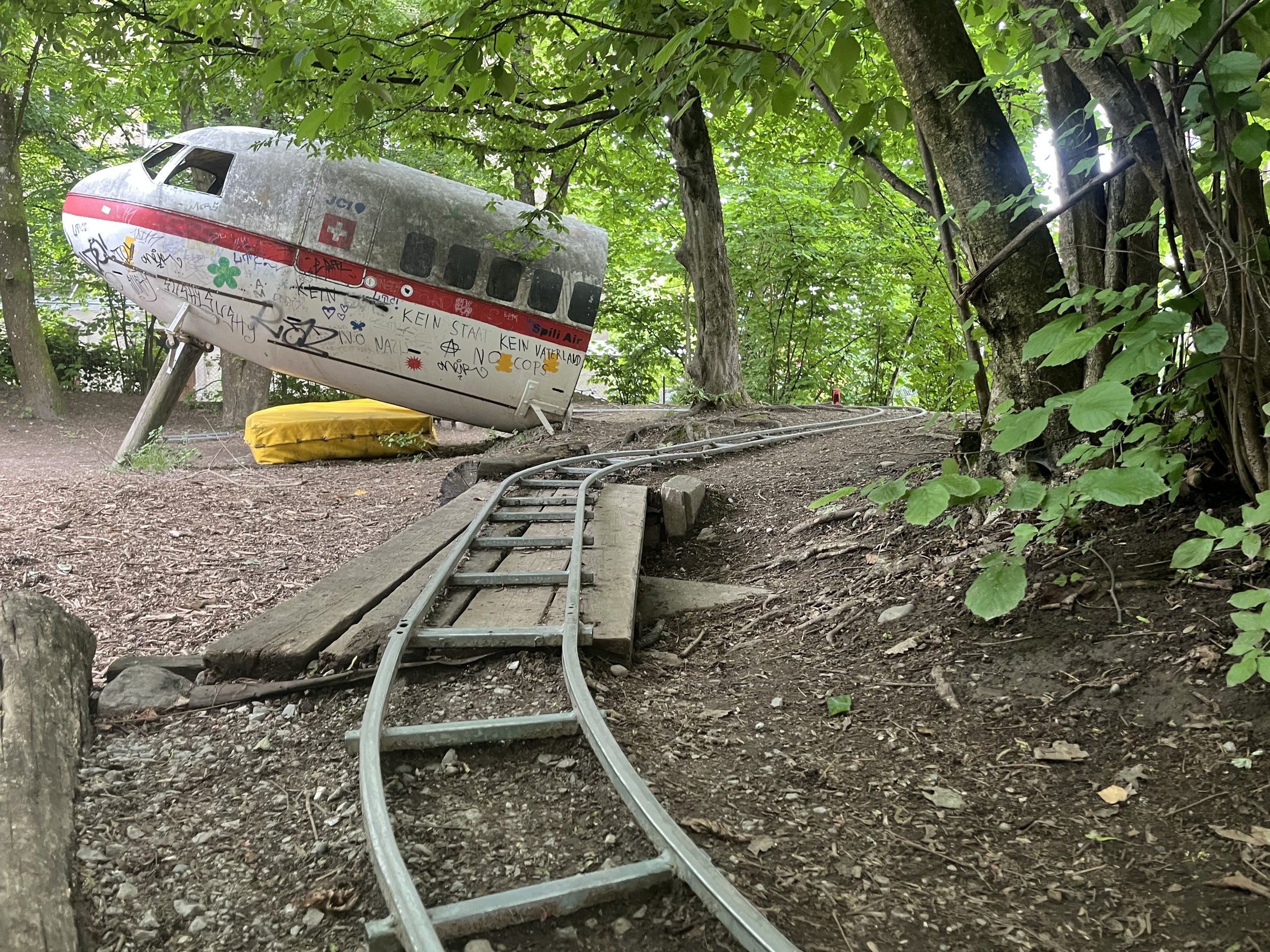
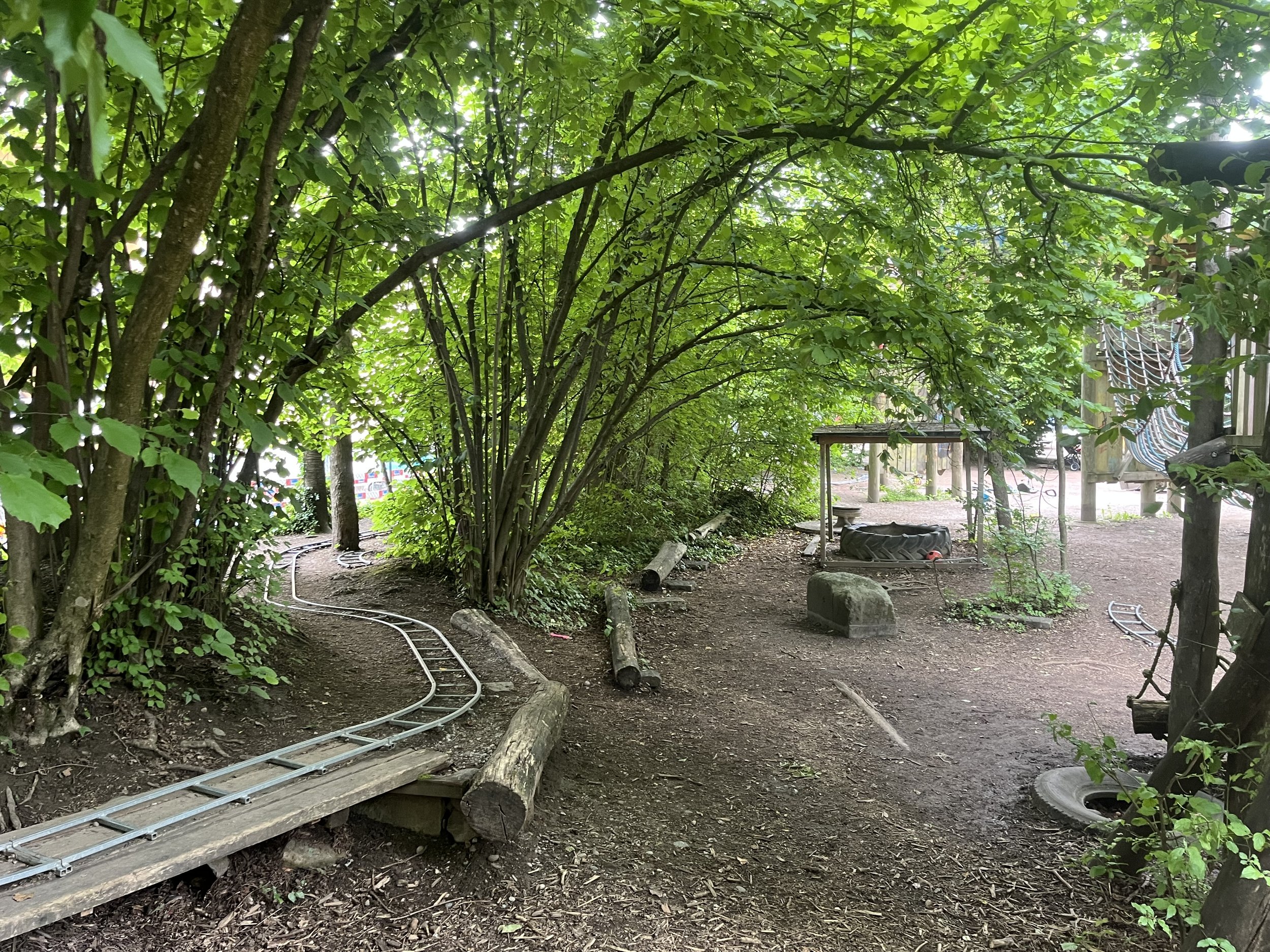
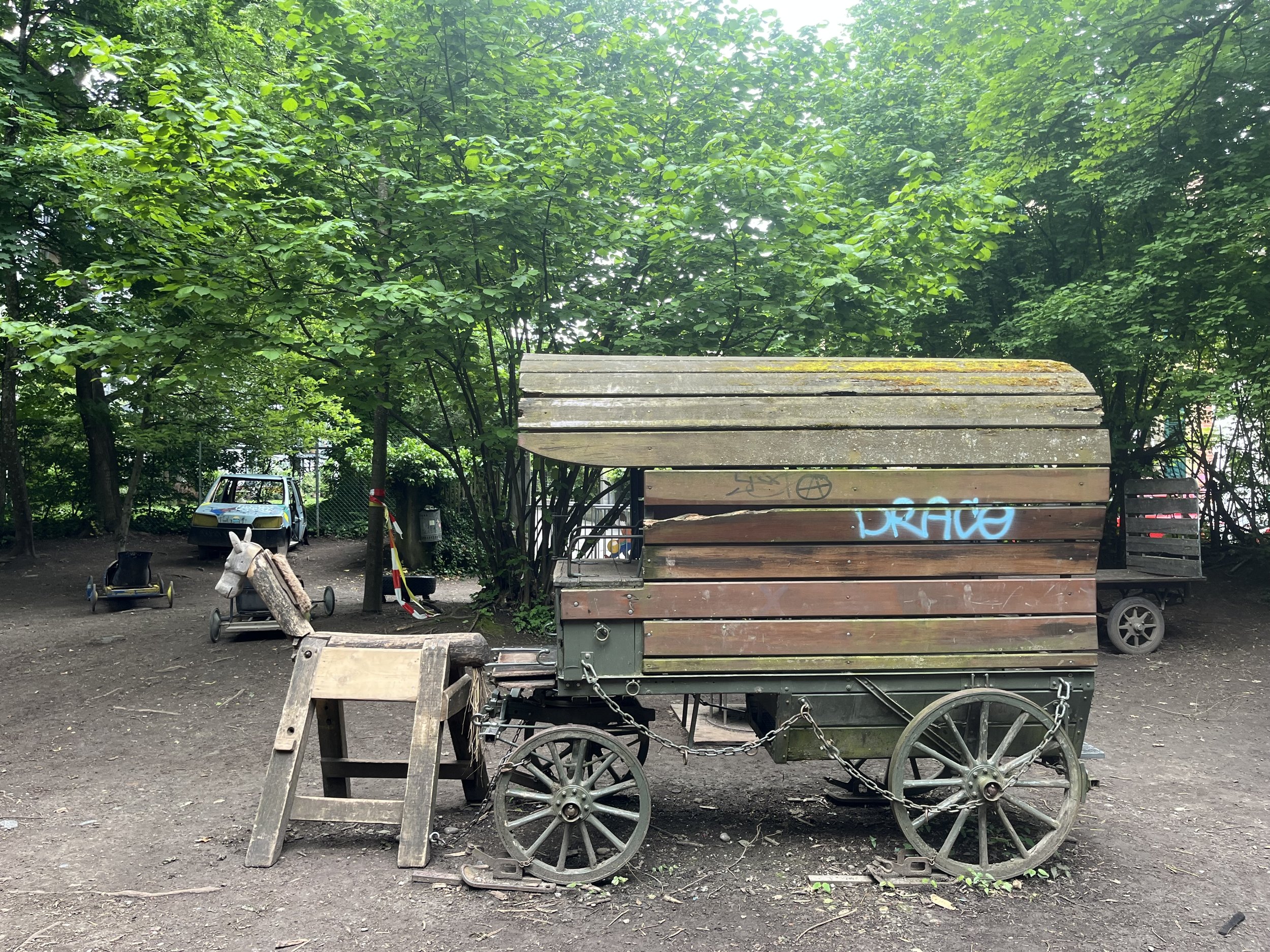
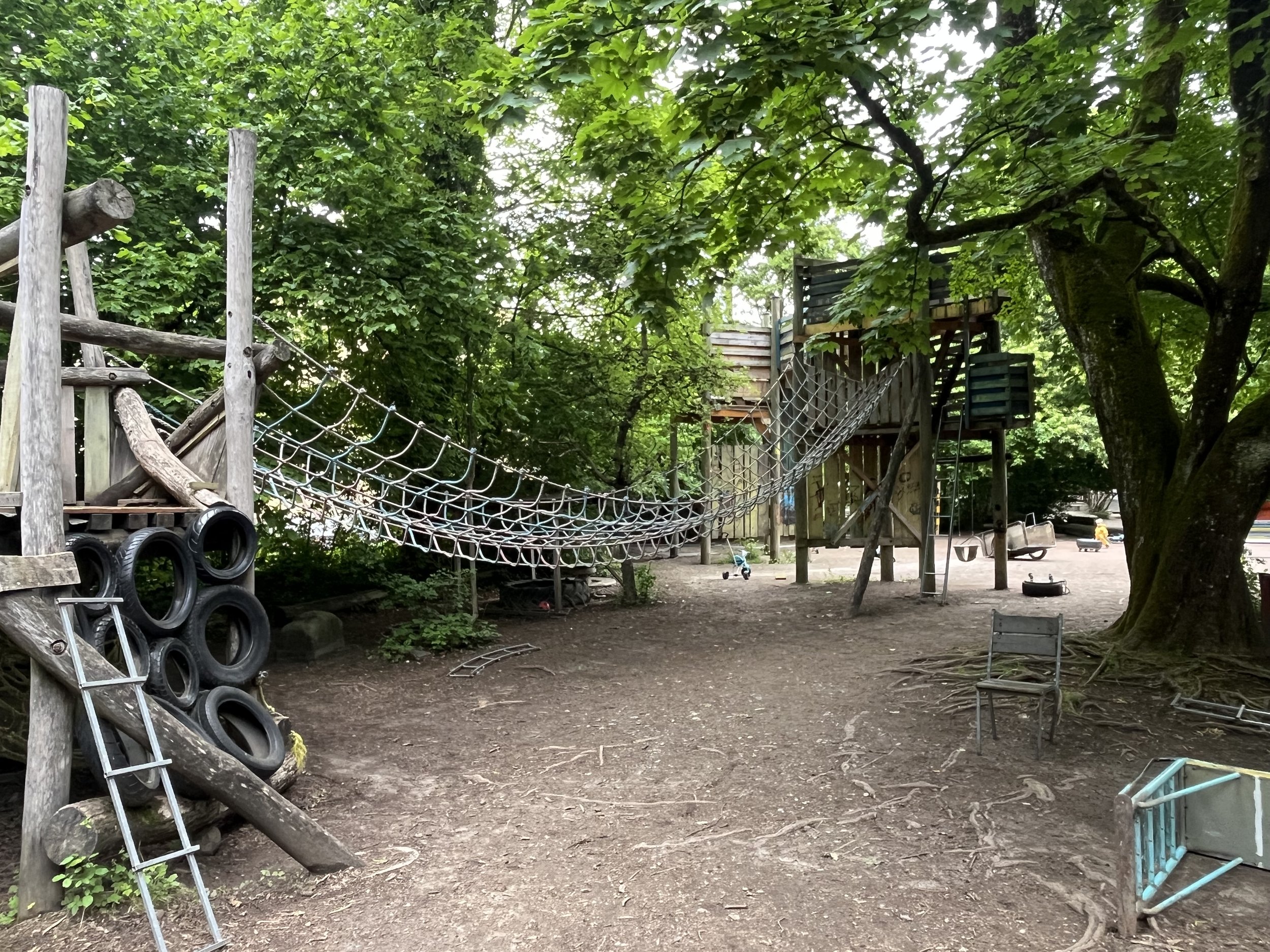
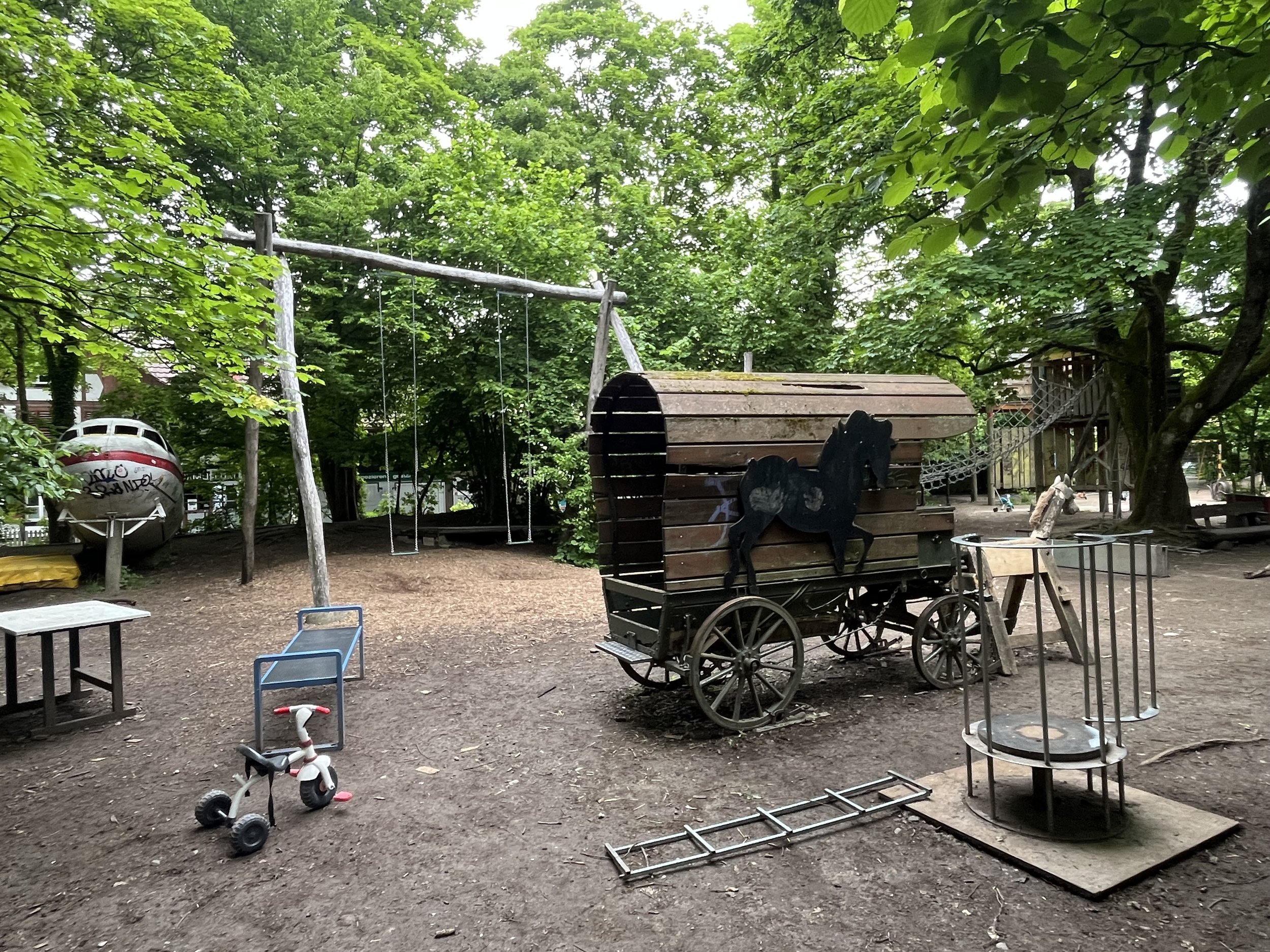
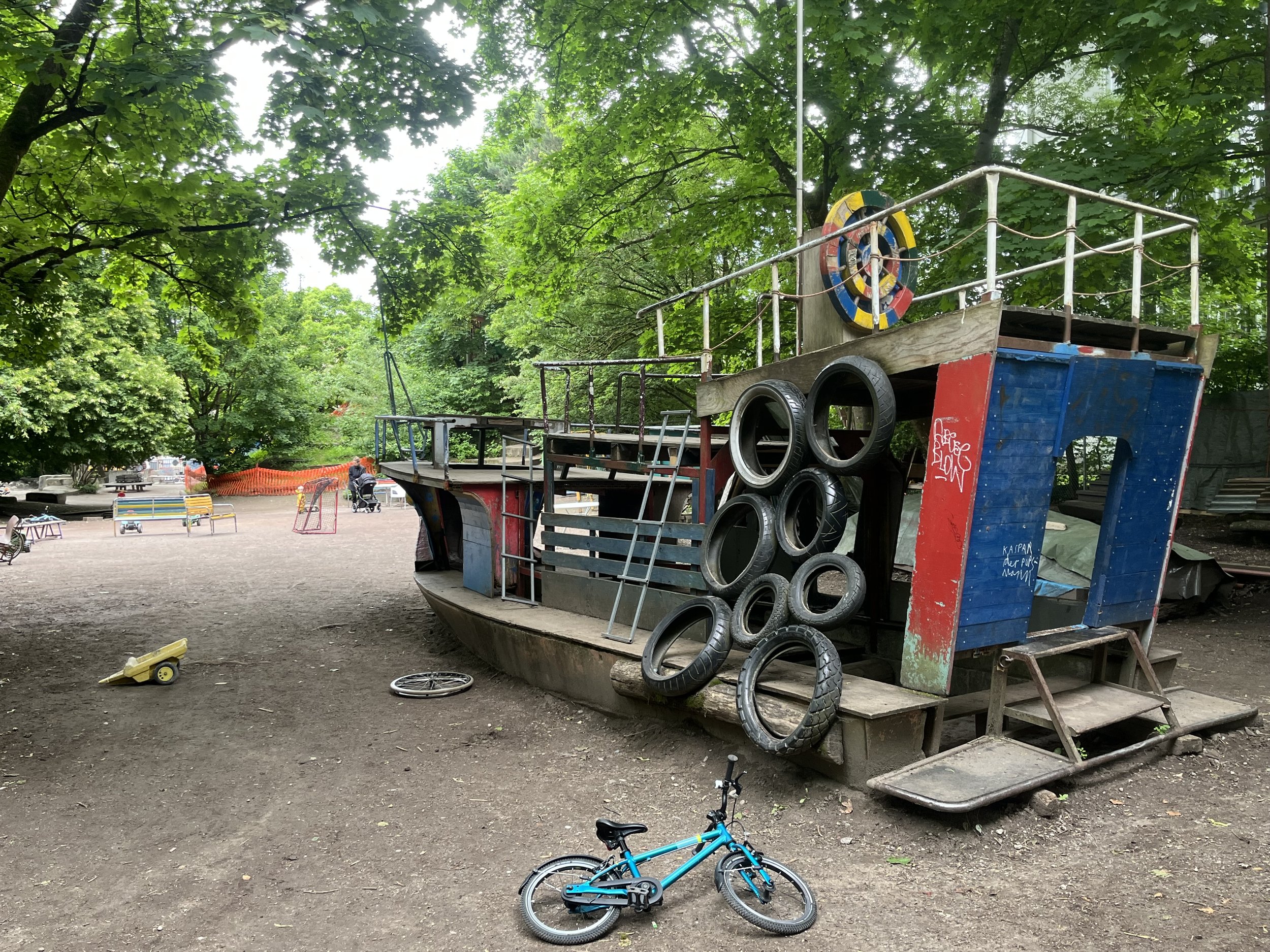
Another cool thing is most parks feature sandpits paired with hand-crank water pumps or fountains. Kids can dam, divert, pool, flood, and whatever the hell else their creative little brains can think of, turning a pile of sand into a muddy engineering project.
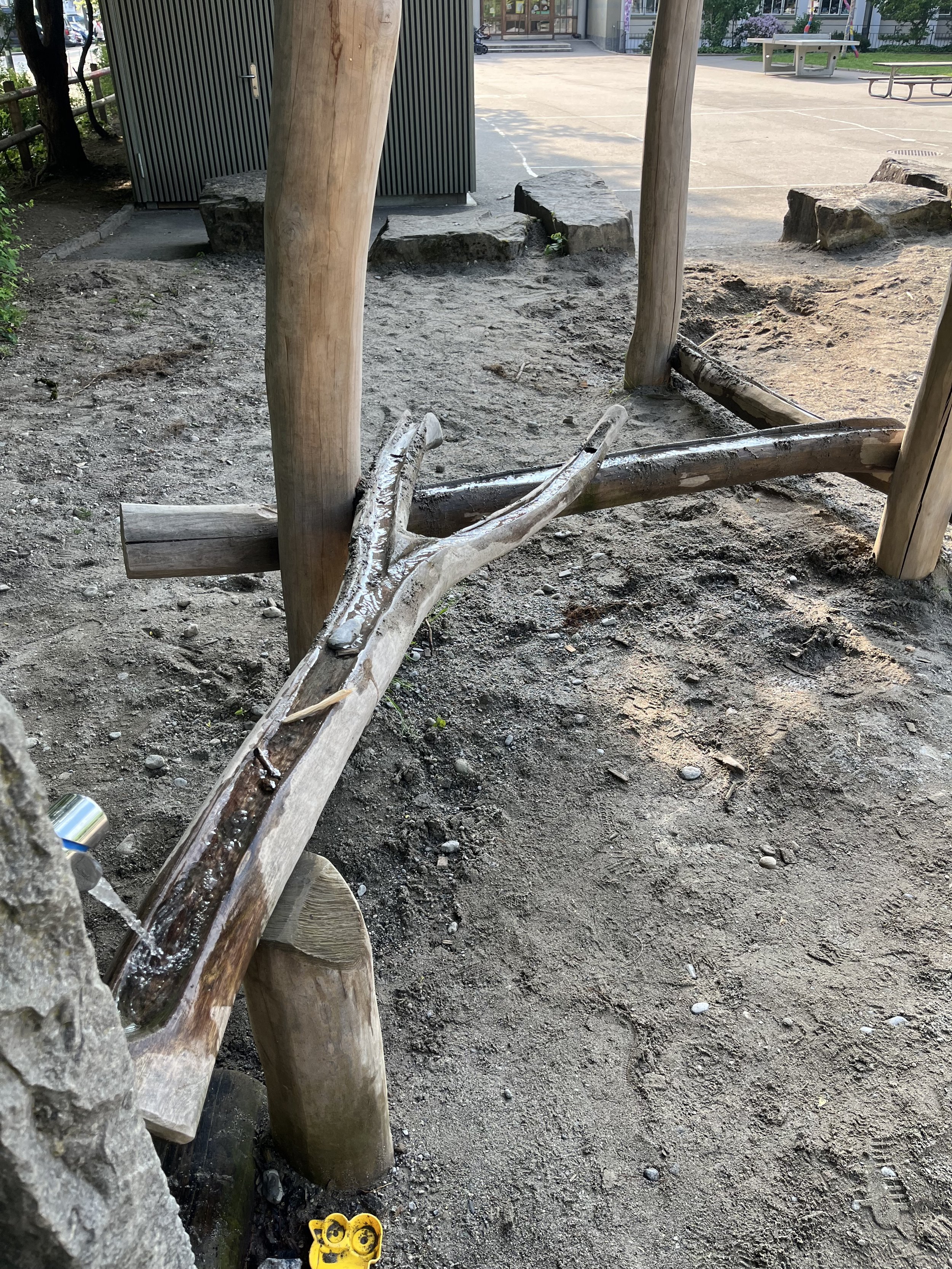

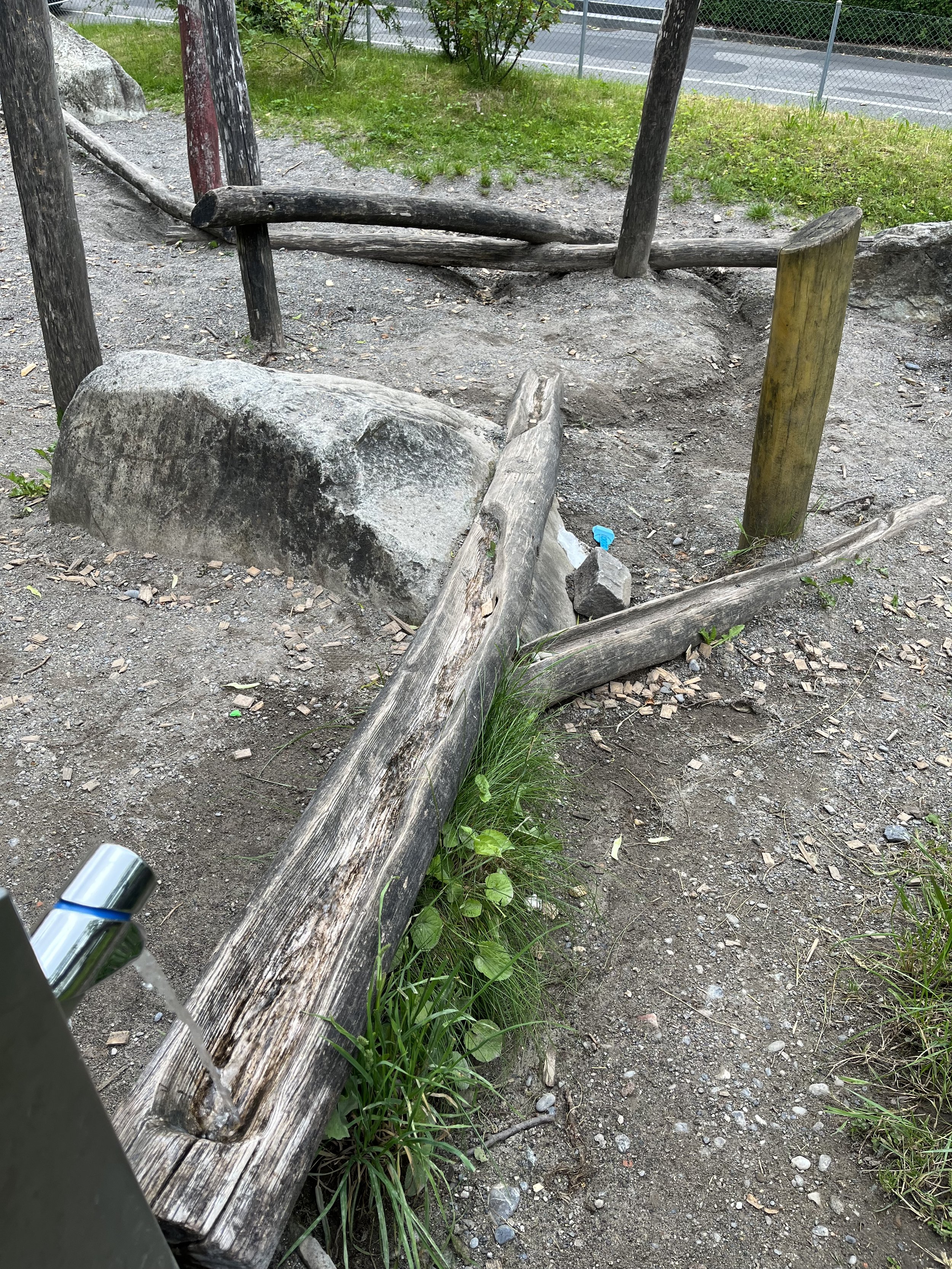
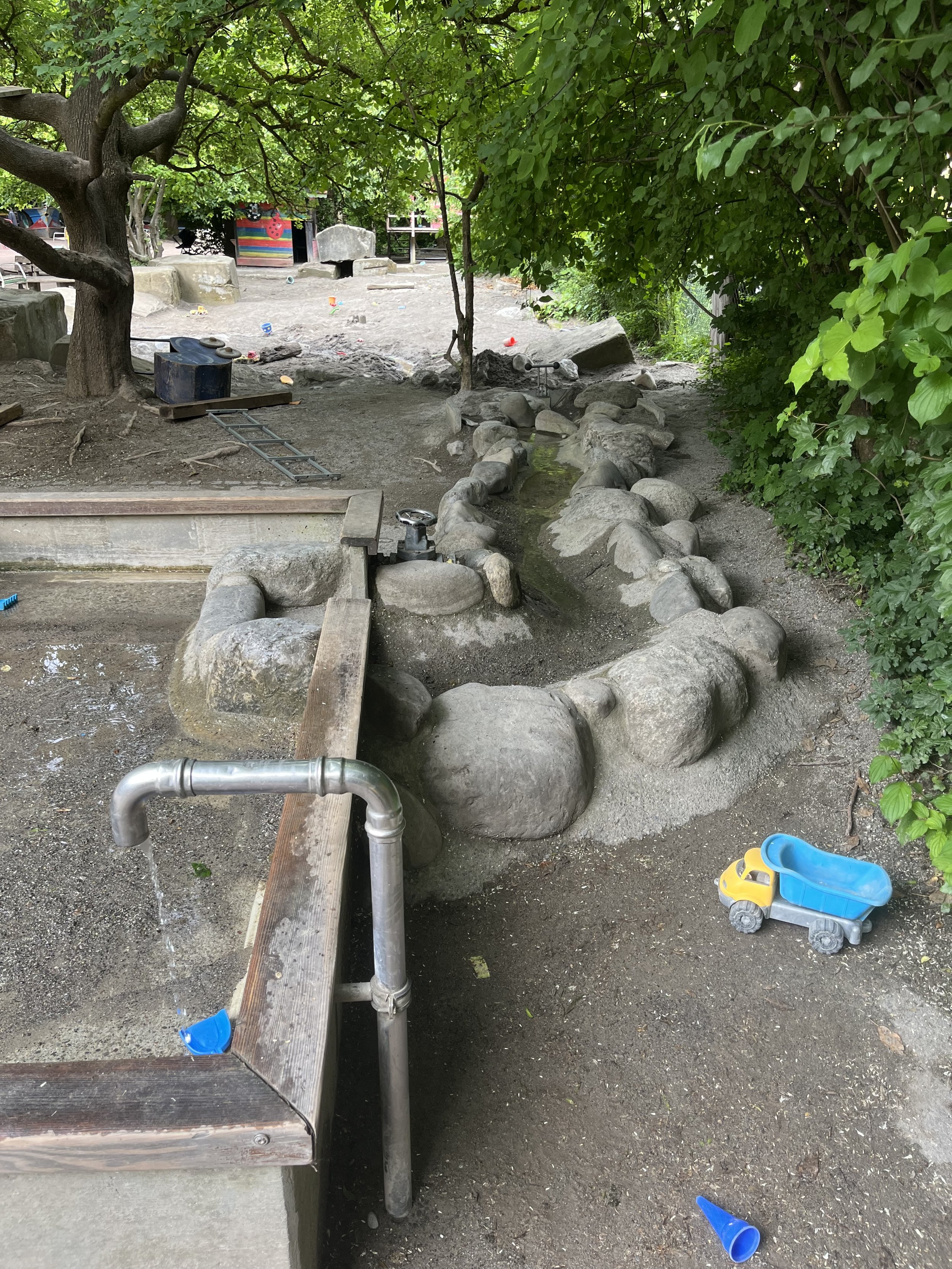
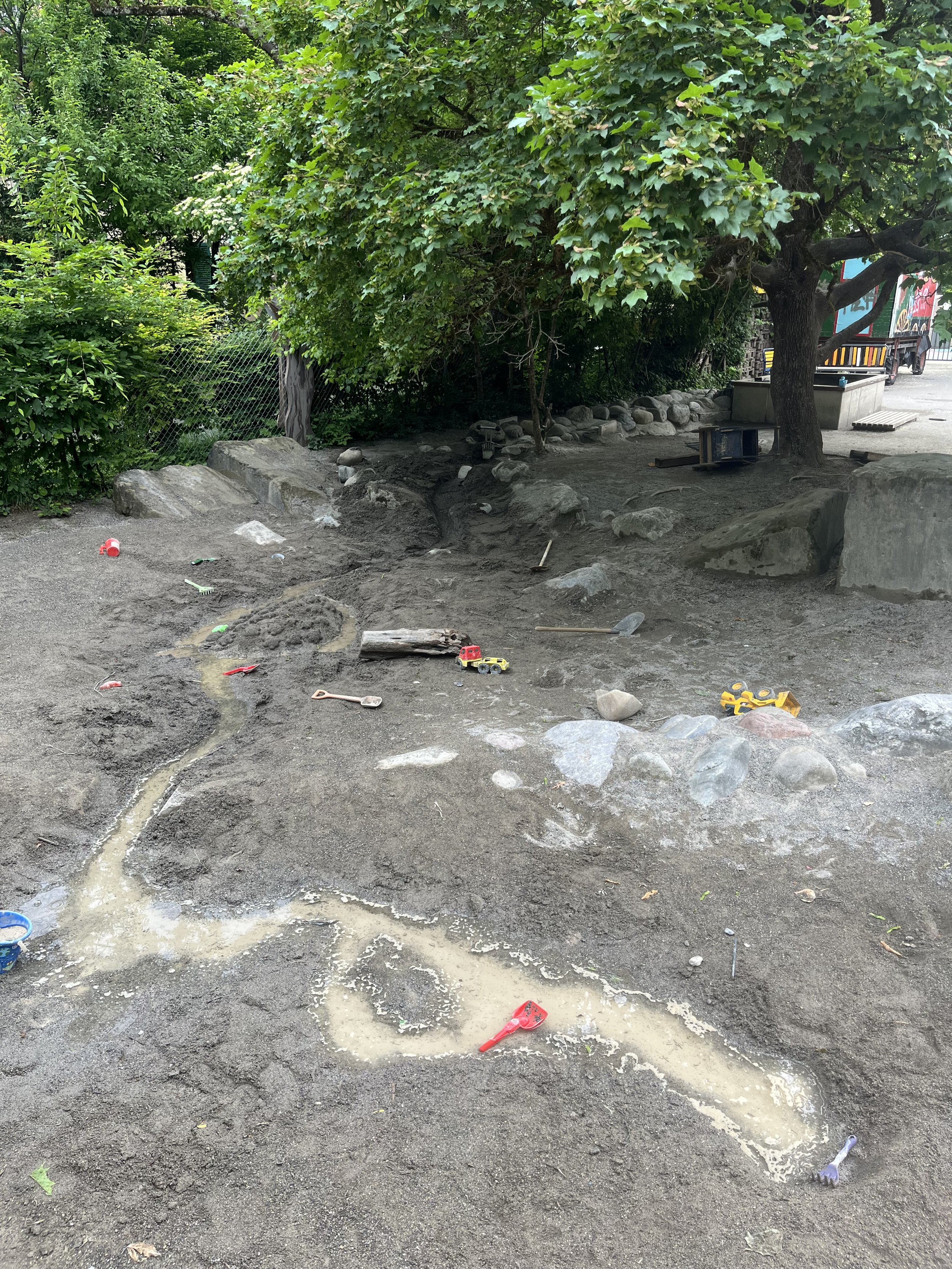
Parkscheibe
In many Swiss neighborhoods, if you don’t have a resident permit (which costs money and doesn’t guarantee you a spot), you’ll need to use something called a Parkscheibe, the world’s most low-tech parking meter. It’s a rectangular blue piece of thin cardboard containing a plastic disc with a clock face printed on it. Only about a quarter of the face is visible, with the rest tucked beneath the cardboard, making it easy for parking enforcement to spot and read at a glance. This system has been in use since the 1950s, when it was introduced across parts of Europe as a cheap, standardized way to regulate short-term parking without the need for meters or digital enforcement tools.
Here’s how it works: blue zones, (parking spots marked by blue-painted lines) are scattered throughout the city. If you park in one, you manually set the disc to the time you arrived and place it visibly on your dashboard. That disc now becomes your timestamp. Most blue zones allow you to park for one hour during the day.
Enforcement is no joke. Officers routinely patrol the streets, marking tires with a faint white chalk line to monitor movement. Forget to set the disc, or overstay your limit? That’ll cost you.
The philosophy behind it is deeply Swiss: it’s about self-governance, fairness, and not overcomplicating things. No app. No pay station. Just a cardboard clock, a sharp eye, and the understanding that rules are followed.
FOUNTAINS
Wander through any neighborhood in Bern and you’ll eventually stumble upon a water fountain. Not the sterile, stainless steel spouts from public schools or airports. Nope, these bad boys are either carved from stone or formed with concrete and often tucked beside sidewalks or nestled in quiet plazas. They’re fully functional public fountains. Cold, crisp, and totally drinkable.
Bern has over 100, most built centuries ago to provide clean water to homes before plumbing was widespread, and the city just… never got rid of them. You’ll often see folks cupping their hands and slurpin up that good stuff or kids in soaked shirts splashing their faces. They're not as ornate as the showy ones in Old Town, rather they carry a quiet, worn beauty, just like the neighborhoods the live in. Be it the buildup of moss and mineral streaks or the smooth erosion on their edges, there’s something oddly satisfying about drinking from a fountain that has been drank from for centuries.
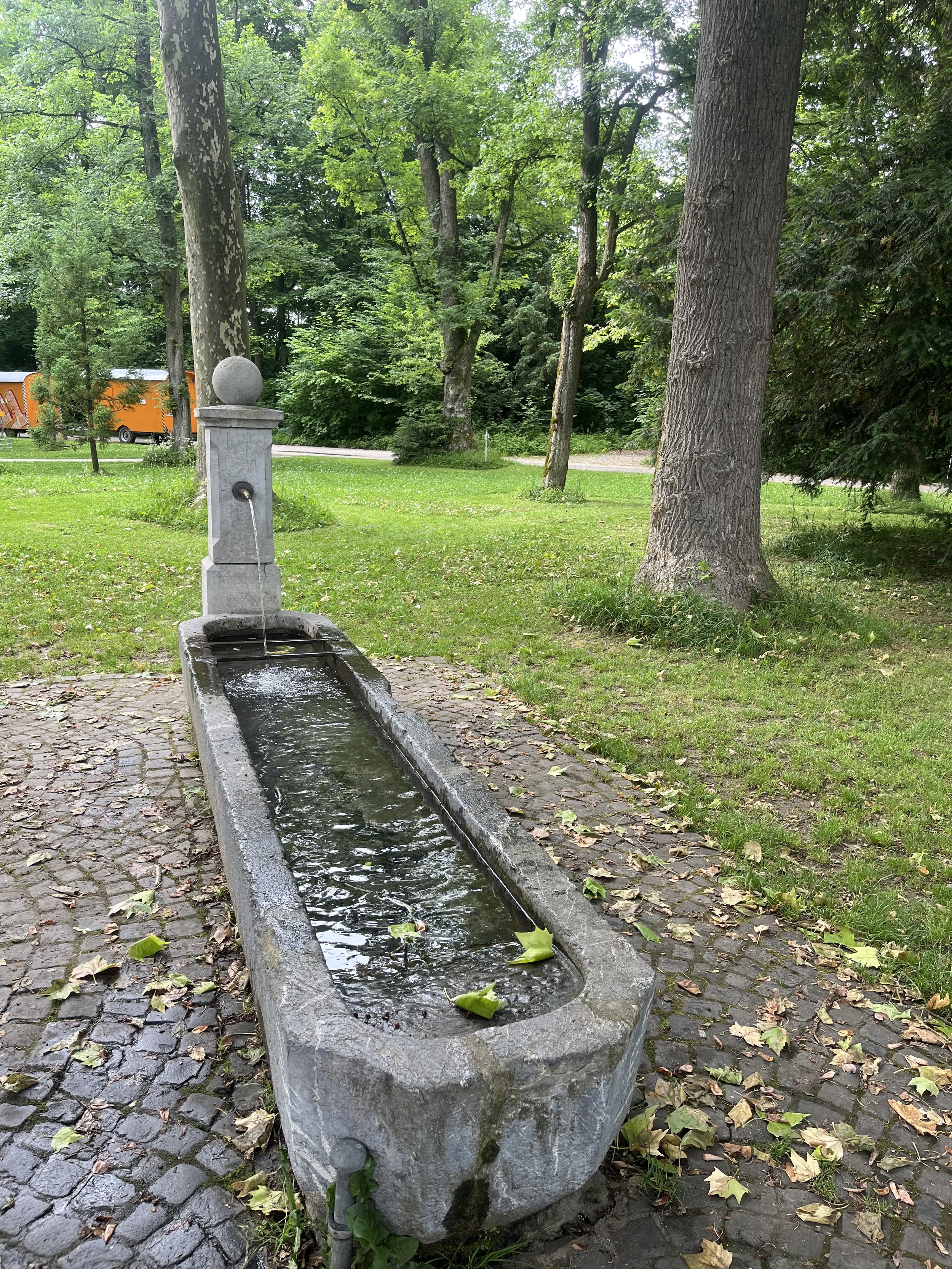
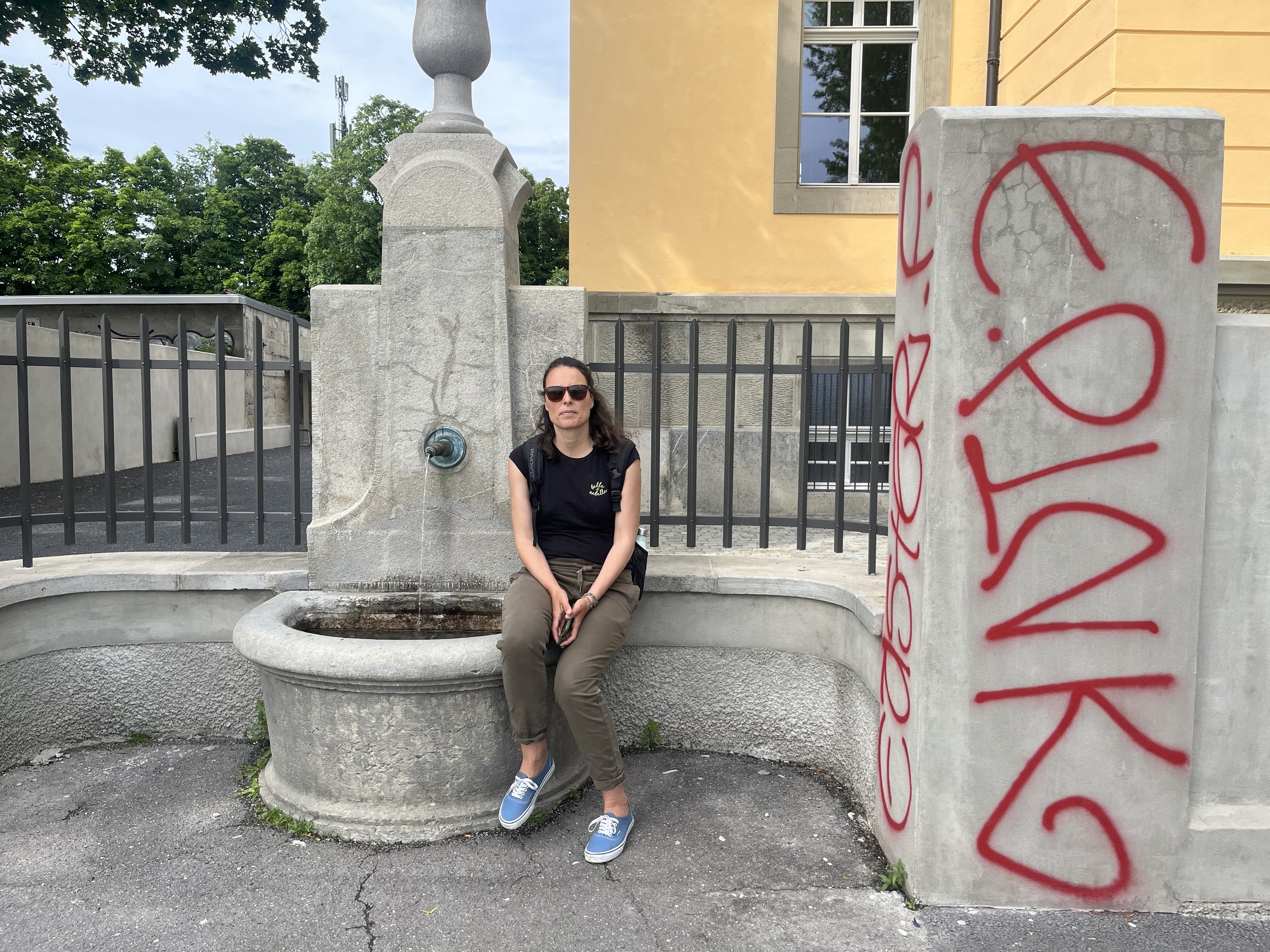
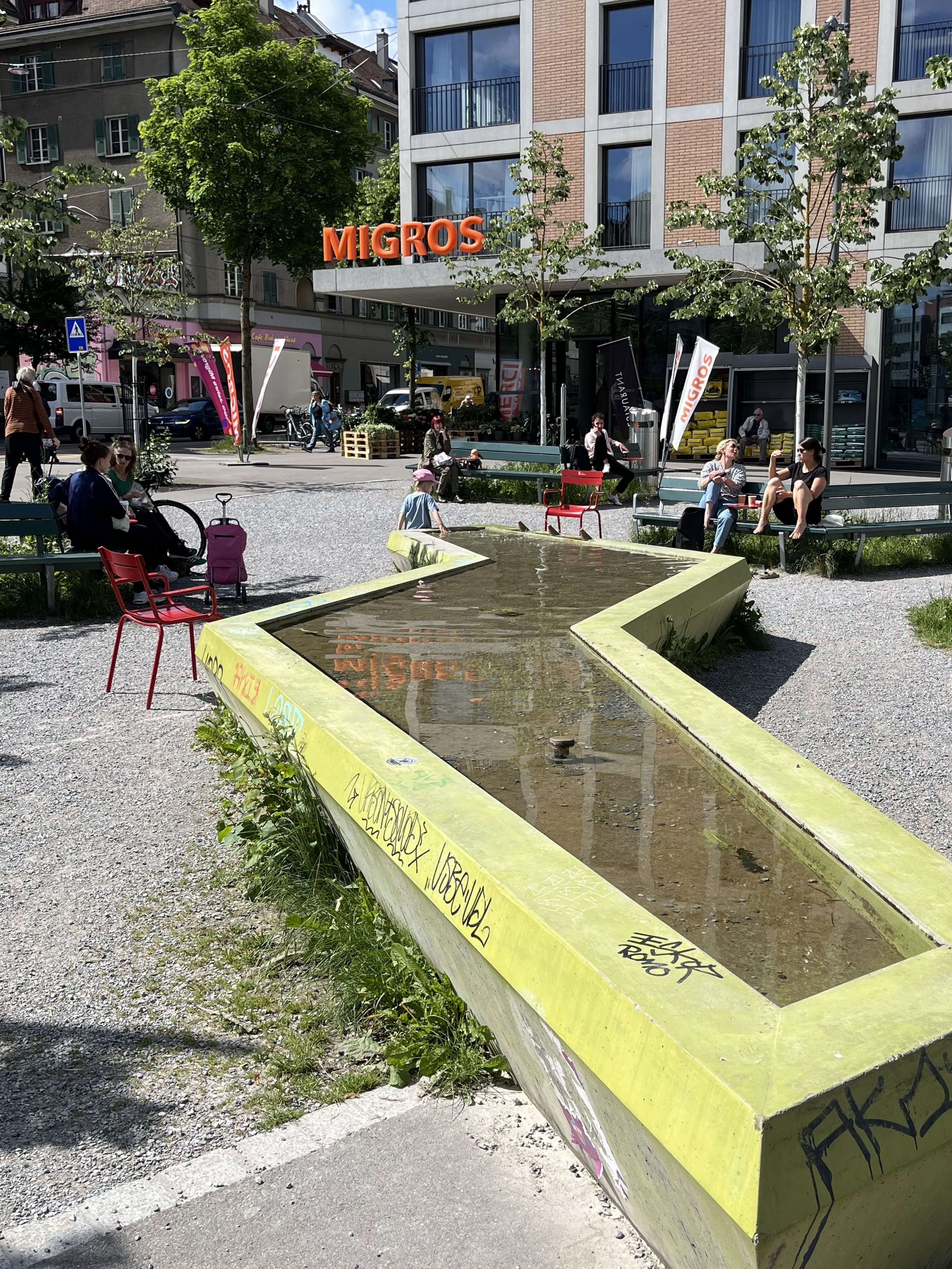
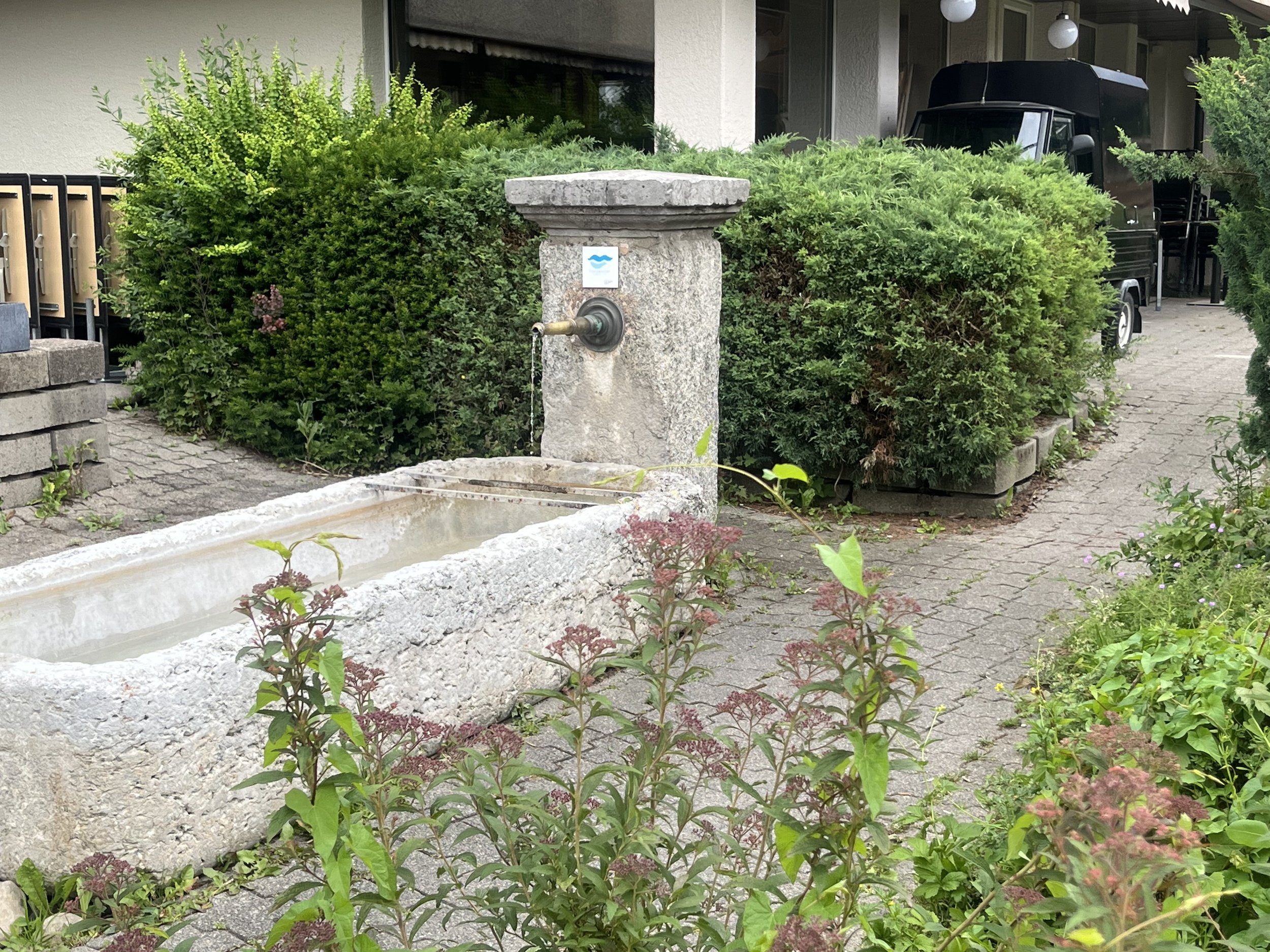
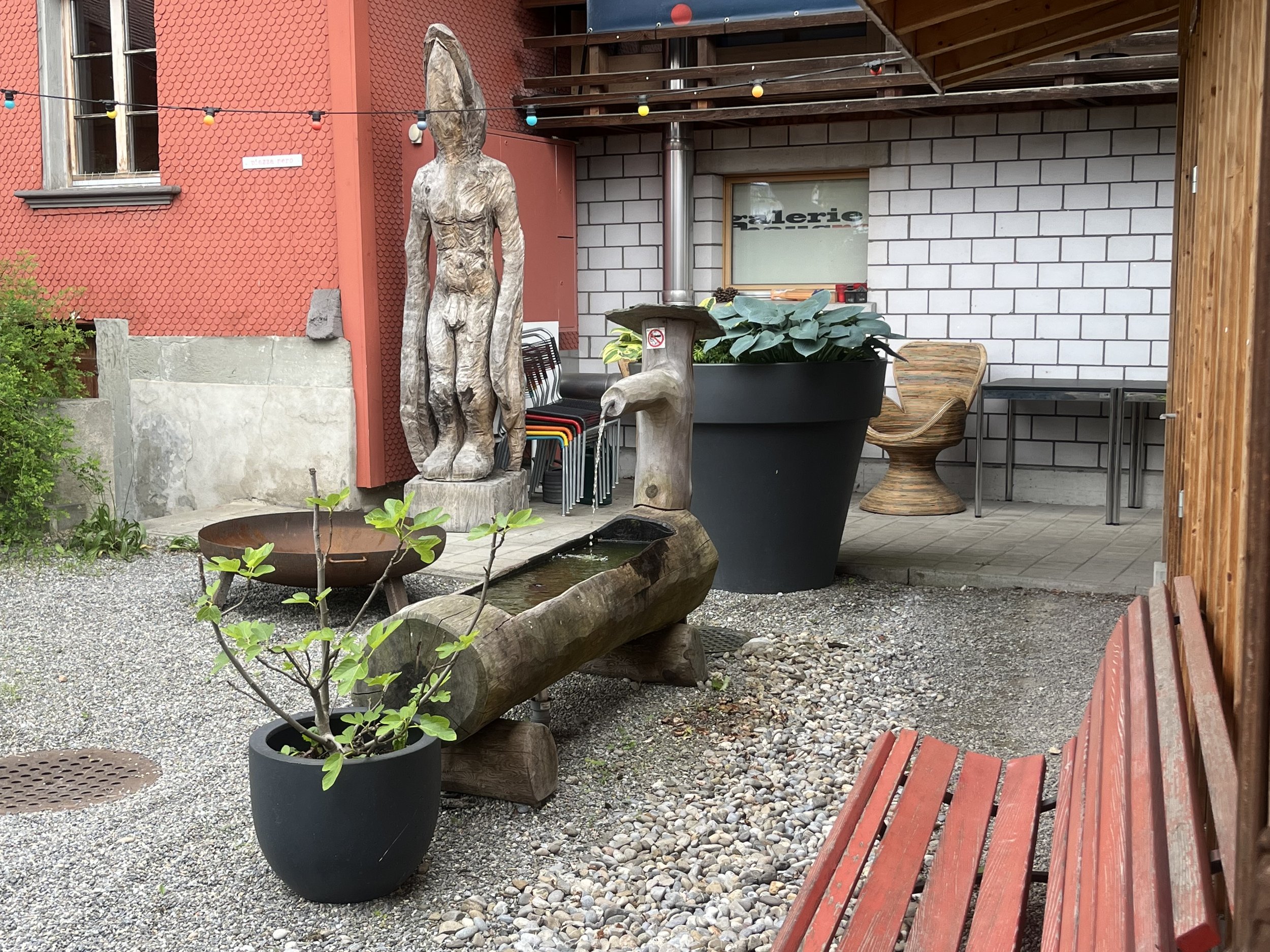
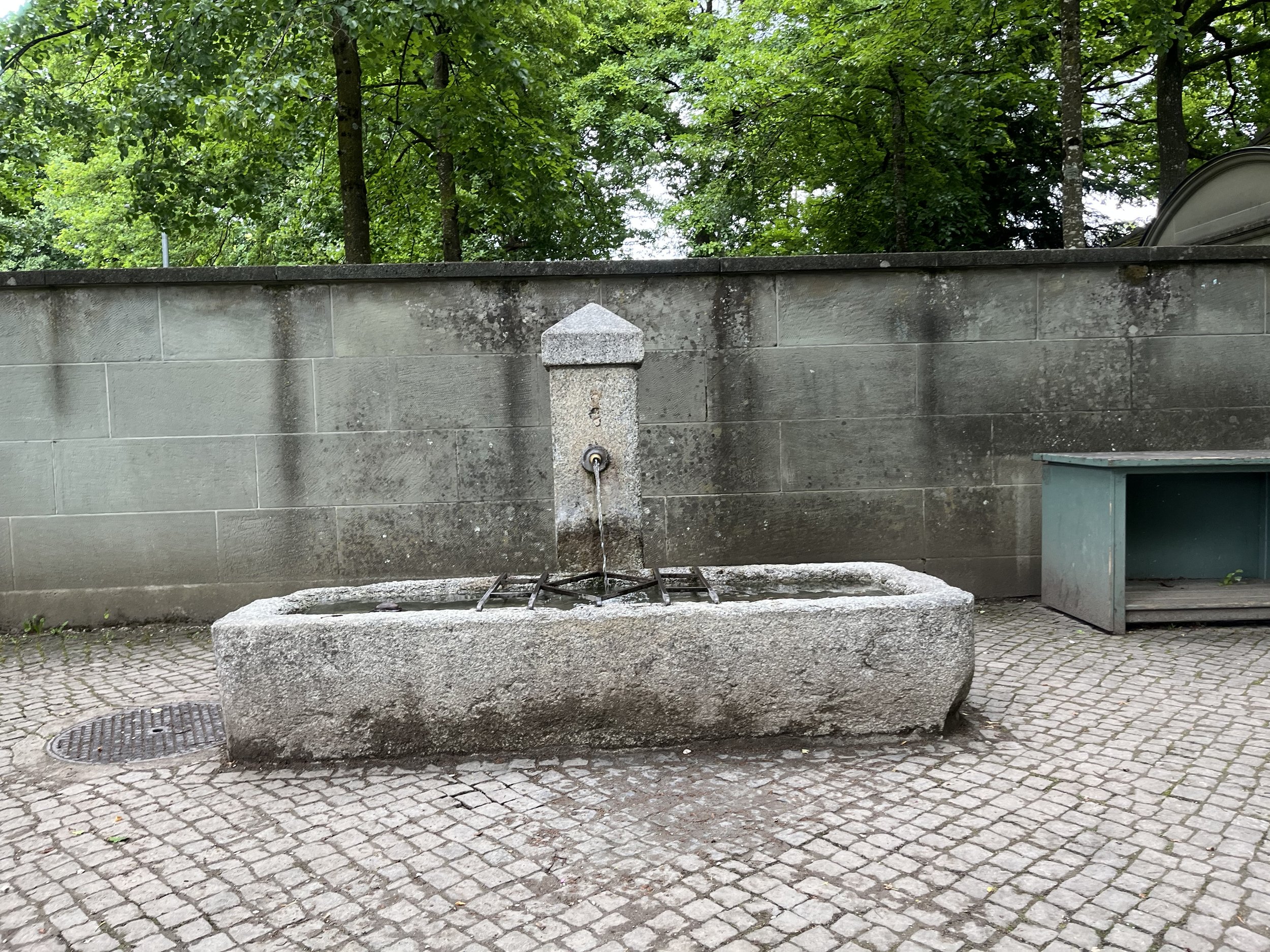
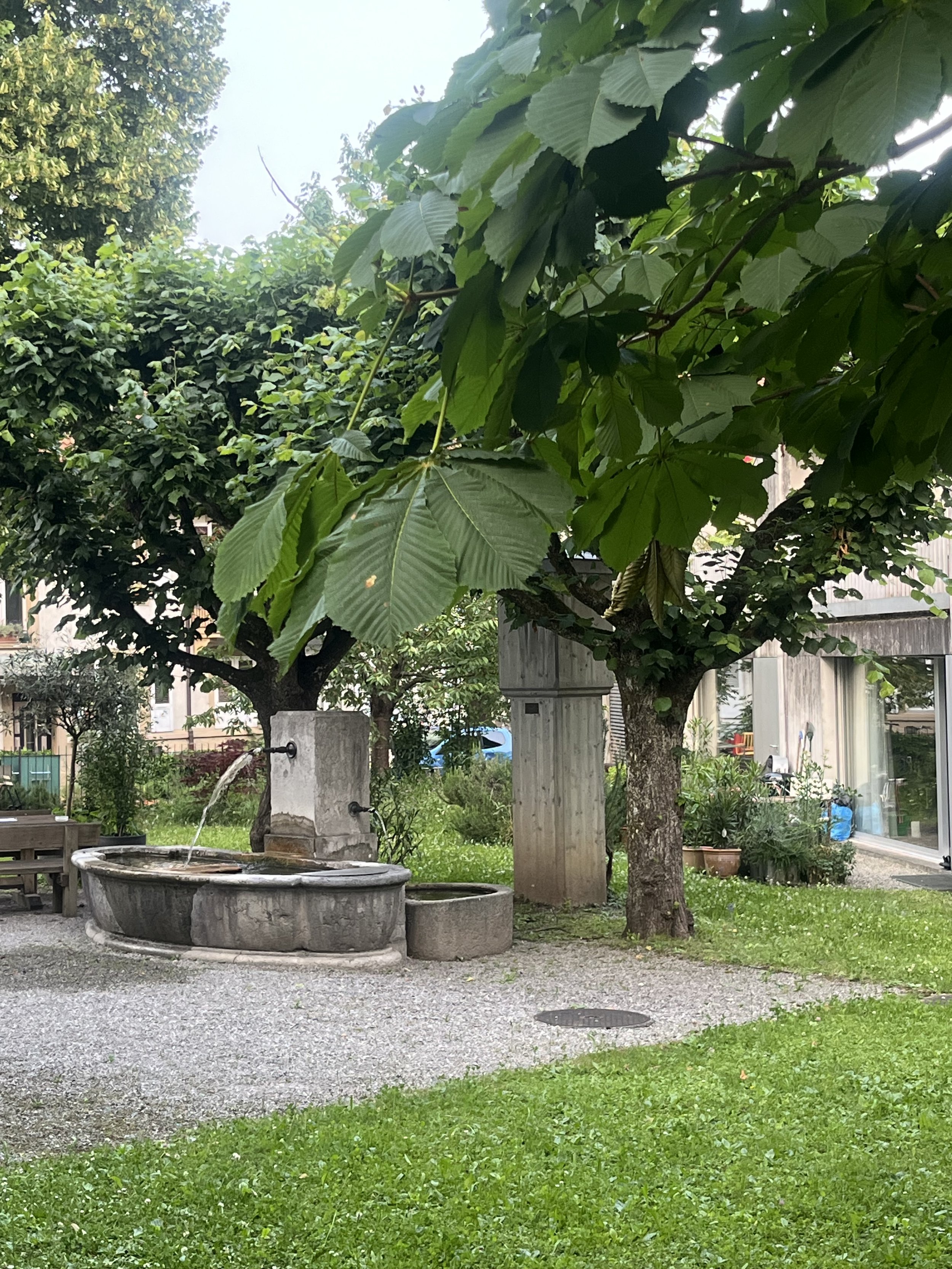
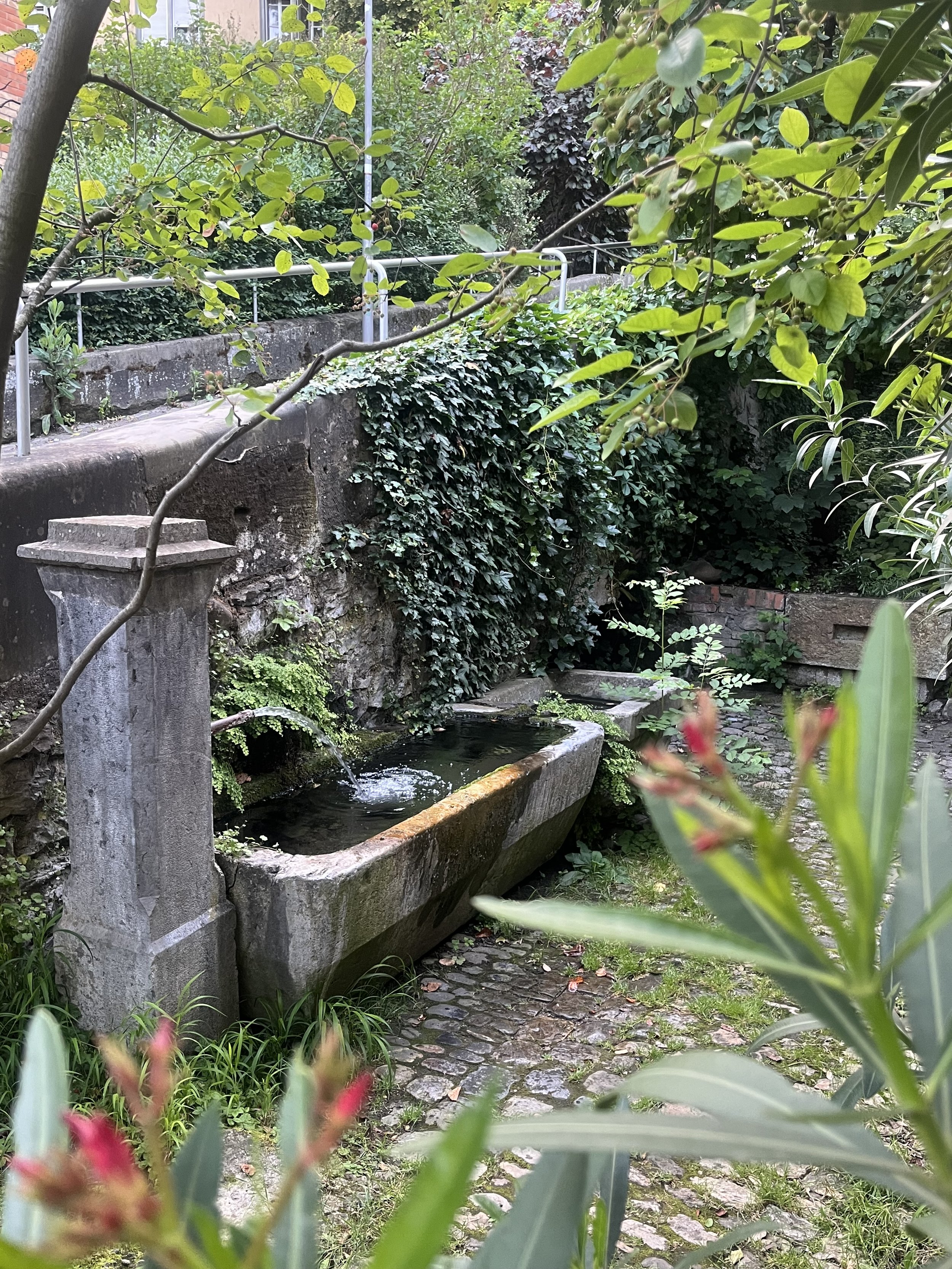
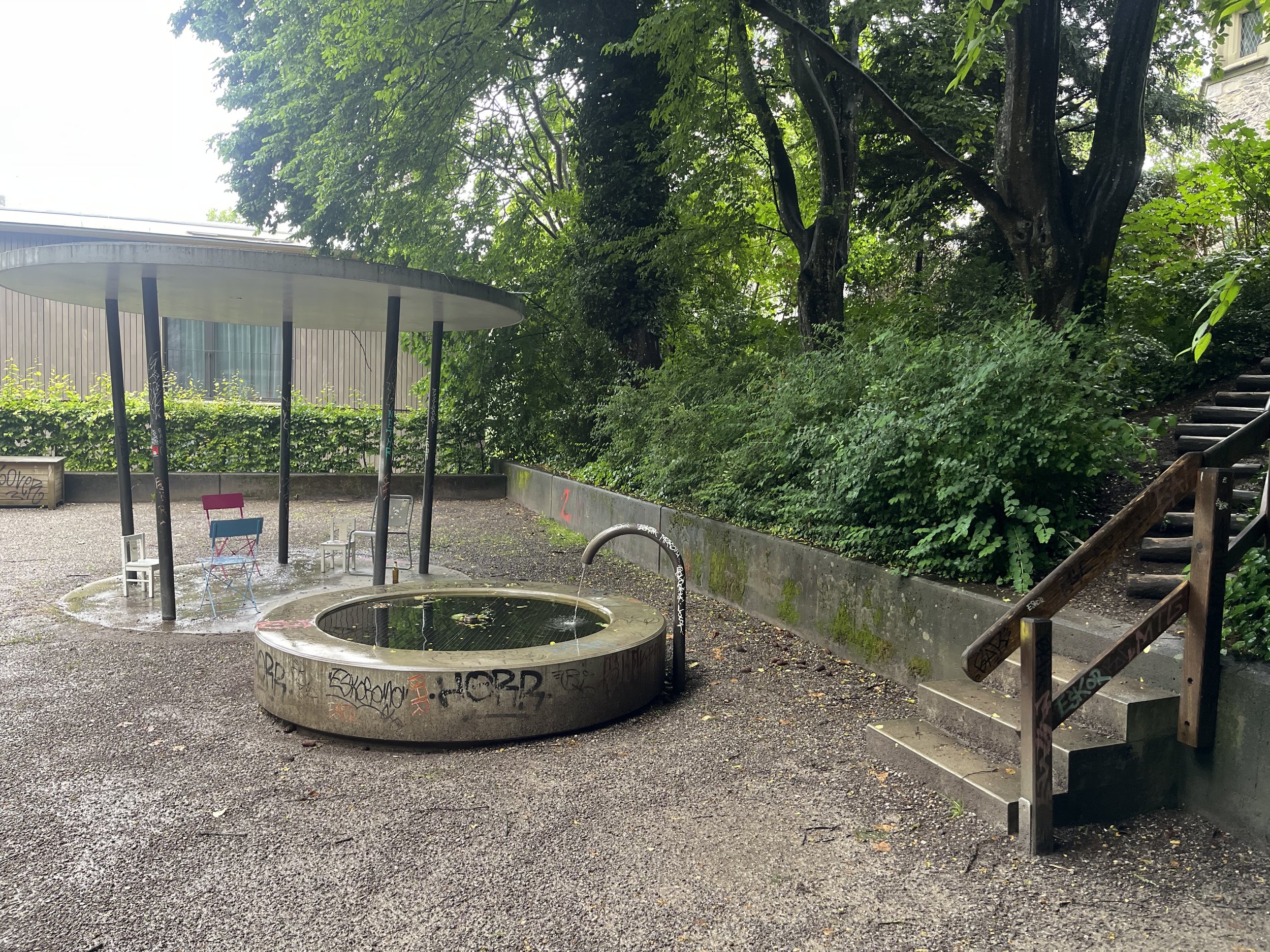
Ping-Pong Tables
Wander through any neighborhood in Bern and you’ll eventually stumble upon a ping-pong table.
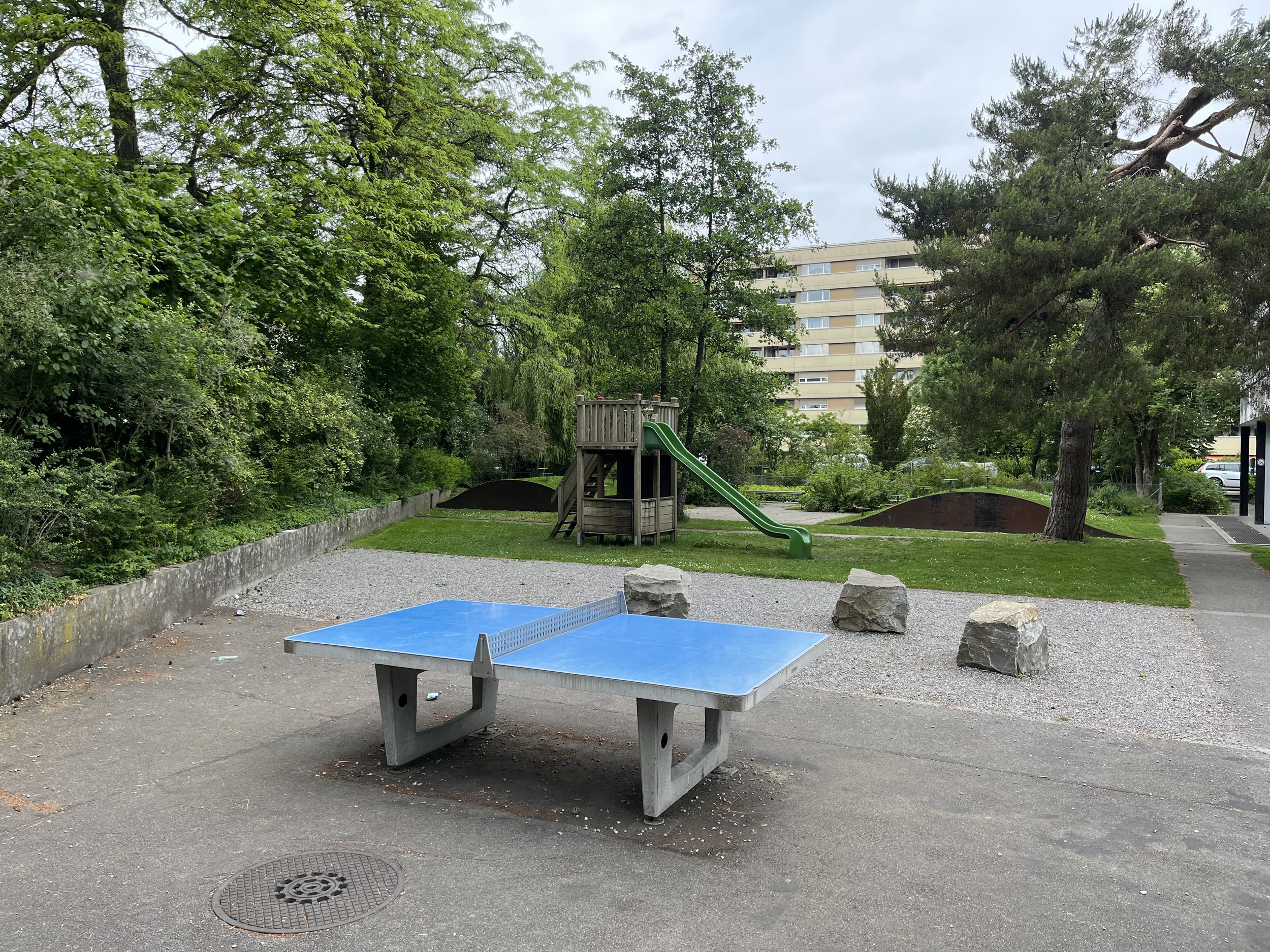
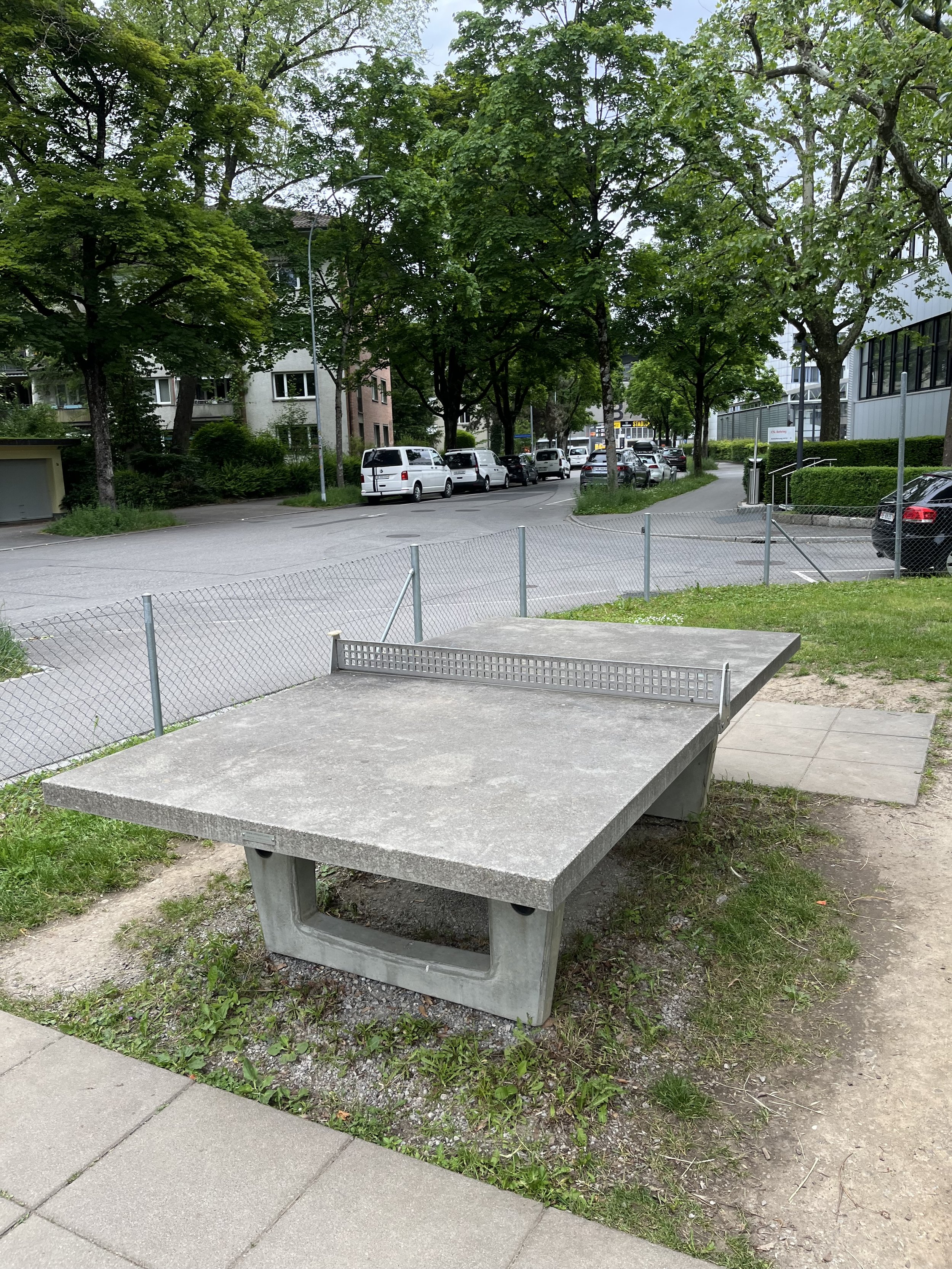
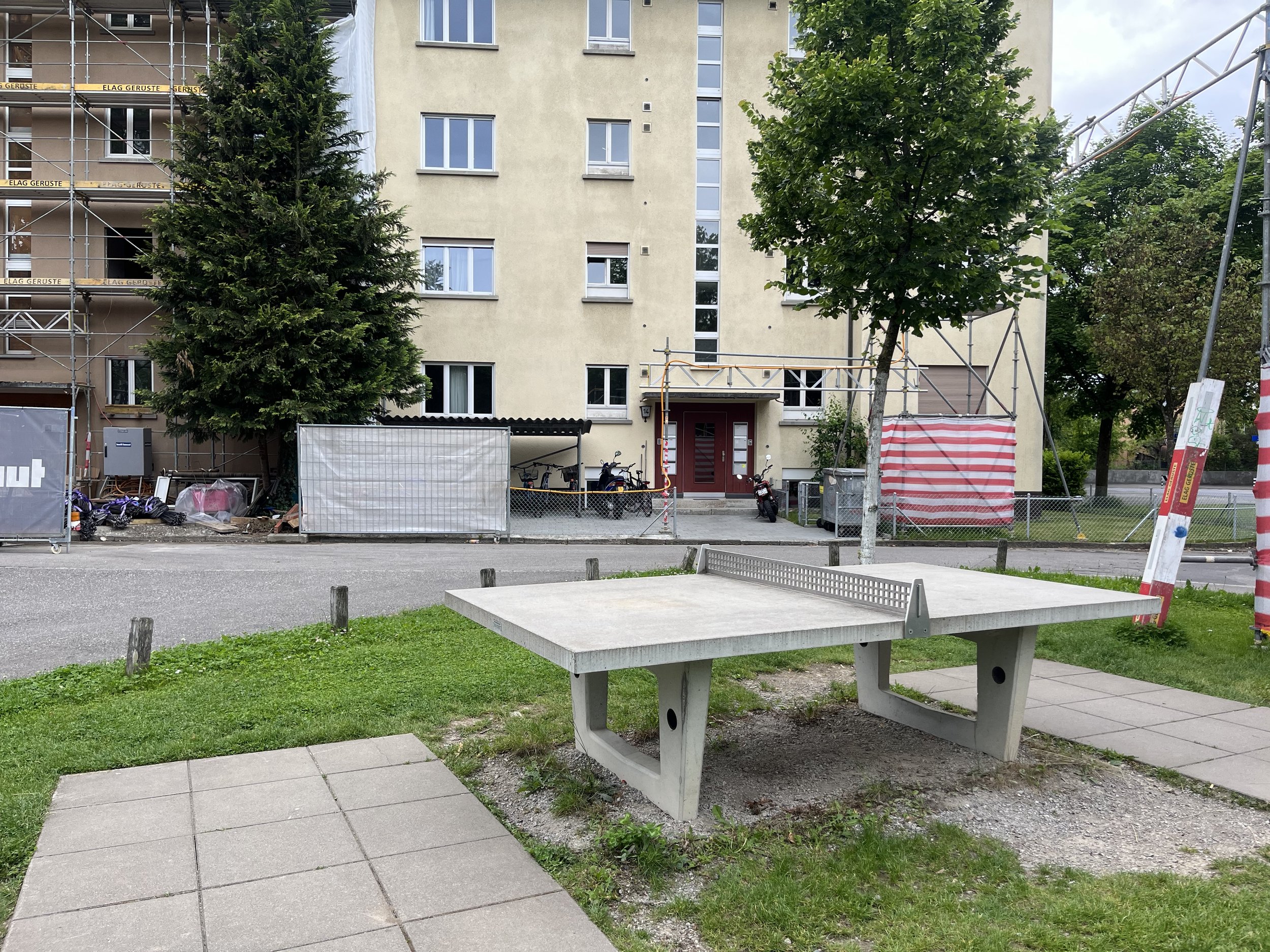
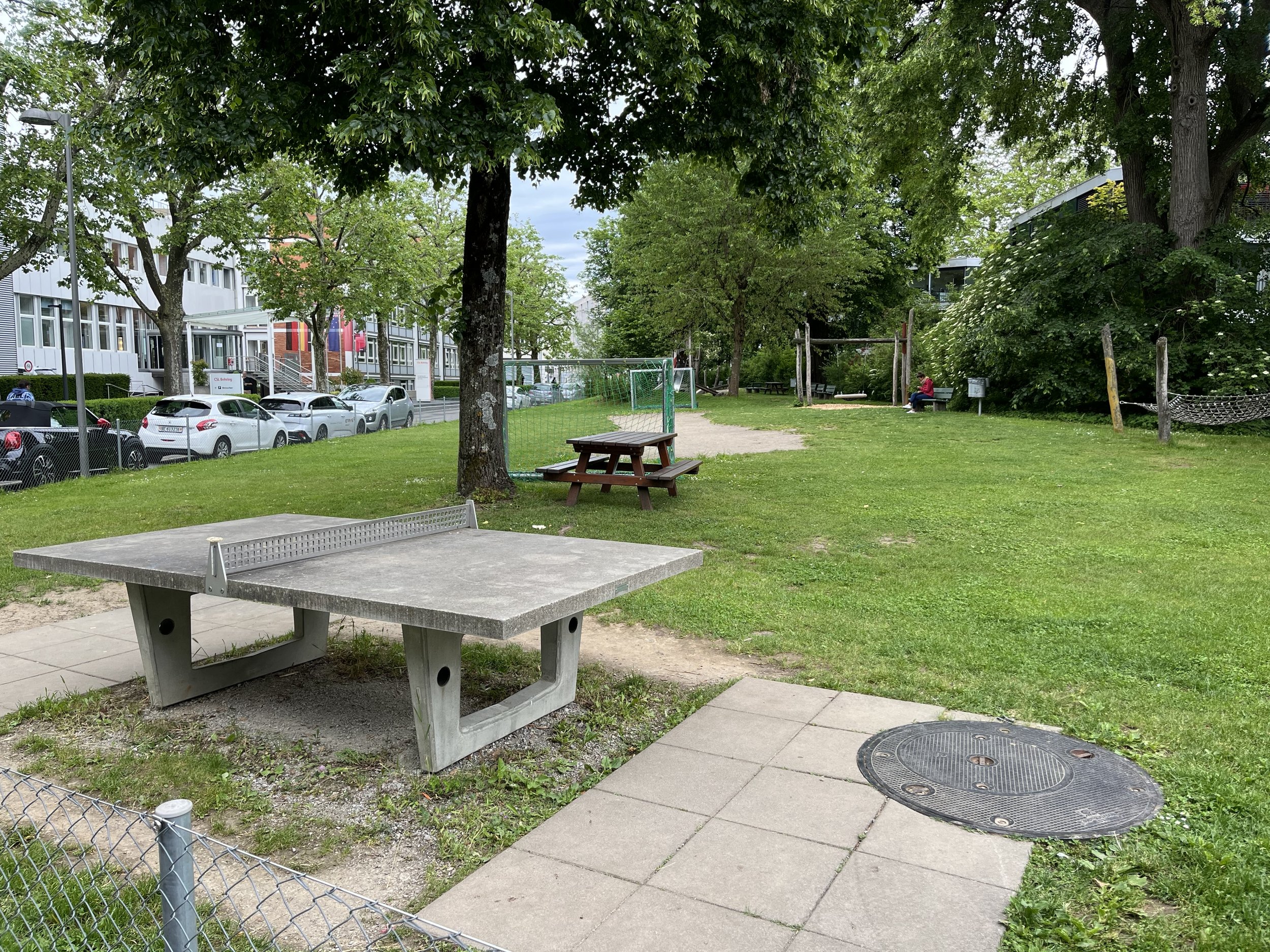
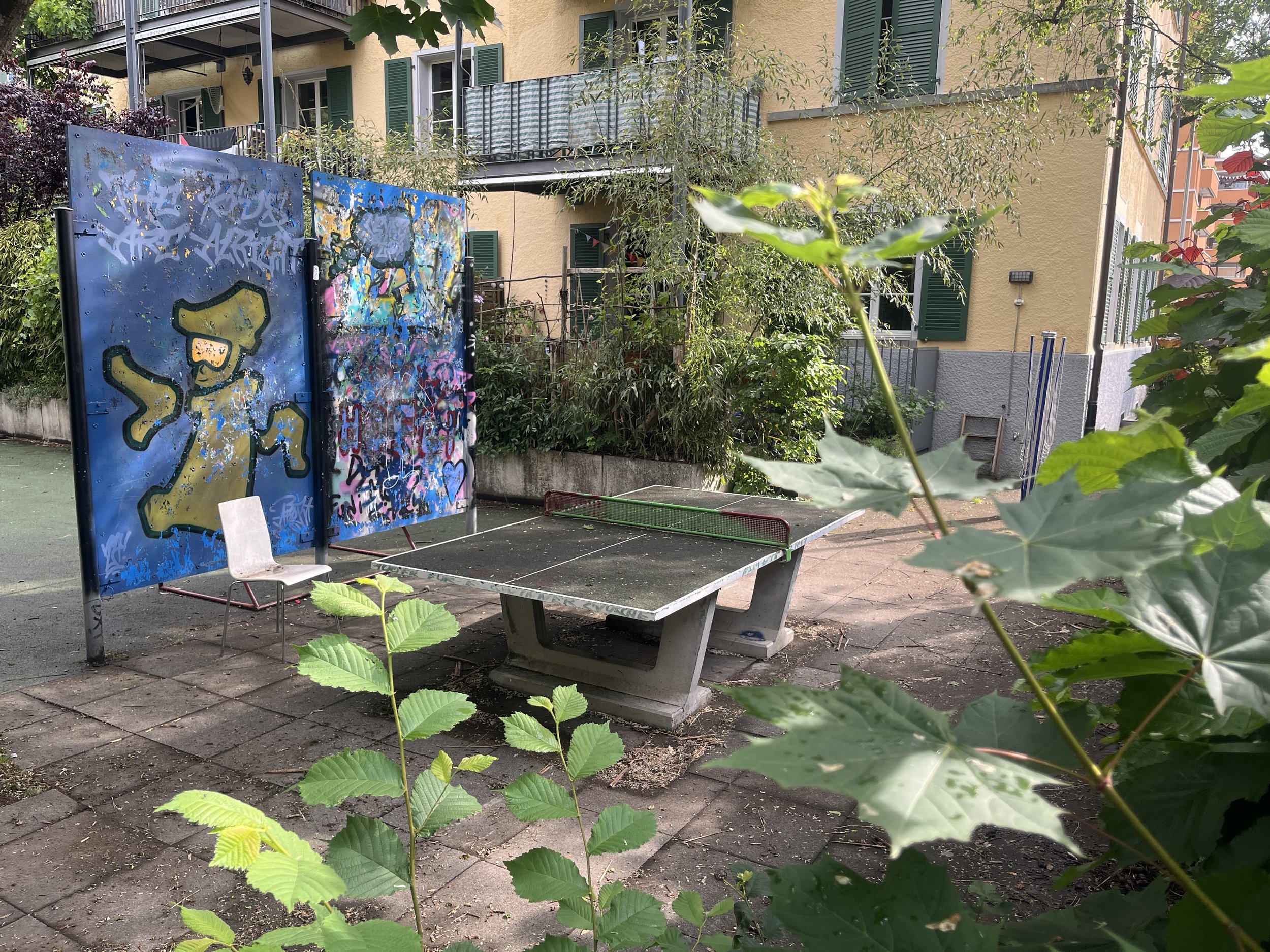
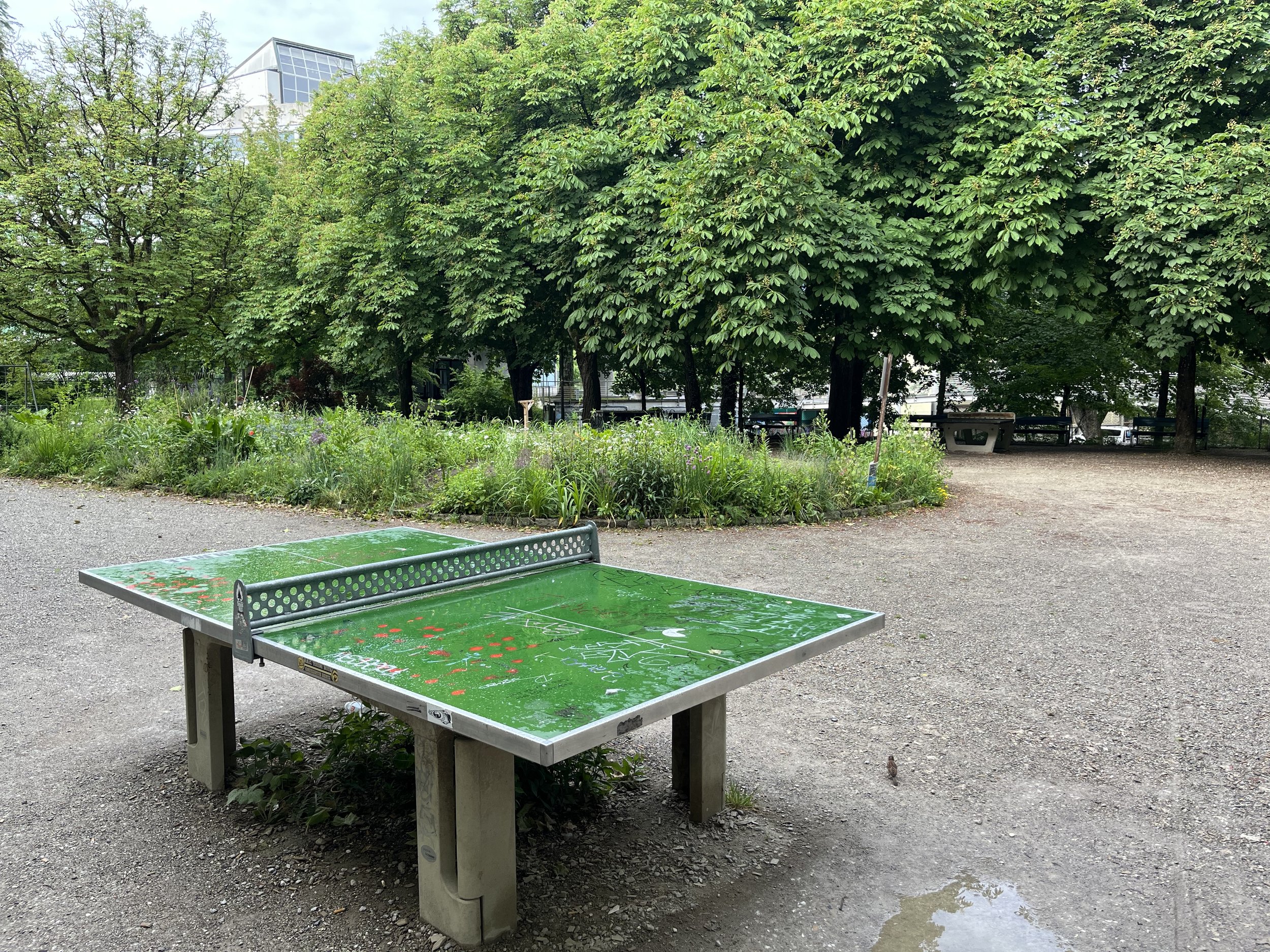
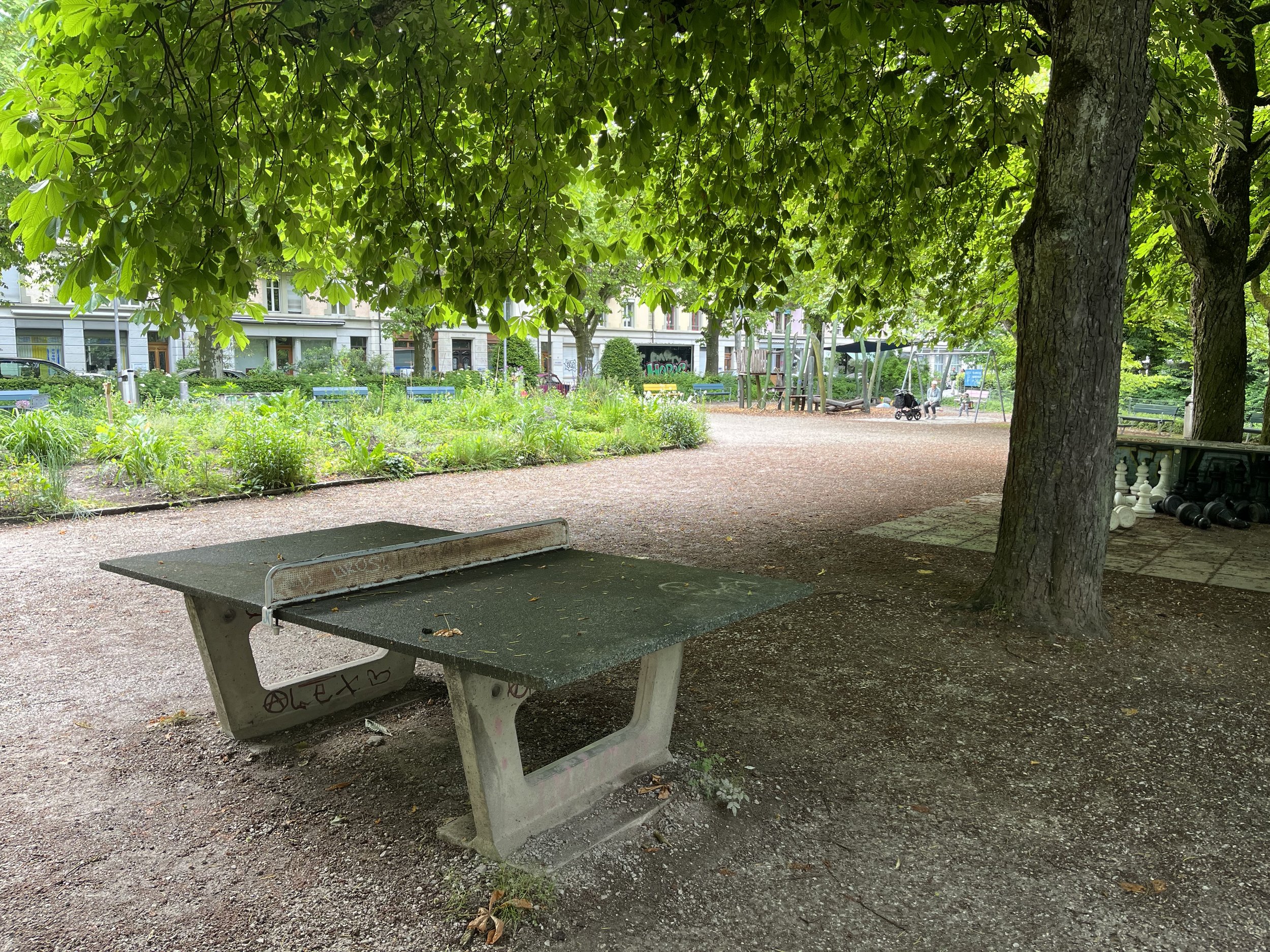
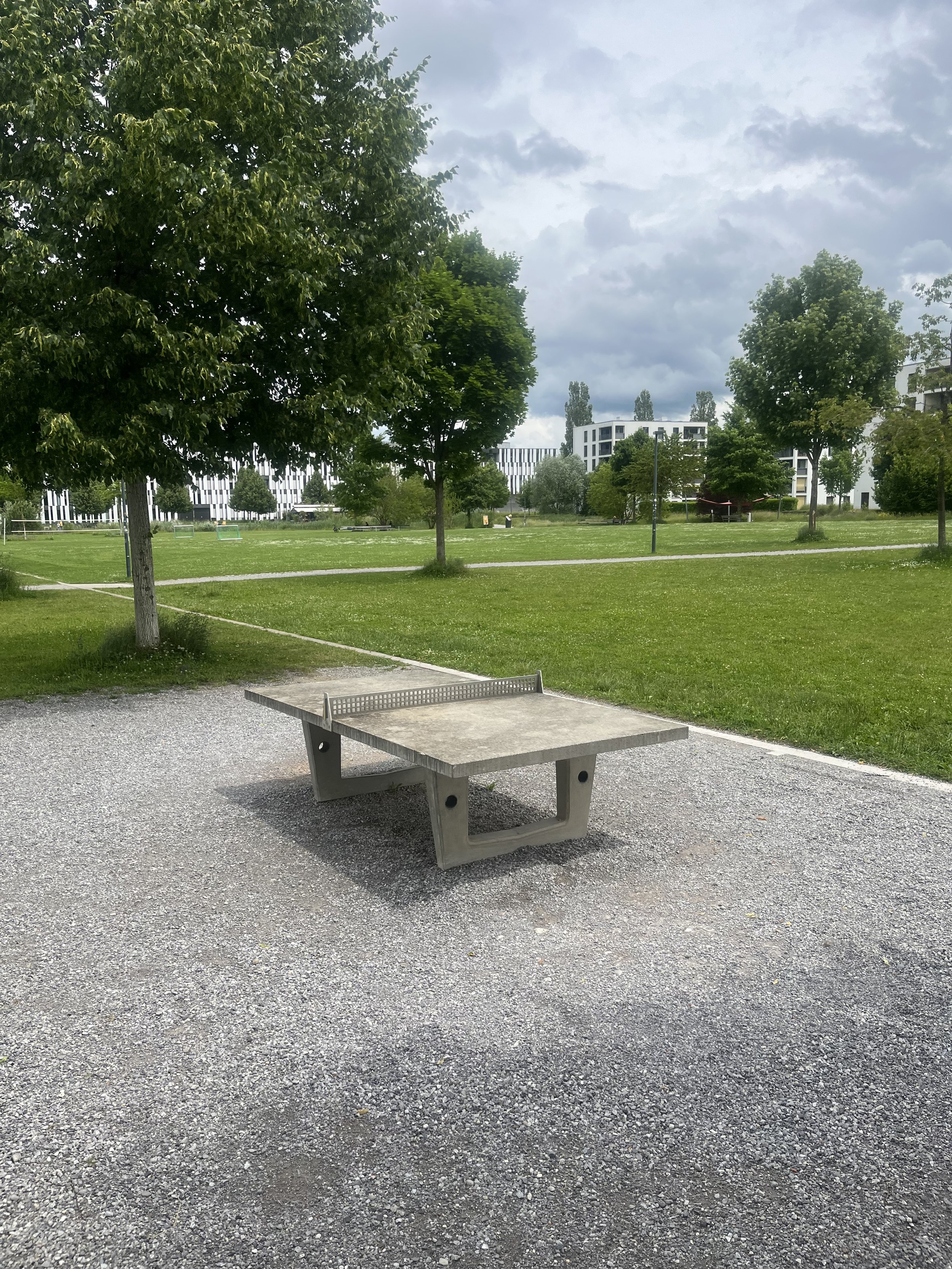
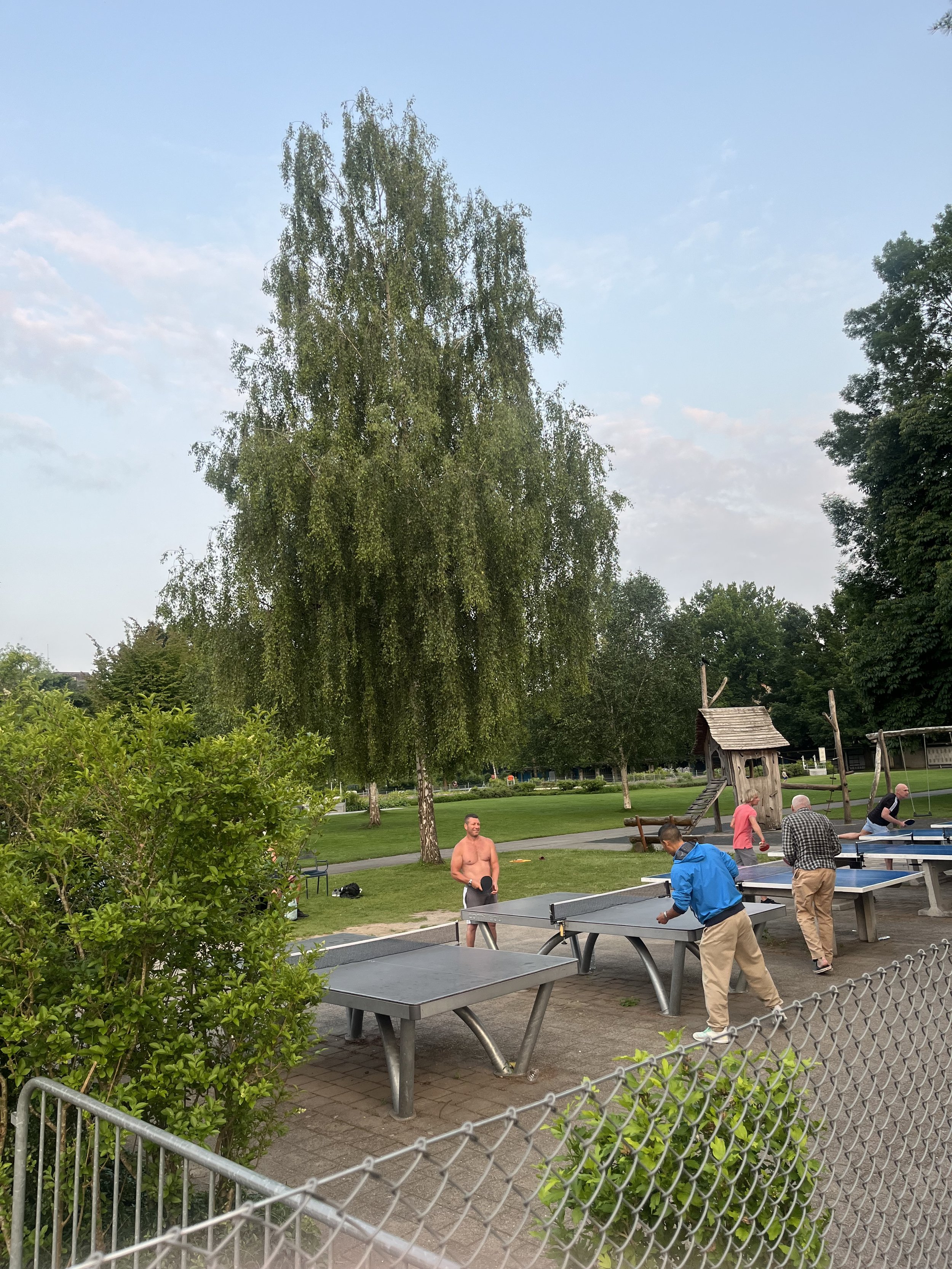
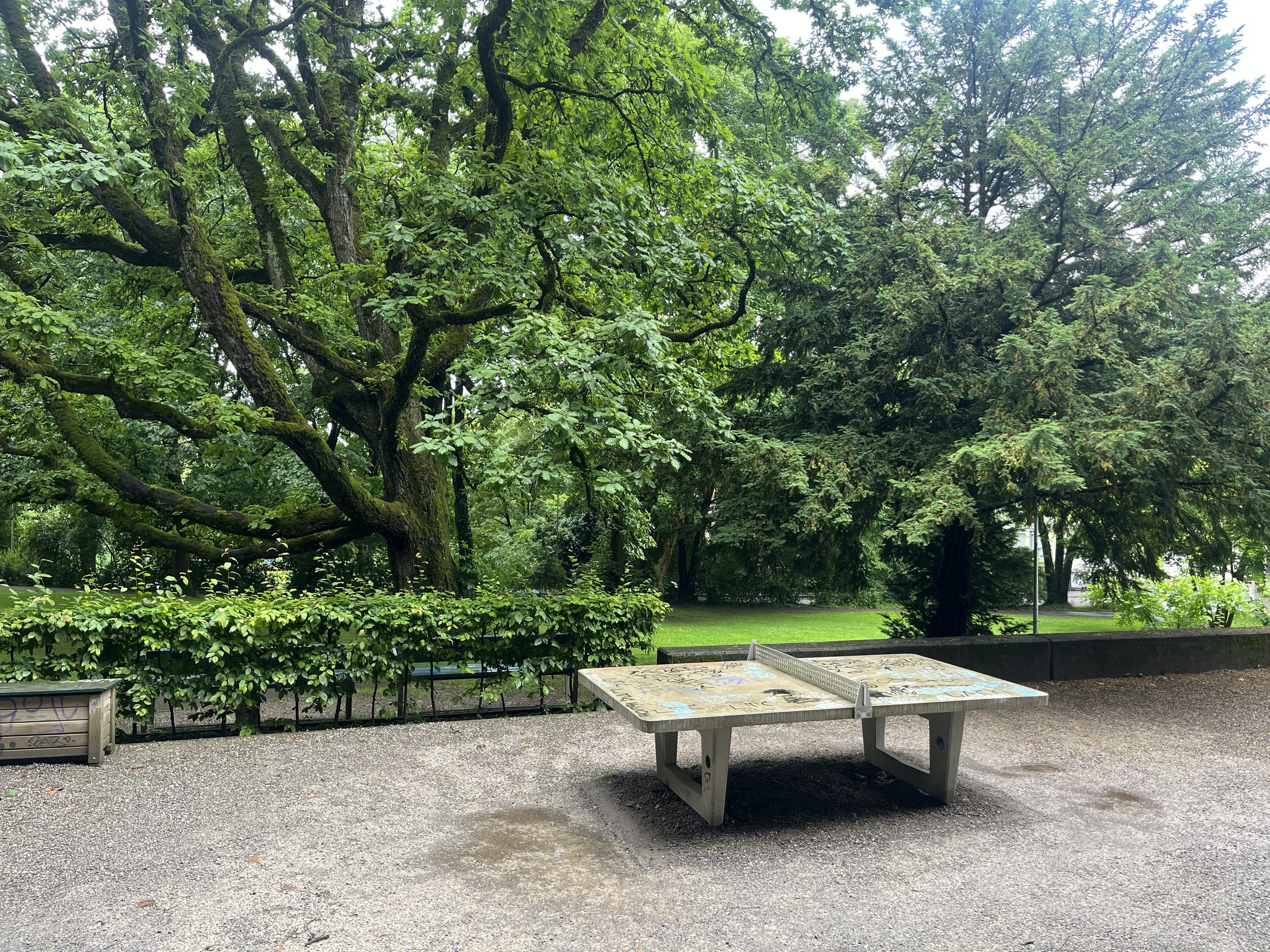
Big circular swings
Wander through any neighborhood in Bern and you’ll eventually stumble upon one of these types of swings.
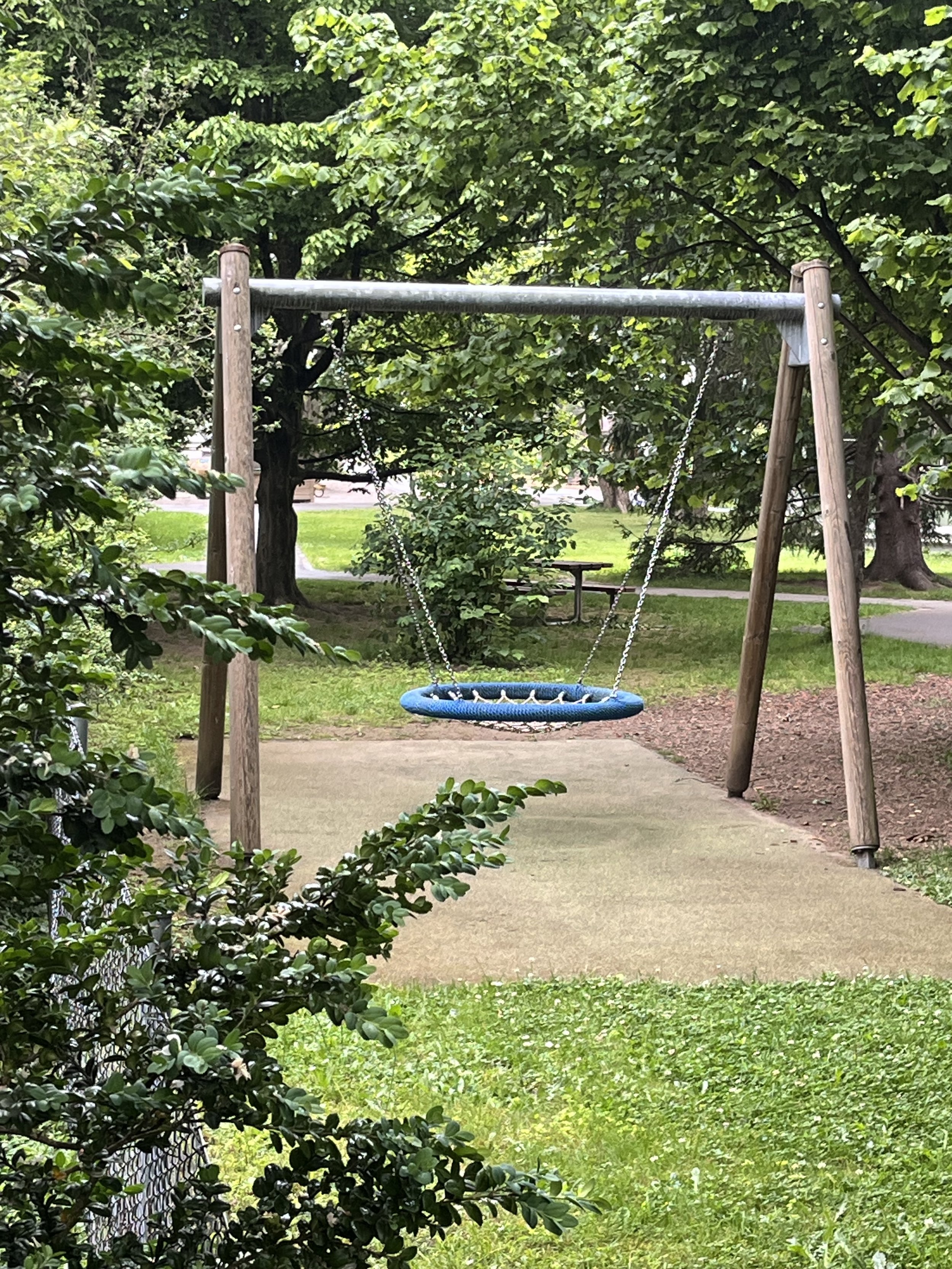
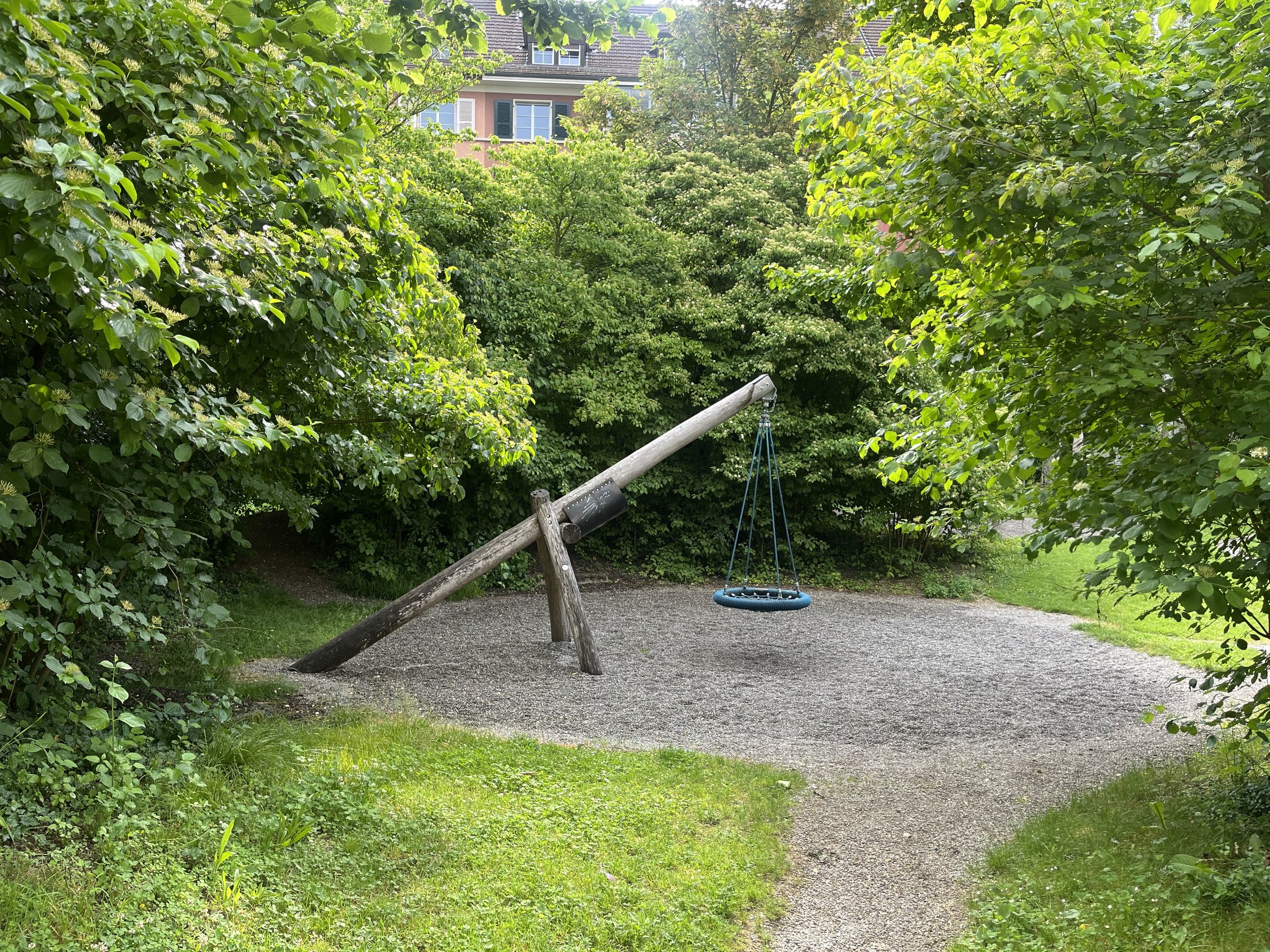
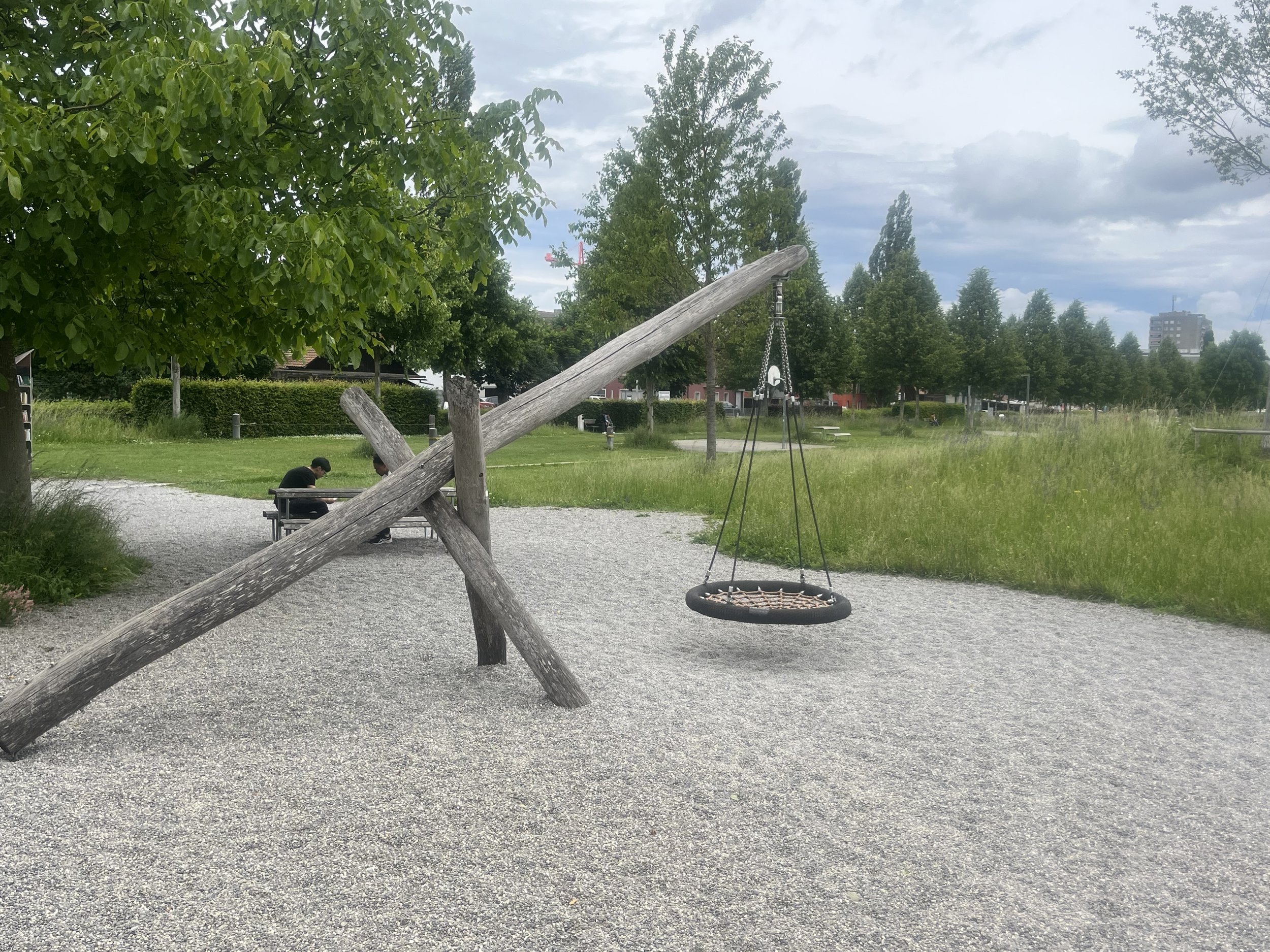
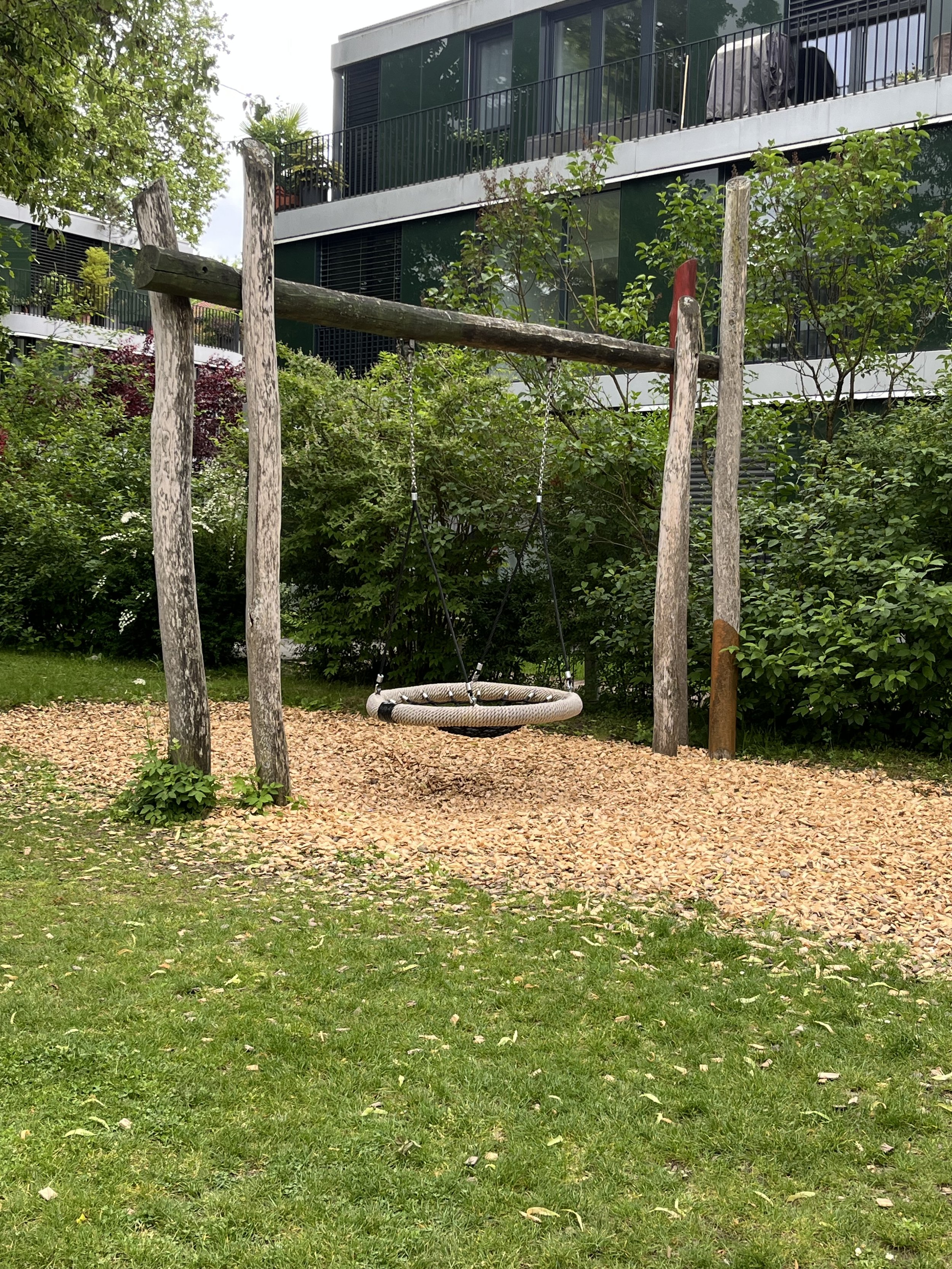
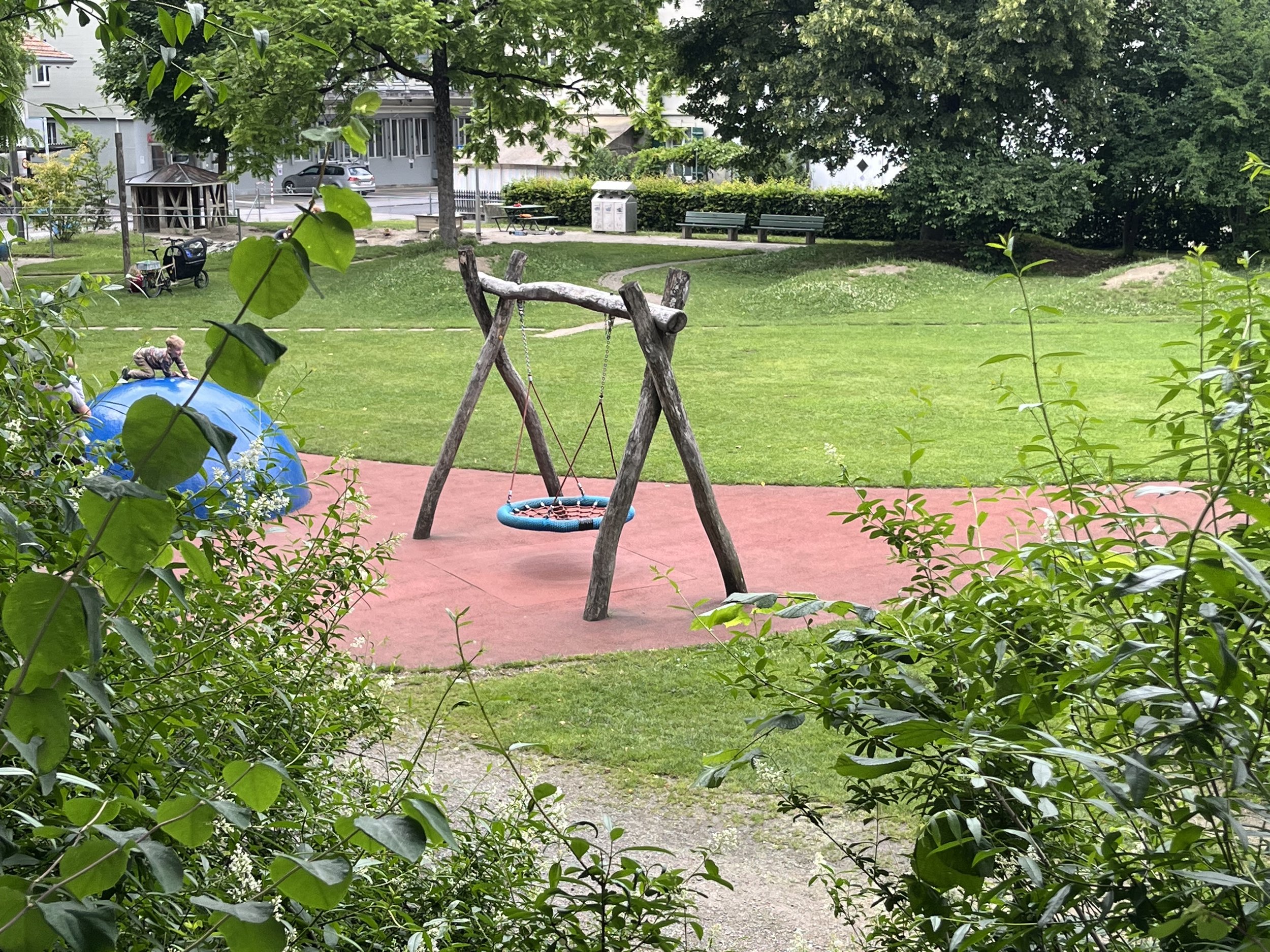
Drinking in public
Beer on the tram? Go for it. A glass of wine while strolling the Aare? Santé. There’s no open container law breathing down your neck here, just the expectation that you behave like an adult. It’s less about restriction and more about responsibility. The result? Teenagers slurping back brewskis by the river without turning the place into a frat party. Parks feel like picnics, not police zones. It's oddly refreshing, like the crisp quöllfrisch you crack open as you walk through the sliding doors of the grocery and enjoy on your walk home with nobody batting an eye.
Geburtstafeln
As I walked through Bern, I kept spotting these painted wooden cutouts staked into front gardens or propped against fences and hung in windows, cartoonish images of bears, storks, or racoons always accompanied by a child’s name and birth date. These are Geburtstafeln, or birth boards, part of a Swiss tradition that announces the arrival of a new child with the same formality one might use for a shop opening or a small-town election. They’re usually handmade by family or neighbors, left up for months or years, slowly weathering with time.
Visually impaired
As I wandered through the city, I kept noticing these curious raised lines painted onto the sidewalks, thin, orderly grooves running parallel with each other in straight paths. I couldn’t figure out what they were for. I thought maybe some kind of minimalist street art? A futuristic traffic system for very small robots?
And then I saw it.
A teenager, oversized sunglasses perched on his nose, swept past me confidently with a white cane, the kind with the little ball at the end, known to those in the know as the standard issue for the visually impaired. And just like that, it clicked. These weren’t decorative. They were functional. A low-tech solution in an increasingly technical world.
What I’d been blindly stepping over were actually part of a carefully engineered tactile navigation system for the blind and visually impaired. Once you see them, you see them everywhere: raised parallel strips embedded in the pavement, stretching through tram stops, city squares, crosswalks like invisible handrails underfoot.
This financial incentive has worked. Switzerland now boasts one of the highest recycling rates in the world, with over 50% of all waste being recycled or composted.
So, want to throw away more? Buy more expensive bags.
Want to save money? Recycle like your life depends on it.
Most neighborhoods have designated drop-off points for glass, PET plastic, aluminum, compost, textiles, batteries. Which I found myself actually enjoying taking out the recycling, something that, back in the States, would’ve sounded like a joke. I felt a quiet sense of camaraderie. There’s a kind of energy at the communal recycling stations. Strangers show up with bags full of glass bottles, flattened cardboard, rinsed-out yogurt cups and for a few moments, place each item in its proper place. Maybe it’s just me, still new to it all, but I feel this subtle, unspoken vibe, like, “Hey, nice, you are recycling too.” It’s not dramatic. No one pats you on the back or even makes eye contact. But it’s nice to know that people are doing their part.
Recycling & garbage
In the 1990s, Switzerland found itself producing way more household waste than was sustainable. Rather than just raise taxes across the board, Swiss policymakers implemented the polluter-pays principle, if you produce more waste, you pay more to get rid of it. Simple and fair.
Enter the Gebührensack system: You don’t pay for garbage collection through a flat fee or tax, you pay by the bag. In most Swiss cantons, household trash must be disposed of in official government-issued bags, These bags vary in color depending on the canton or village and cost nearly $20 for a roll of 15, which means every banana peel, greasy napkin, and empty toothpaste tube suddenly carries weight, both physically and financially. Each bag is printed with a barcode and registered with your canton, so using unofficial bags or trying to “cheat” the system, like sneaking all of Lou’s dirty diapers in public containers could lead to a fine, or in my case, a charged, passive-aggressive glare.
All you do is leave it out on the collection days and they swing by and grab em!
Let’s go shopping
Grocery shopping requires a bit of foresight and their hours leave me scratching me head. Most stores close by 8 p.m. on weekdays…except Thursdays, when they stay open until 9 p.m. and Saturdays 5 p.m. On Sundays, they’re completely closed, except in the train station or gas stations.
I cant tell you the number of times I’ve forgotten and found myself in pickel between either having to go to the train statin or just staying snack-less on a Sunday.
cereal on the right, muesli (granola) on the left
bread section
clever? ANNOYING
all cylindricl containers dont come with lids, you must buy seperatly
these weird and tall 1.5 L bottles
egggs are not refreidgerated
Rosti, a swiss staple. AKA heavy hashbrowns
does anyone want a...HORSE steak??
then it prints out a little sticky
weigh scale
in store recycling

